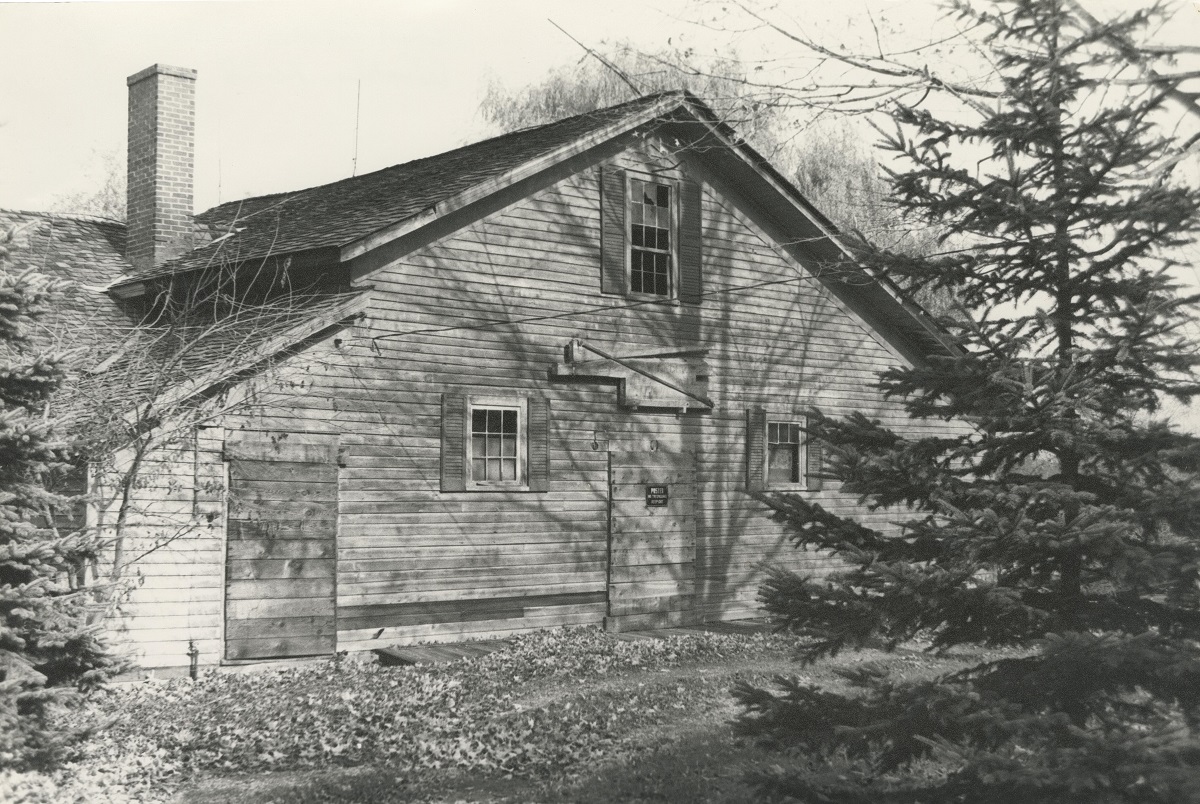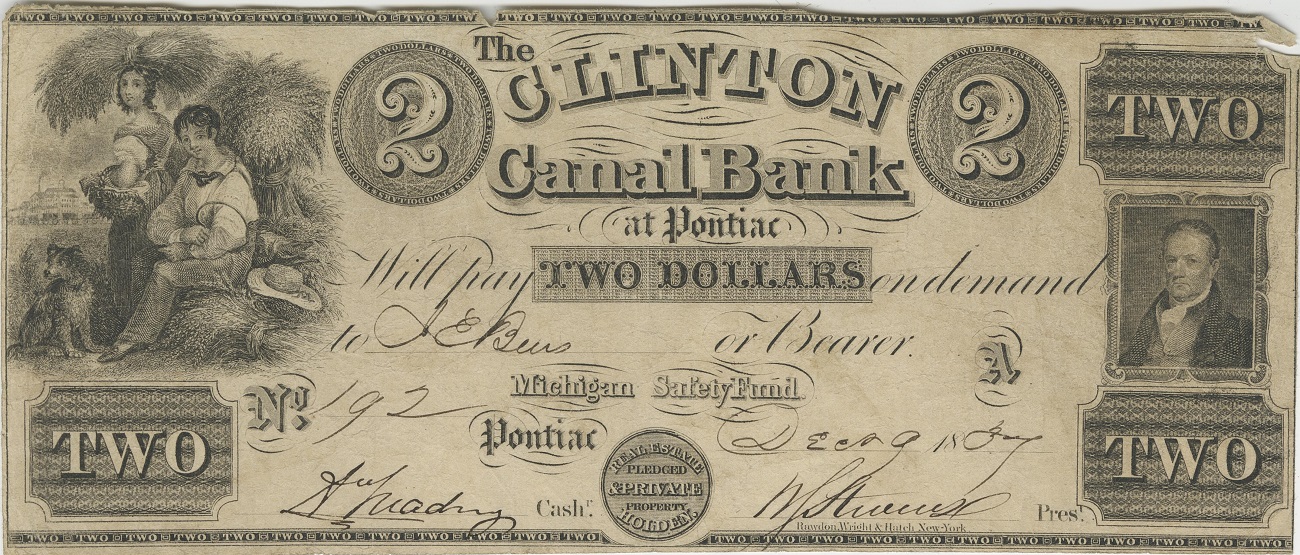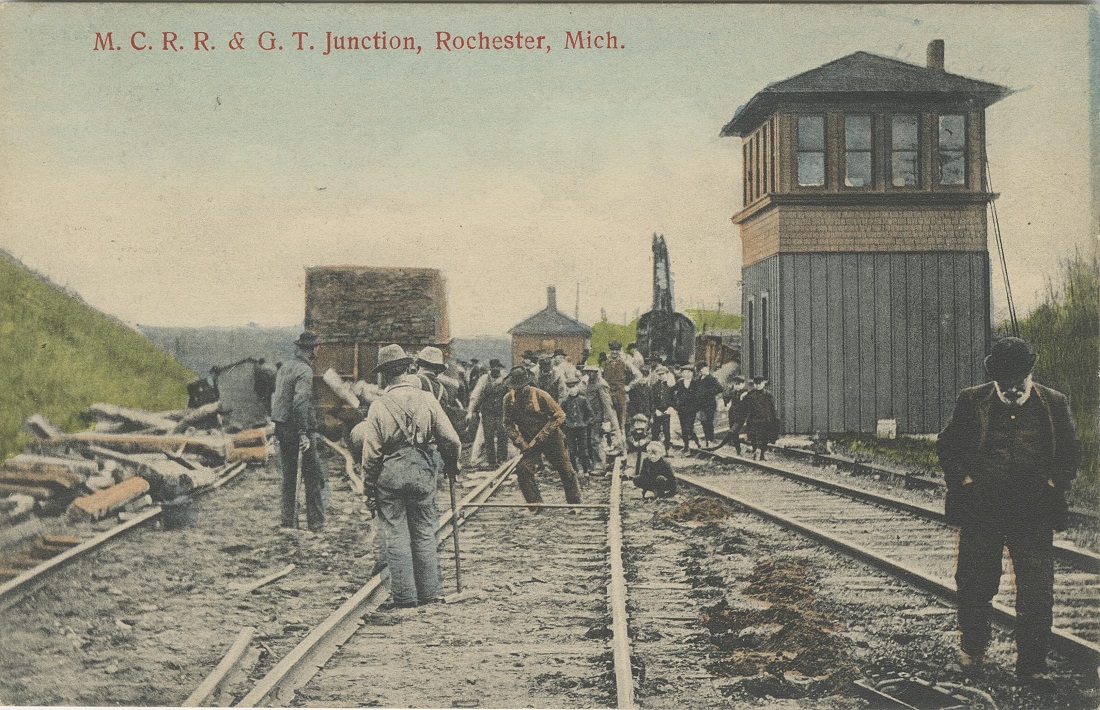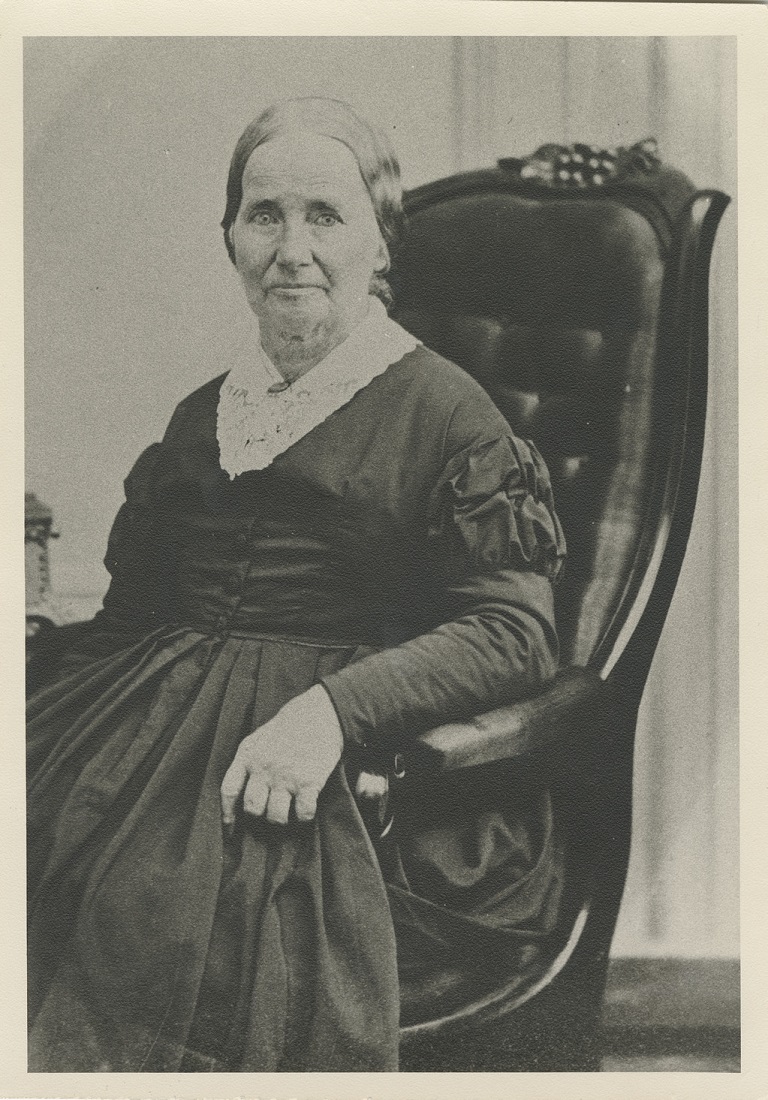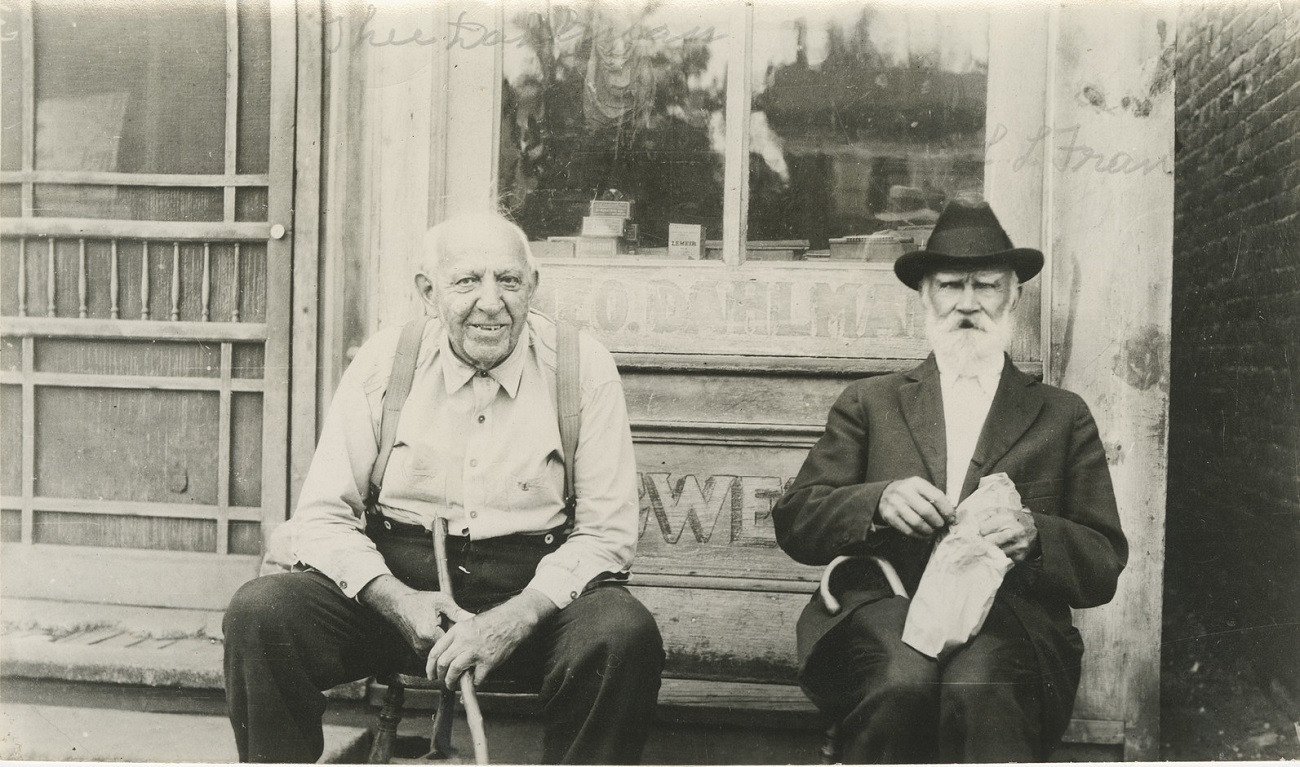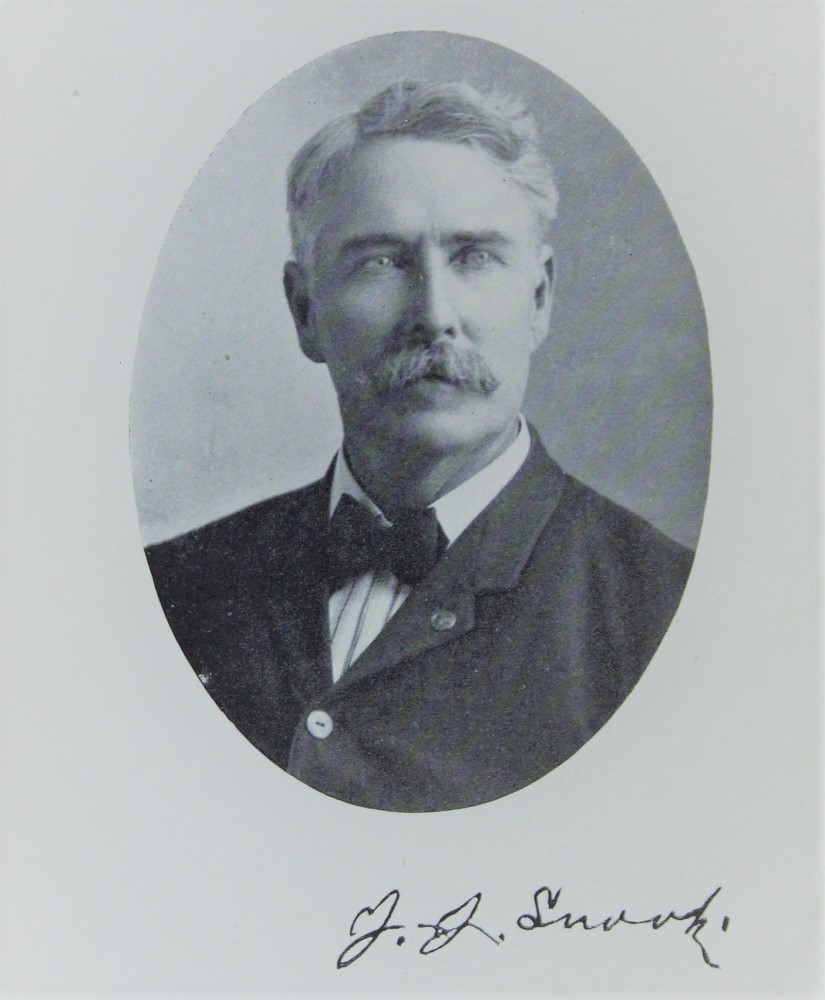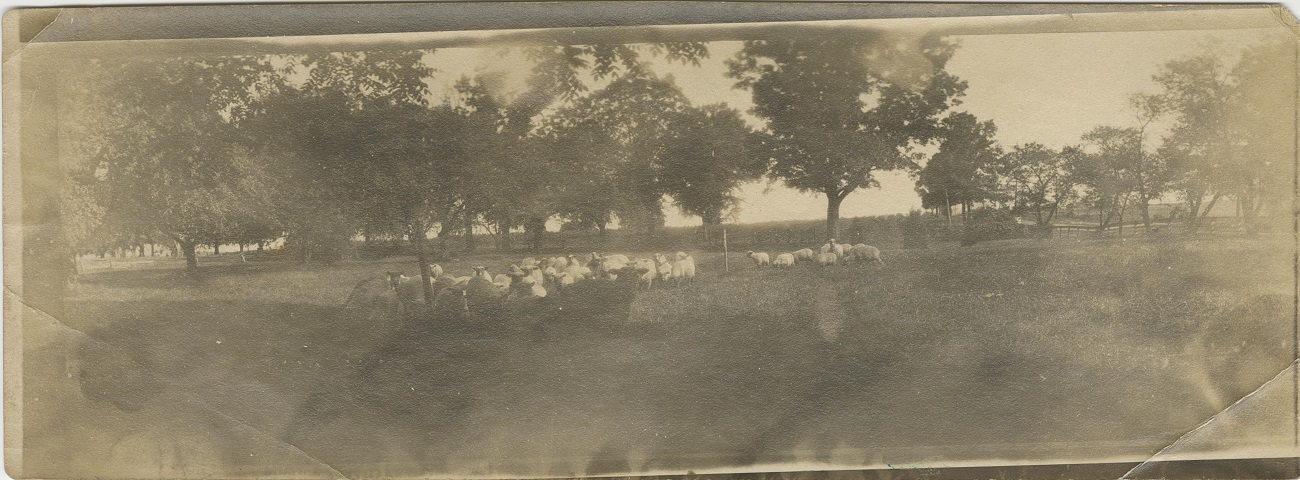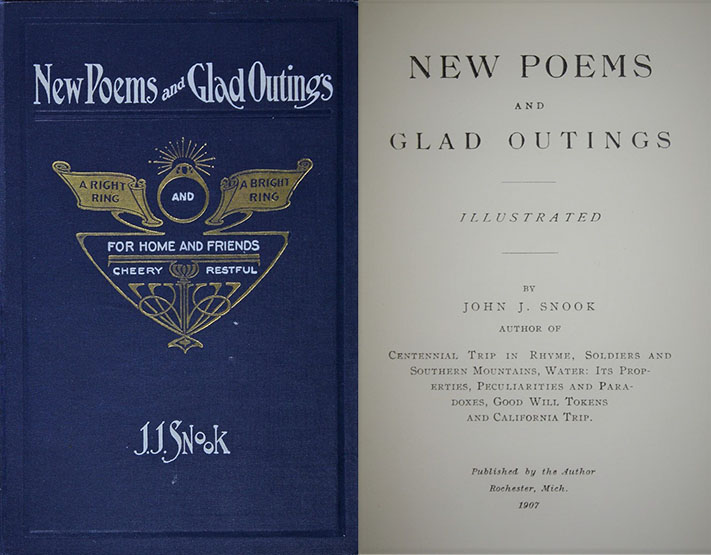"The Land of Healthful Delight"
Highlights from the Rod and Susan Wilson collection of Rochester History
This exhibit highlights selected items from the Rod and Susan Wilson collection of Rochester History, which the Wilsons donated to Oakland University in 2019. The collection documents the history of Rochester and Avon Township through thousands of photographs, letters, postcards, publications, and artifacts.
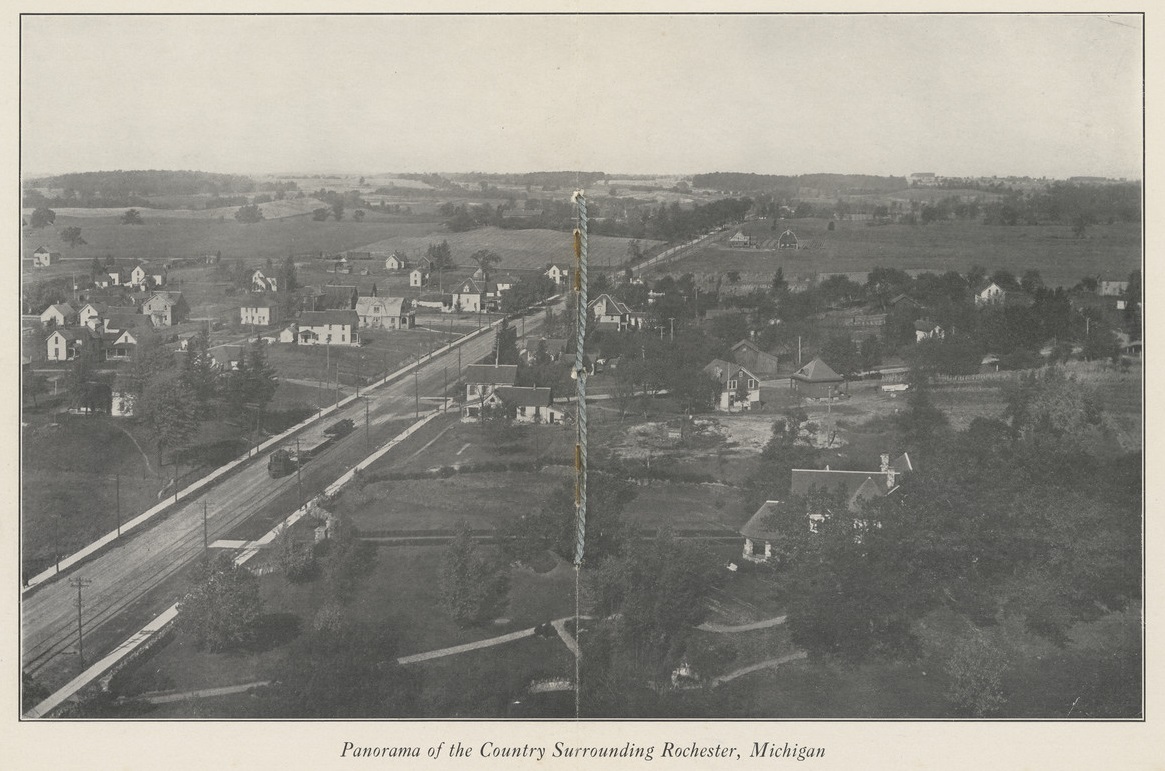
Excerpt from a publication of the Rochester Board of Commerce, ca. 1900
About the Rod and Susan Wilson collection
Rod and Susan Wilson are active collectors of Rochester history memorabilia and members of numerous local and state historical organizations such as the Rochester-Avon Historical Society (RAHS).
They were among leaders of the RAHS group credited with historical preservation projects such as the restoration of the World War II memorial and a Federal Art Project painting entitled “Industrial Environment of Rochester High School” by Marvin Beerbohm.
Their families have deep roots in the Rochester Avon area.
- Rod’s maternal side of the family has been in the area since 1822, when Stephen Reeves purchased property along Galloway Lake (in today’s Auburn Hills). Reeves became the first probate Judge elected in Oakland County.
- In 1837, Susan’s fourth great-grandfather, Jacob Miller, purchased 360 acres at the corner of today’s Adam’s Road and Avon Road – later giving his name to the lake there. Rod and Susan are both 7th generation inhabitants of this area.
The Rod and Susan Wilson collection is a labor of love. For decades, Rod and Susan have tirelessly sought out books, photos, manuscripts, posters, objects, and other items documenting the history of the greater Rochester area. Many local residents, hearing about their dedication, donated personal heirlooms. In 2019, the Wilsons generously donated their collection to Oakland University.
Below are highlights from the collection. Together they tell the story of Rochester’s growth from a small village surrounded by farmland to a city in suburban Oakland County.
Watch Rod and Susan Wilson introduce their collection and tell stories of Rochester
Navigate the Exhibit
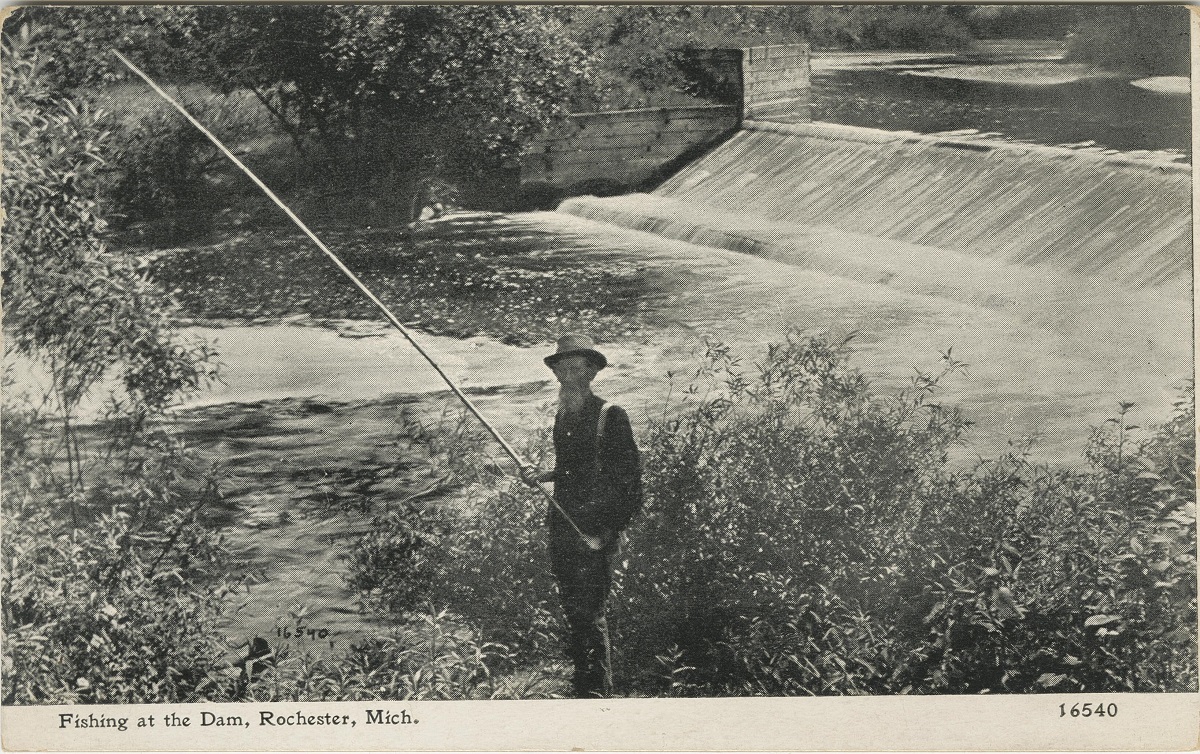
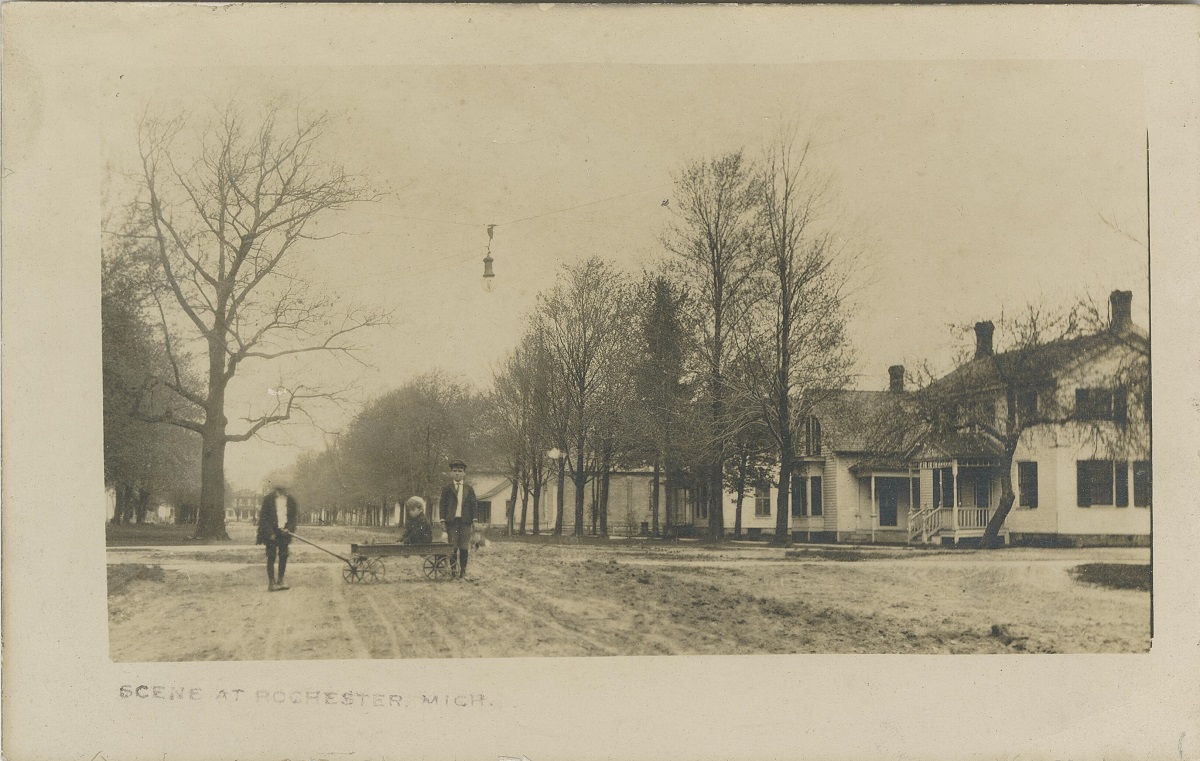
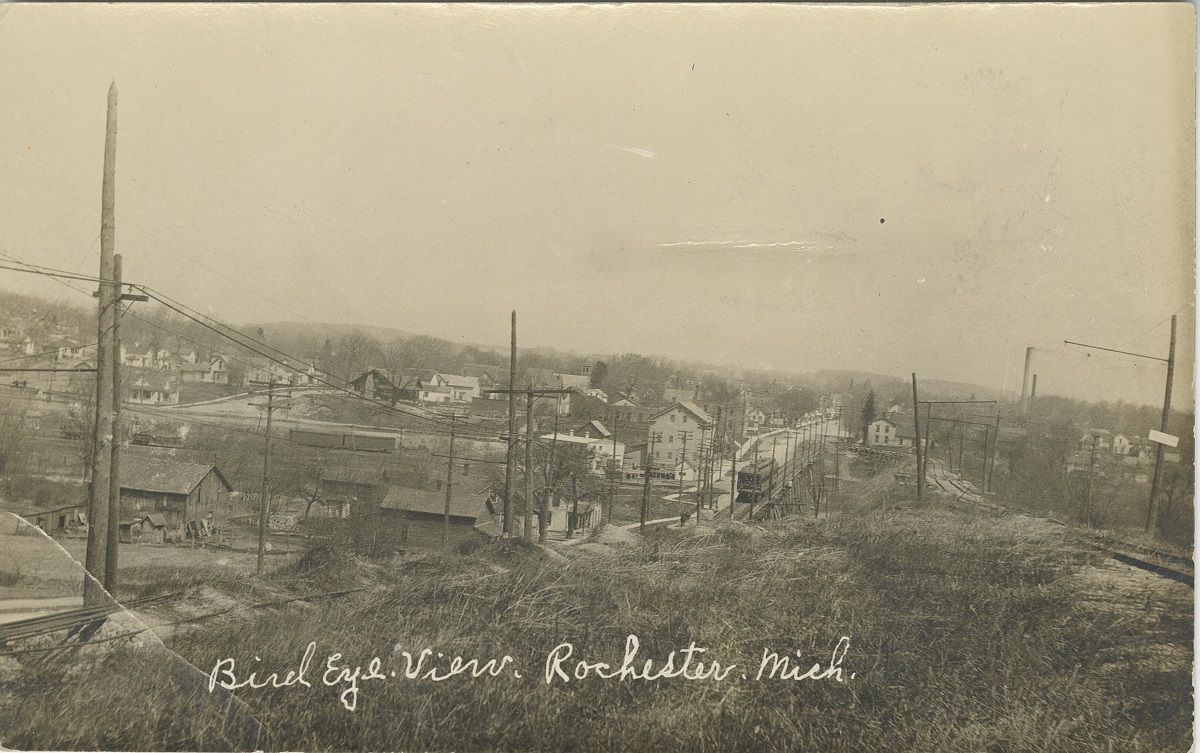
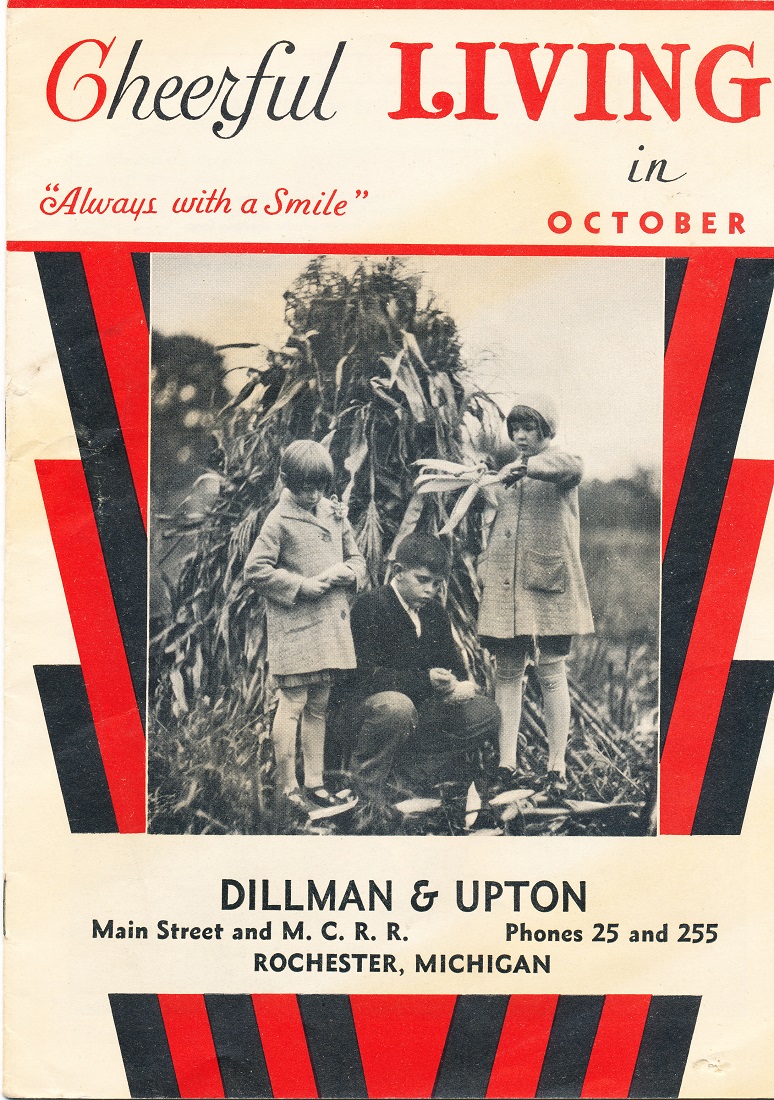
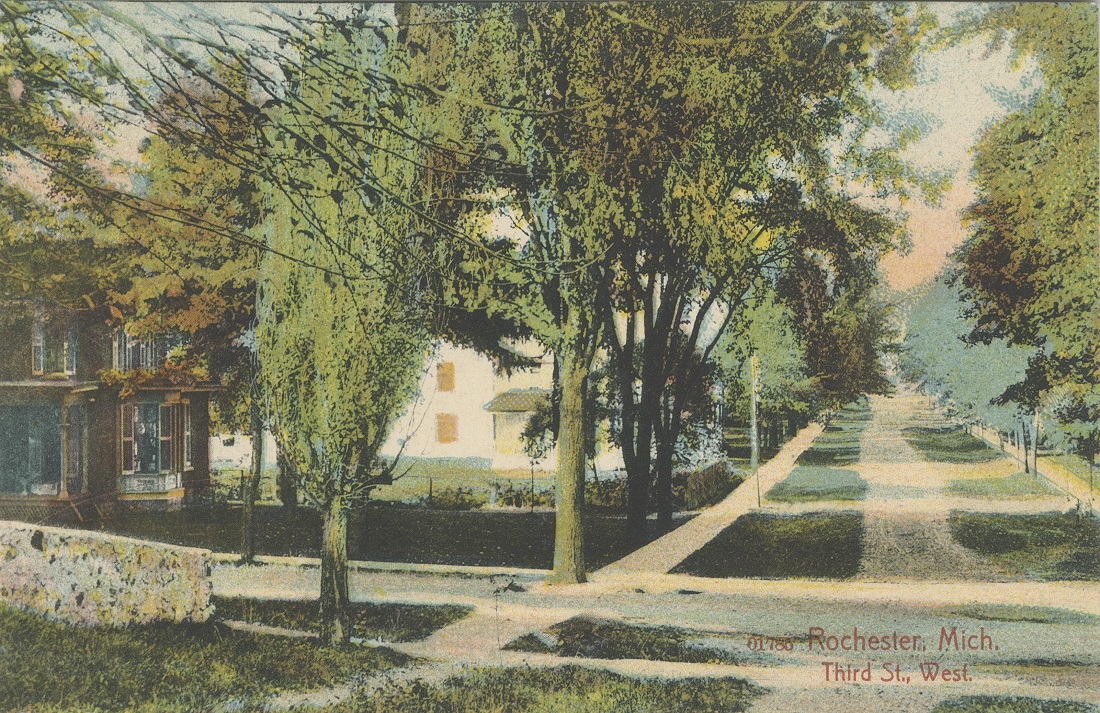
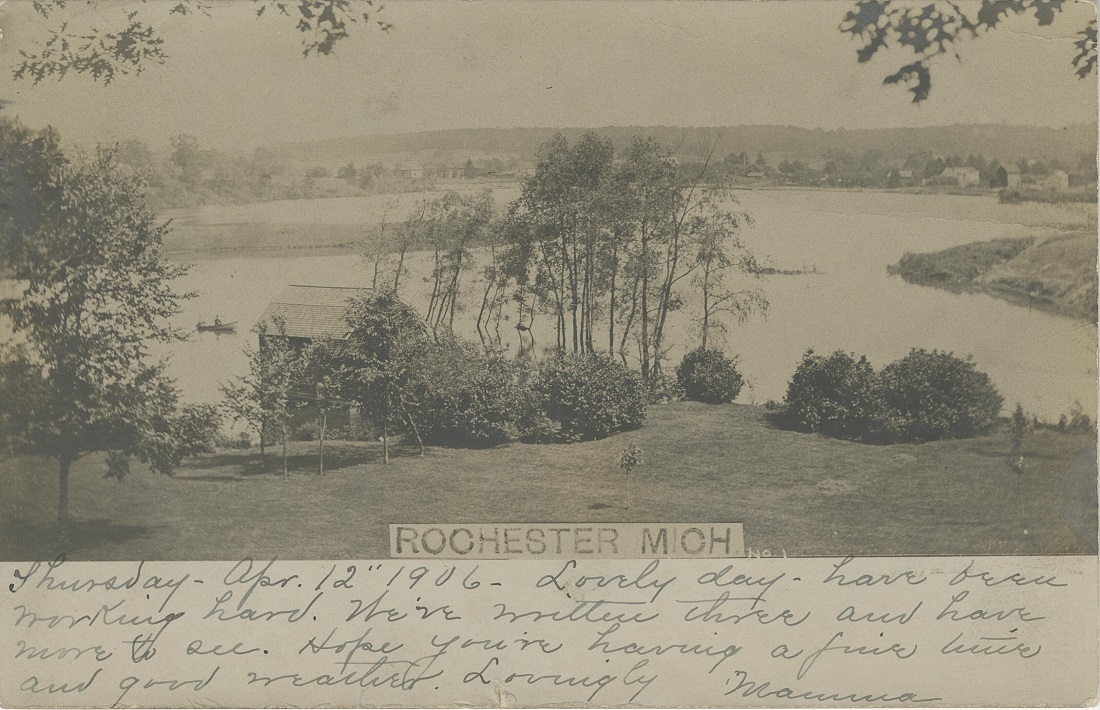
Early Days
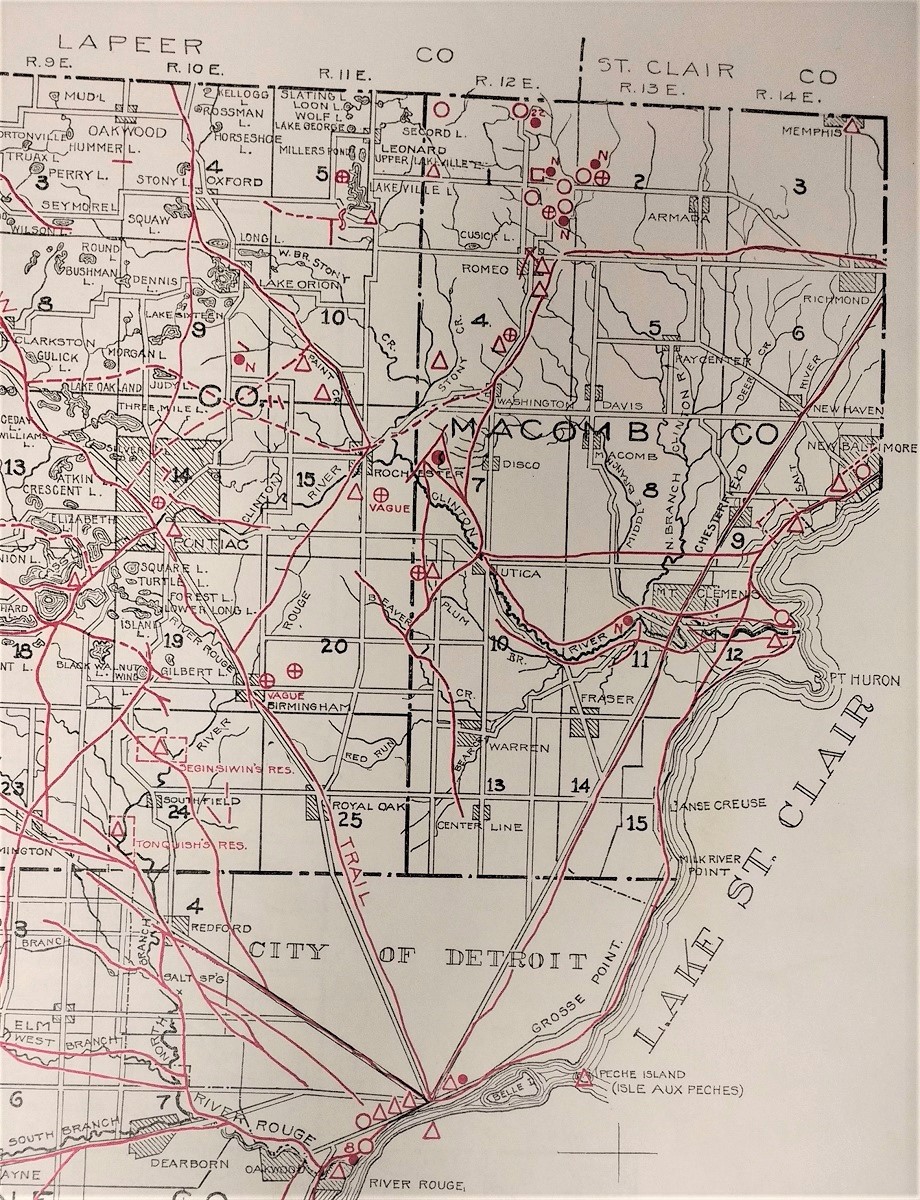
Excerpt from W. Hinsdale’s Archaeological Atlas of Michigan (1931) showing Indian trails, villages, mounds, and burying grounds
For thousands of years Native Americans (of many different tribes, including Ojibwa, Chippewa, Ottawa, Potawatomi) traveled and lived in what has become Oakland County. At the beginning of the 19th century white settlers began to travel to the area.
Early official descriptions as barren and swampy lands gave way to more positive accounts that attracted farmers. James Graham settled on a farm on the banks of the Clinton River in 1817, followed by John Hersey and many others.
After the opening of the Erie canal in 1825, whites flooded the Oakland County area. In 1835 the territorial legislature created Avon Township, which included today’s Rochester and Rochester Hills.
One of the reasons for the attractiveness of the Rochester area was the convergence of the Clinton River, Stony Creek, and Paint Creek. Before steam engines became the norm, stream-powered mills provided much-needed energy to grind grain, card wool, or cut lumber to serve the growing local population.
In 1819 the first sawmill and gristmill were erected by John Hersey on the banks of Paint Creek. In 1825, he built another sawmill, near the burgeoning settlement of Stony Creek, northeast of Rochester.
Travelling to and from Rochester
In 1838, the new state of Michigan encouraged an ambitious project -- the Clinton Kalamazoo Canal -- to connect Lake St Clair to Lake Michigan. Unfortunately, the financial panic of 1837-1841 and the competition of the railway led to the quick demise of the project, with only the portion from Mount Clemens to Rochester being completed.
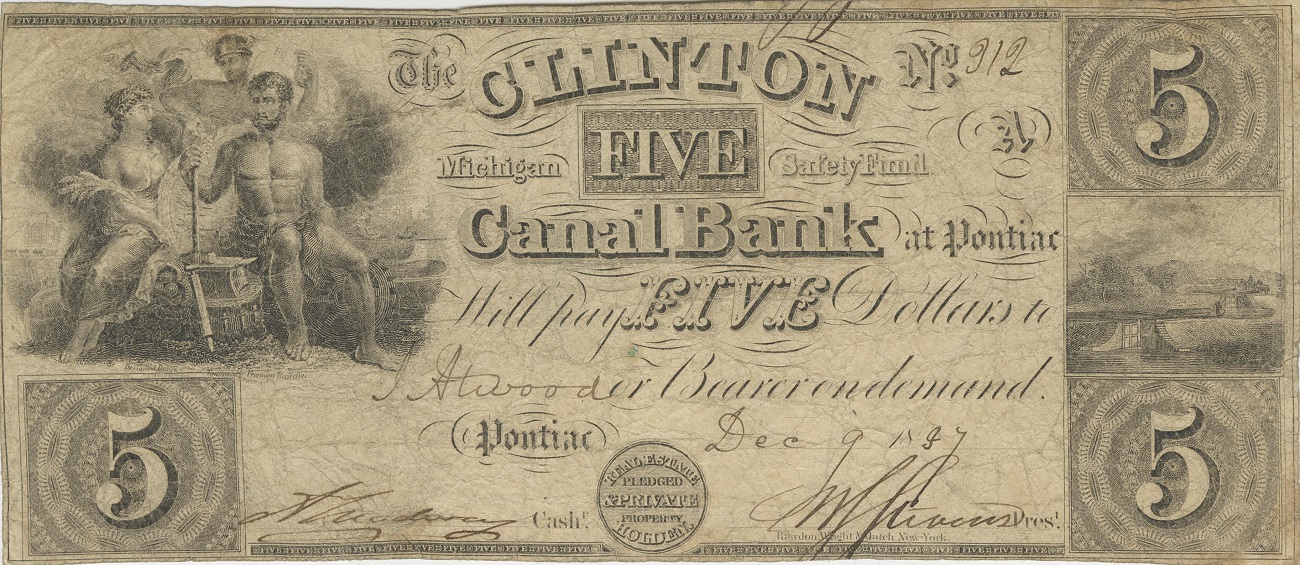
Two bank notes issued by the Clinton Canal Bank of Pontiac, 1837.
The bank was chartered to help finance the project.
In 1869 the village of Rochester was incorporated. The arrival of the railroad in the 1870s and 1880s connected it to Detroit and other neighboring population centers, quickly turning it into a transportation hub and providing efficient passenger and freight service that allowed it to grow rapidly.
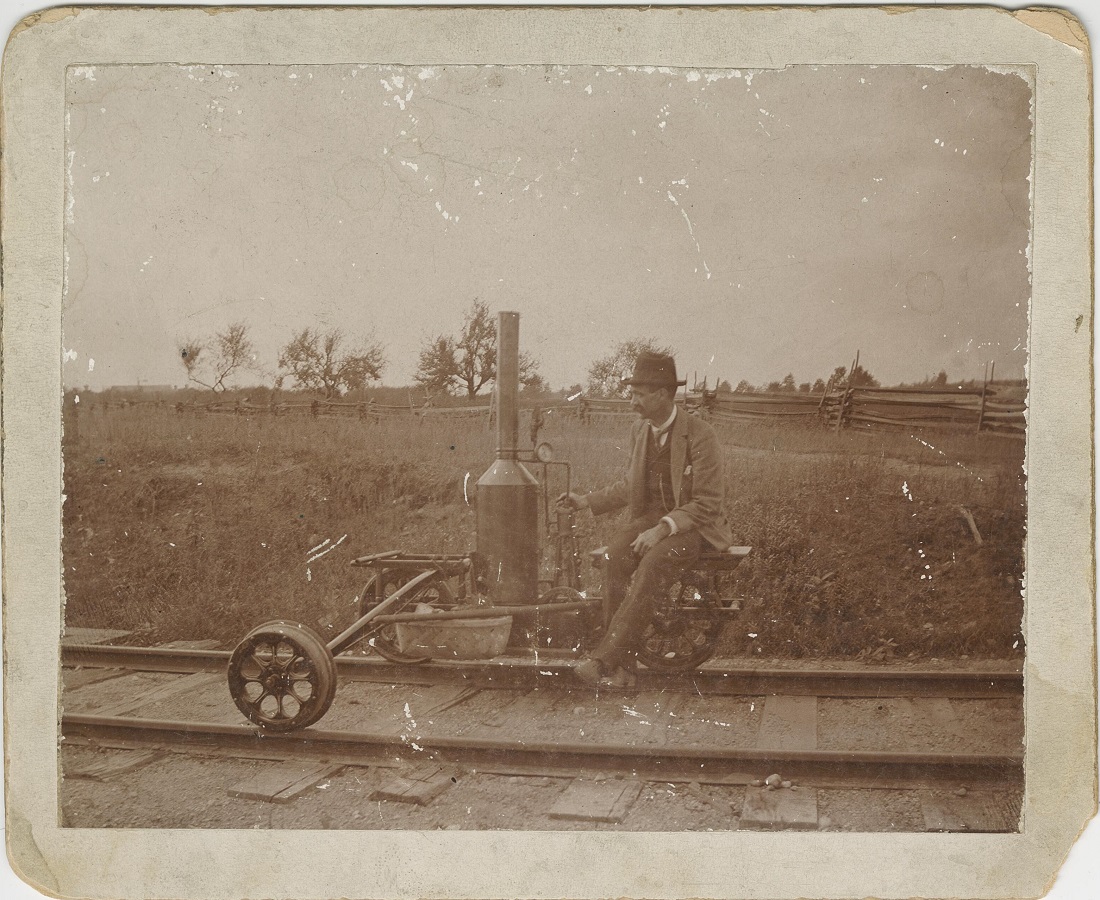
Ed Barnes, station agent at Rochester Junction, on the small steam inspection car he built
On September 27, 1899 the first electric interurban railway car operated by the Detroit, Rochester, Romeo, and Lake Orion Railway reached Rochester.
In 1901, the DRRLOR and 11 other lines were purchased and absorbed into the Detroit United Railway (D.U.R.). Until 1931, the DUR allowed people from the area quick access to Rochester employers.
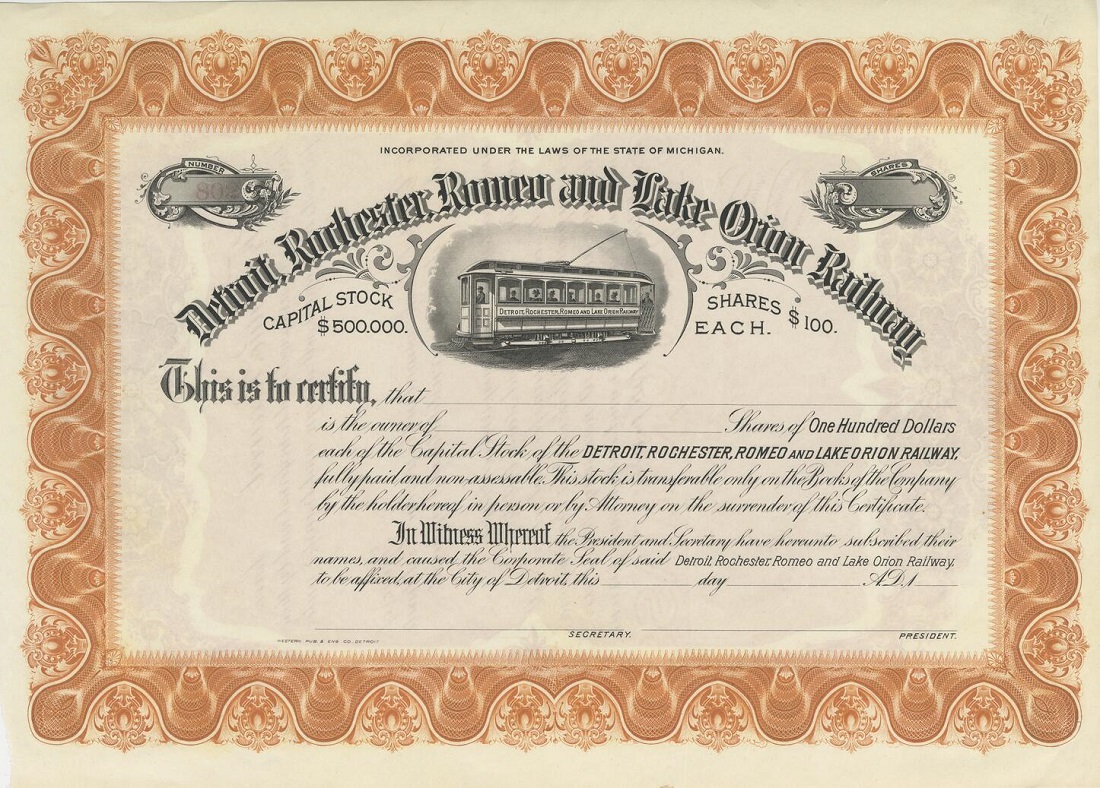

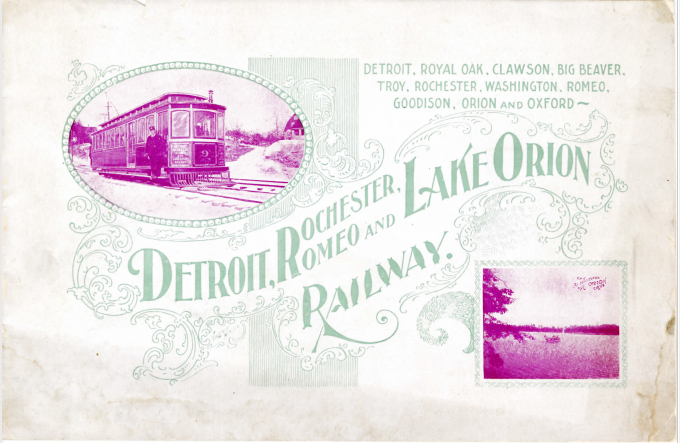
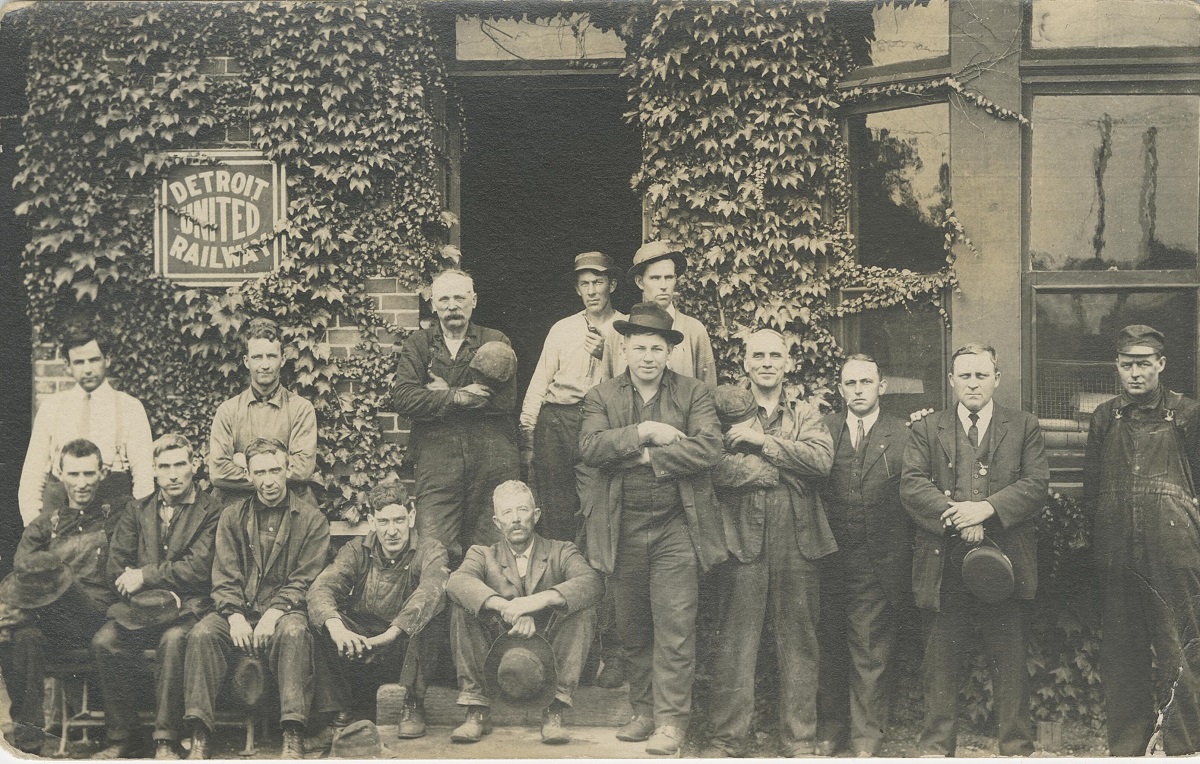

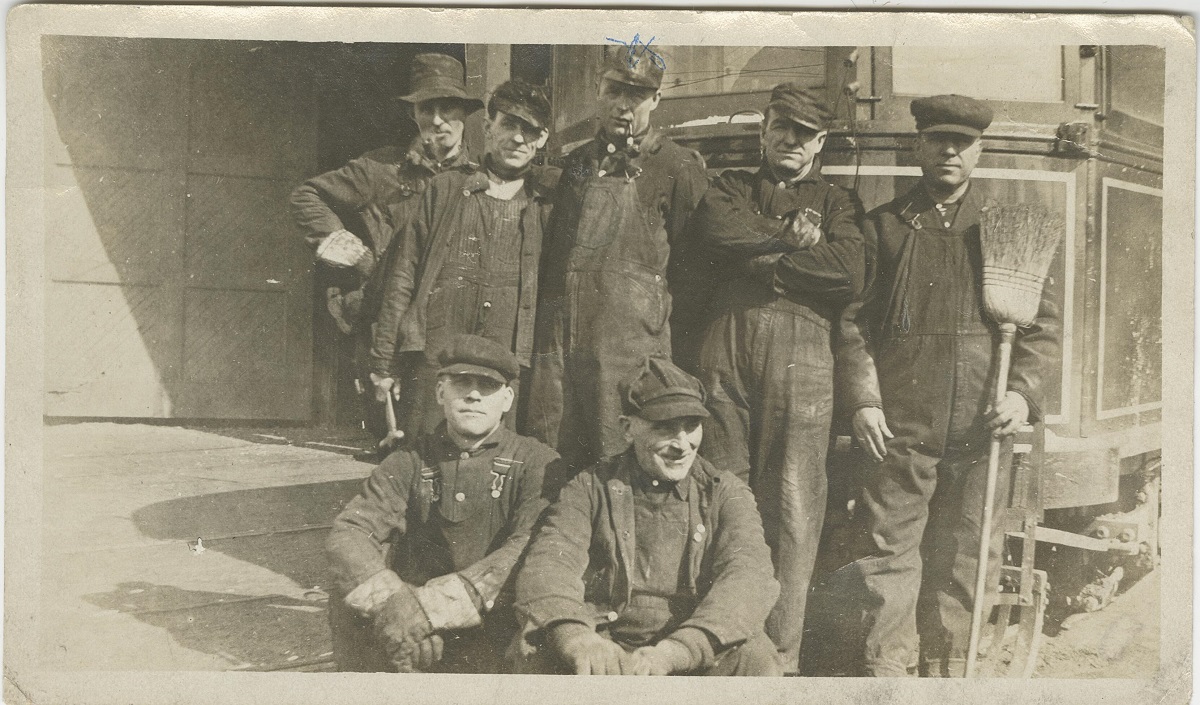
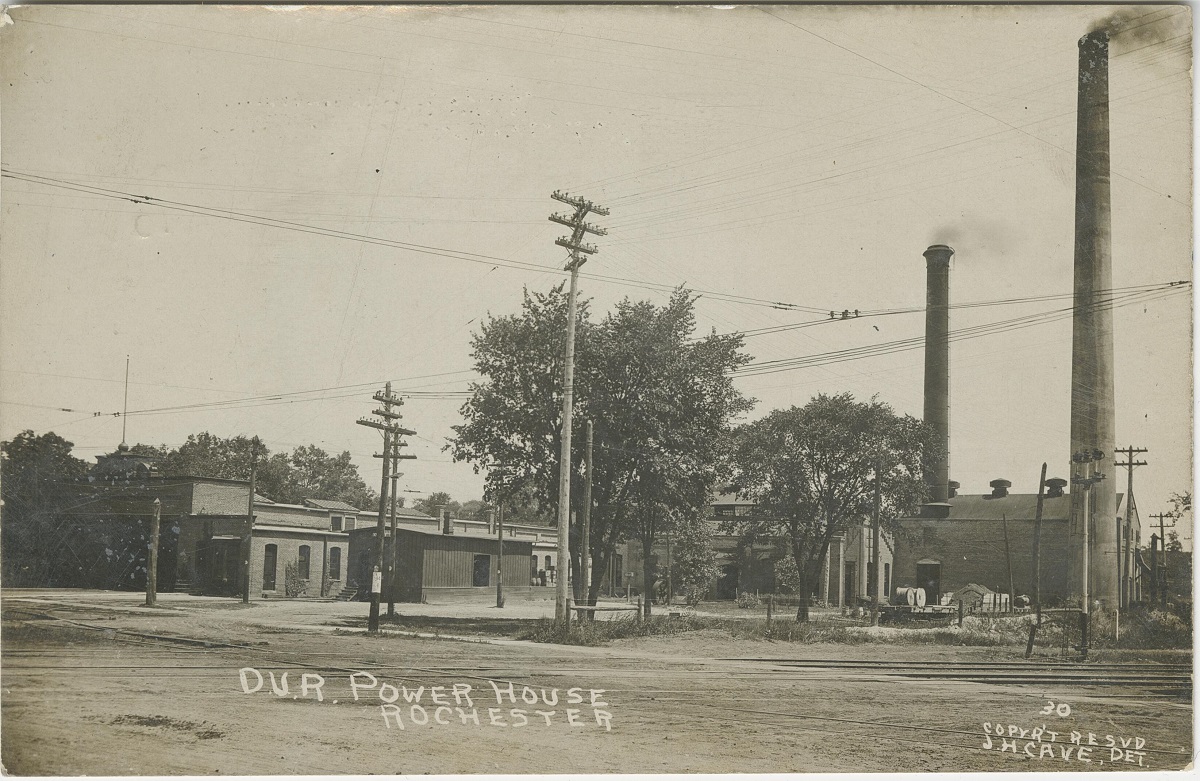
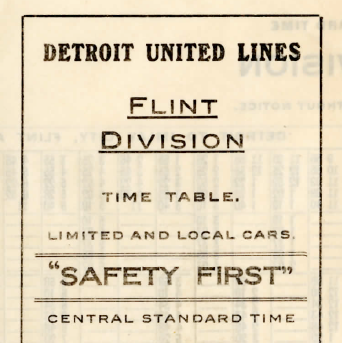
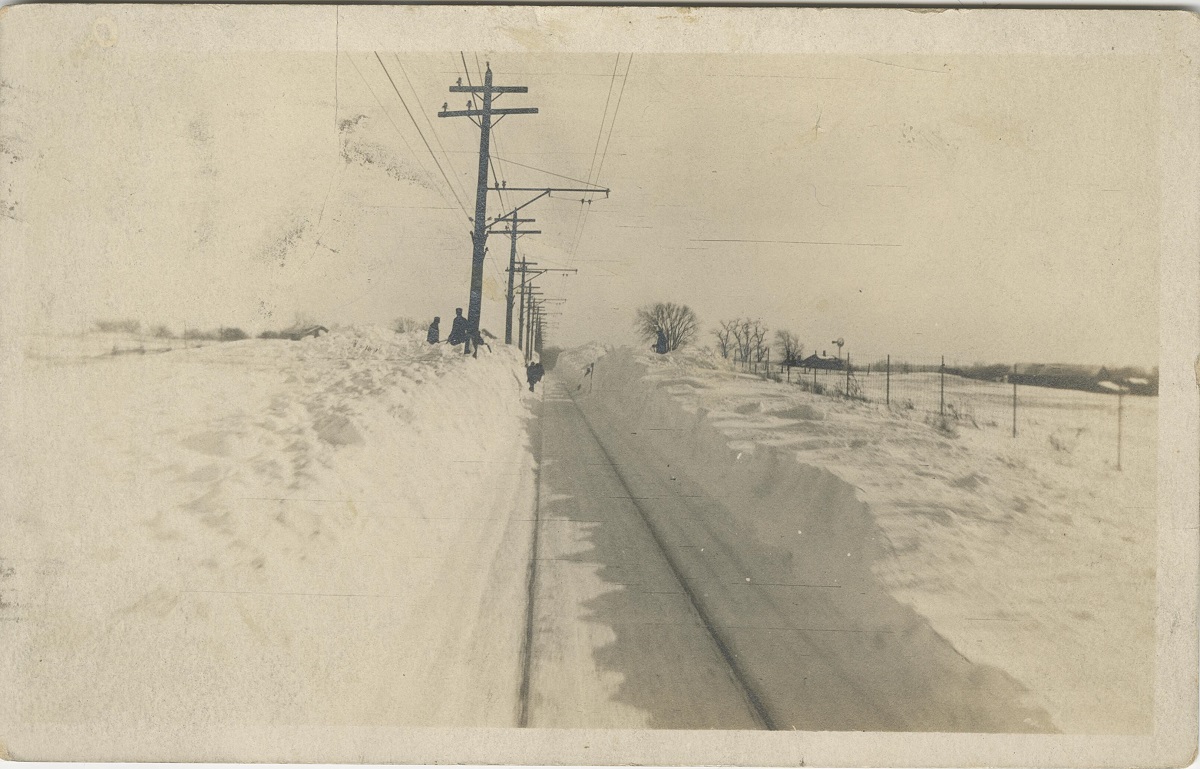
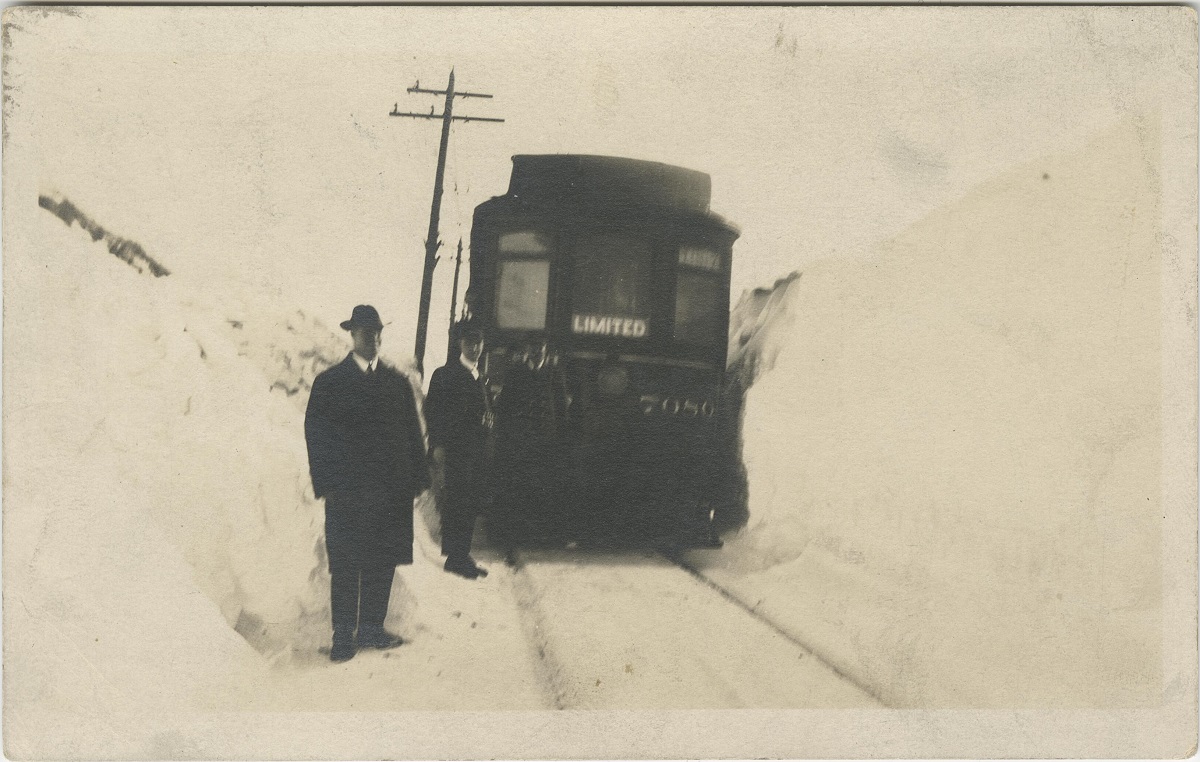
By then, the automobile had proven to be a more convenient and faster mode of transportation. Before the 1920s, local roads had been impassable in poor weather.
By the 1920s the road infrastructure improved significantly thanks to the construction of cement and concrete roads.
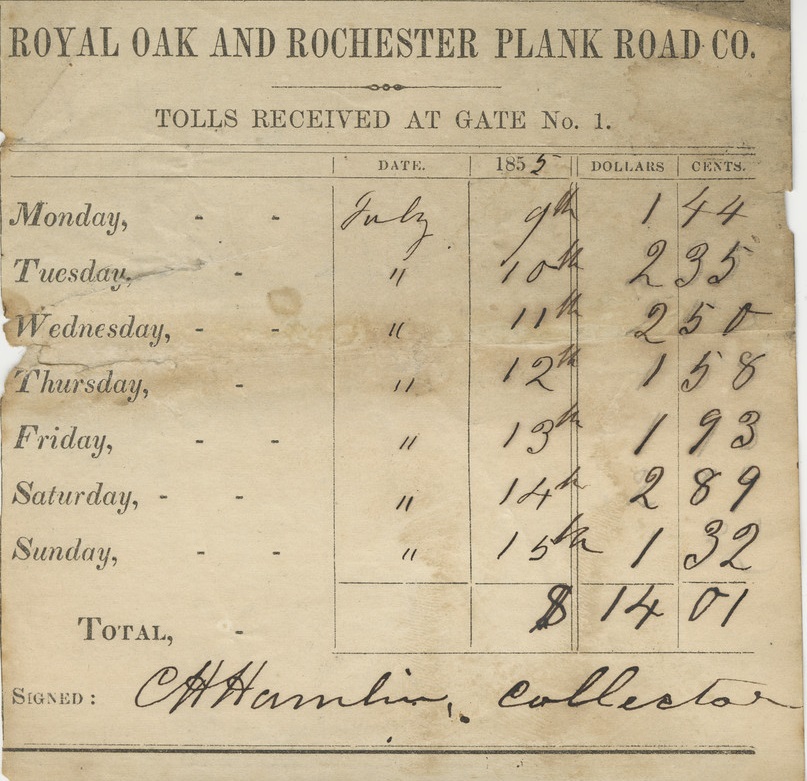
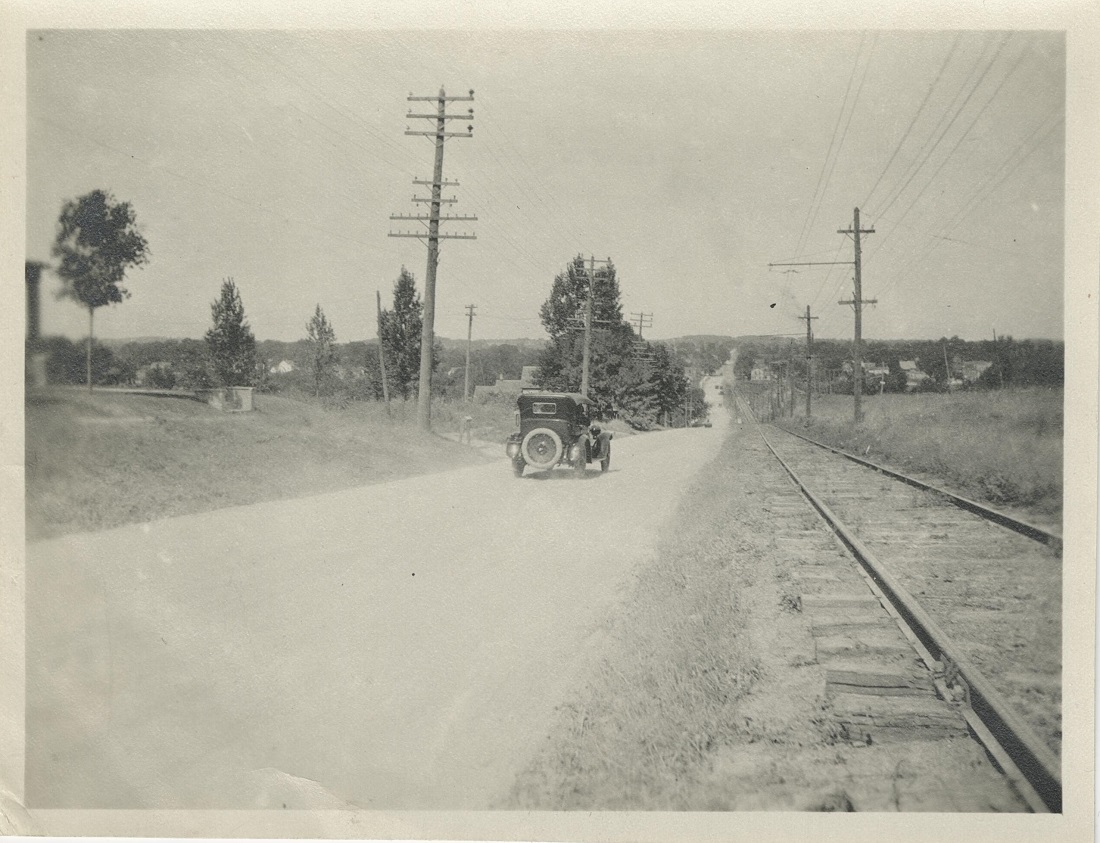
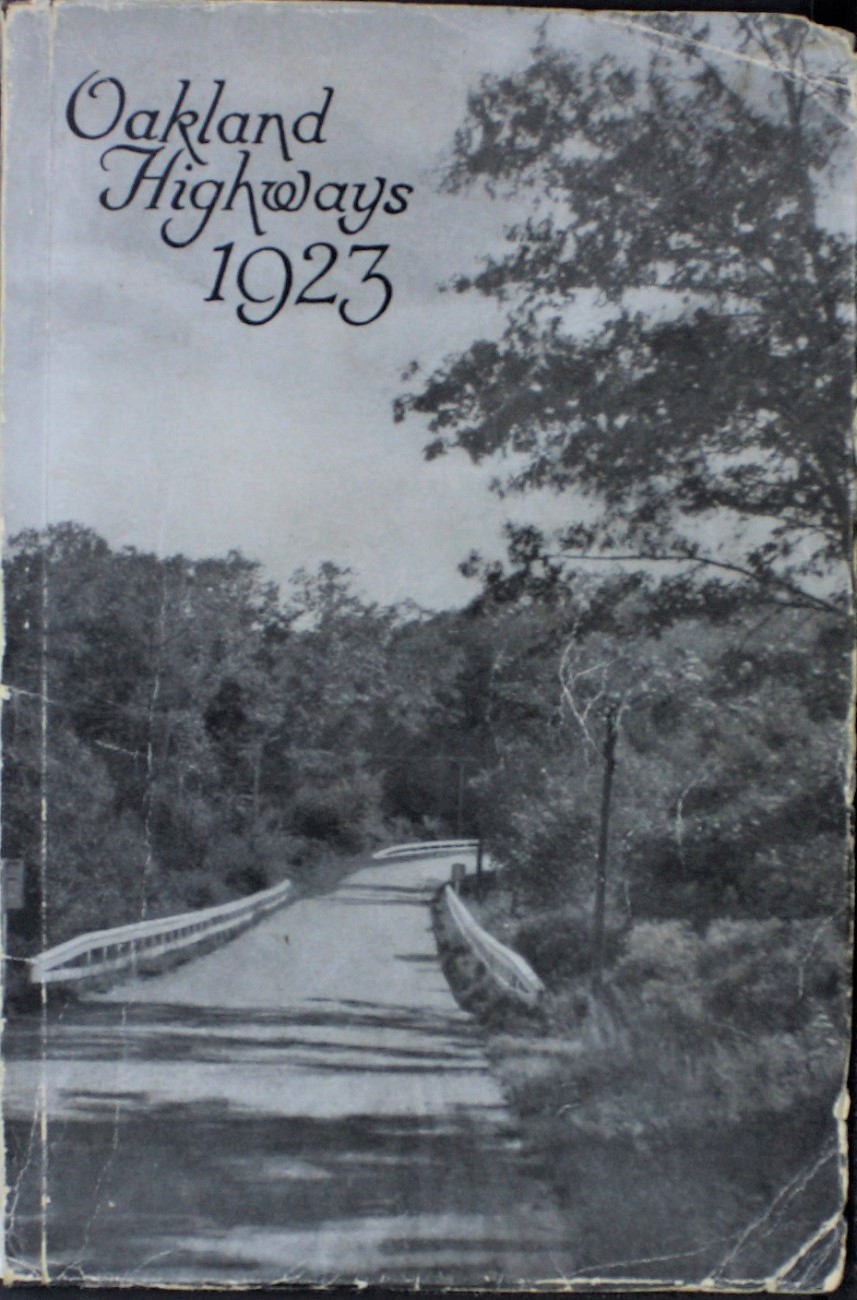
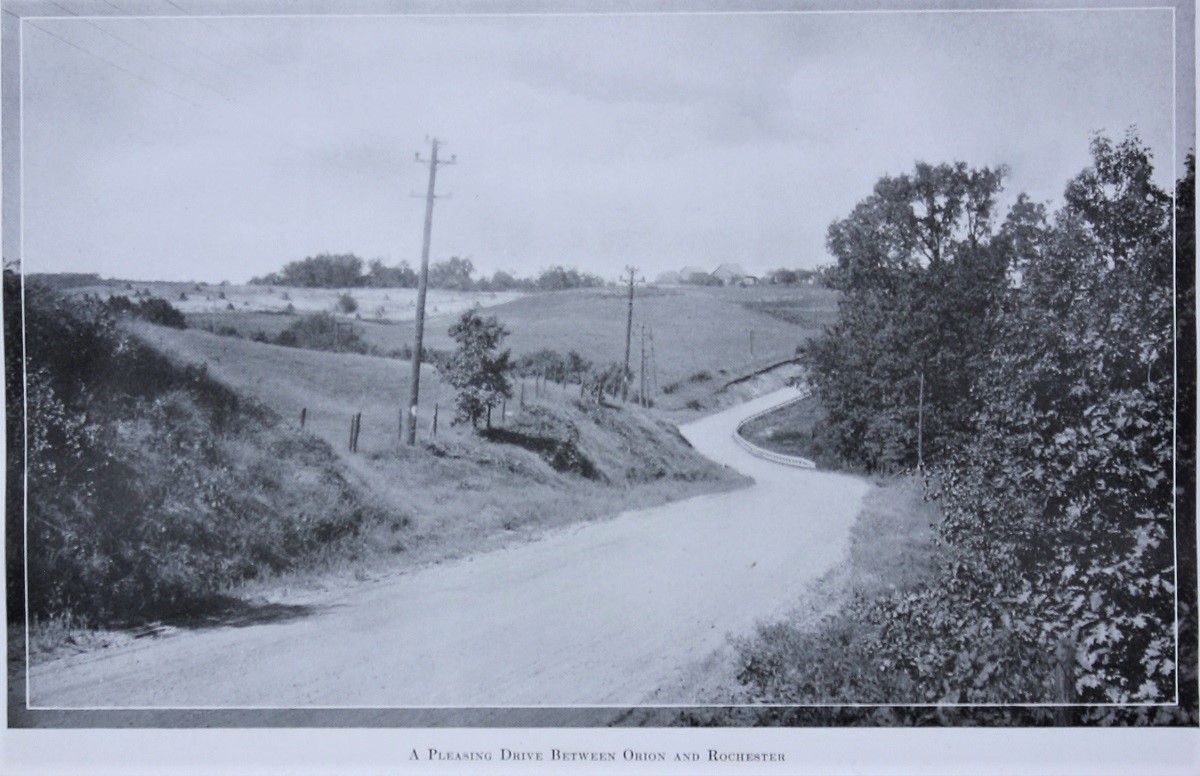
Downtown
Rochester’s main street has always been lined with small businesses.
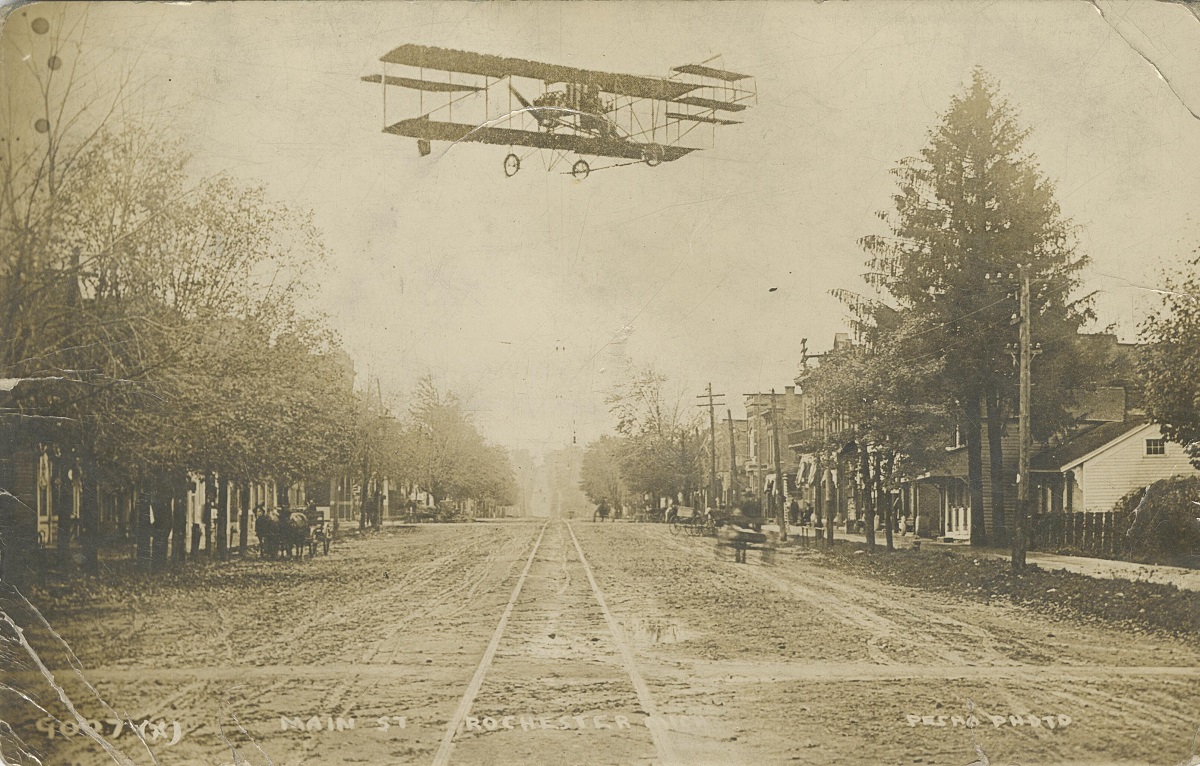
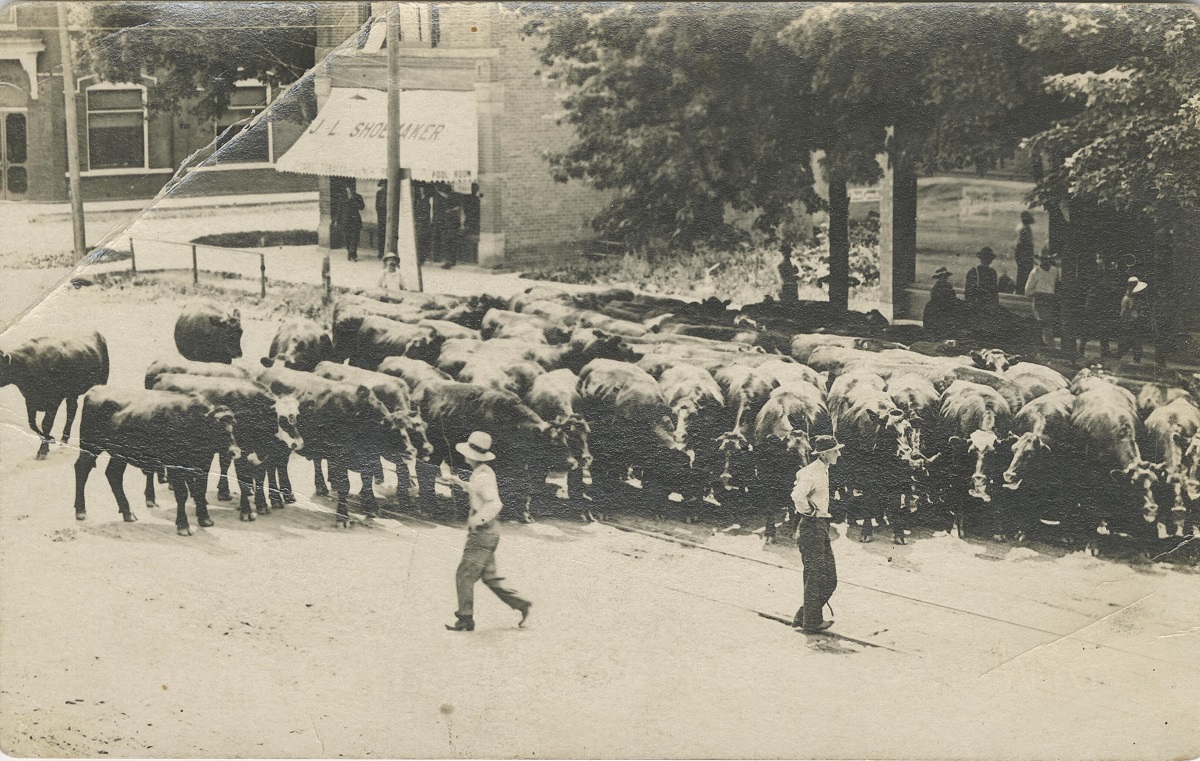
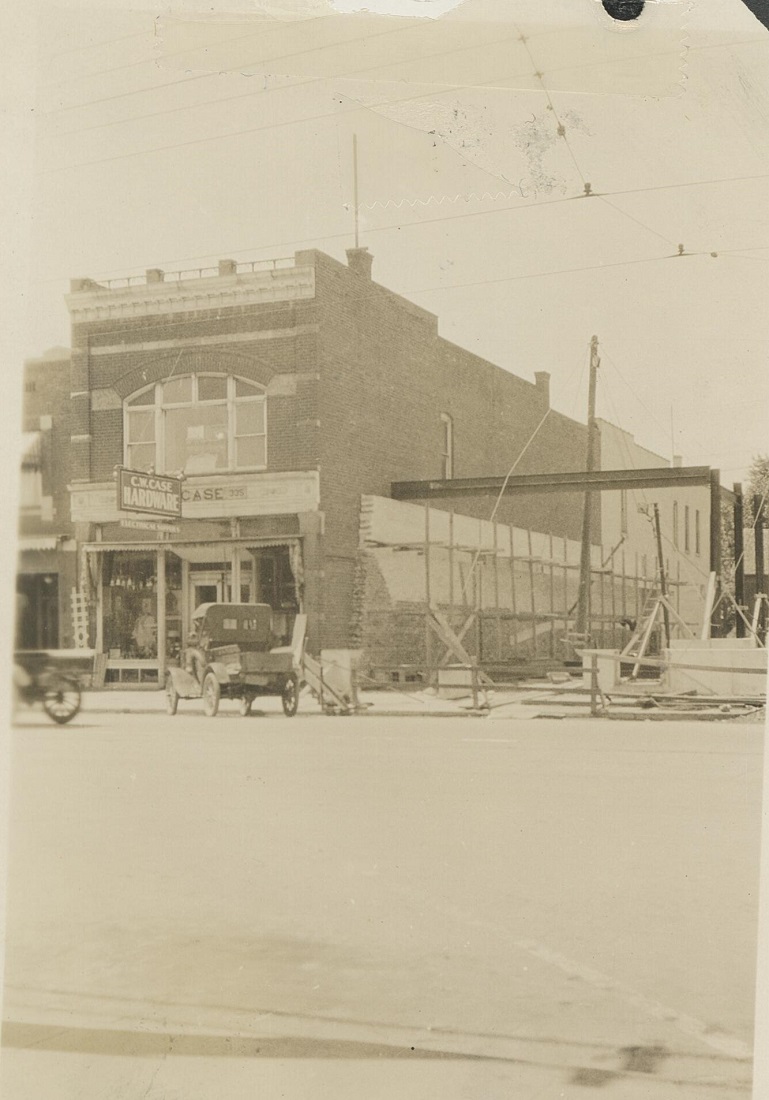
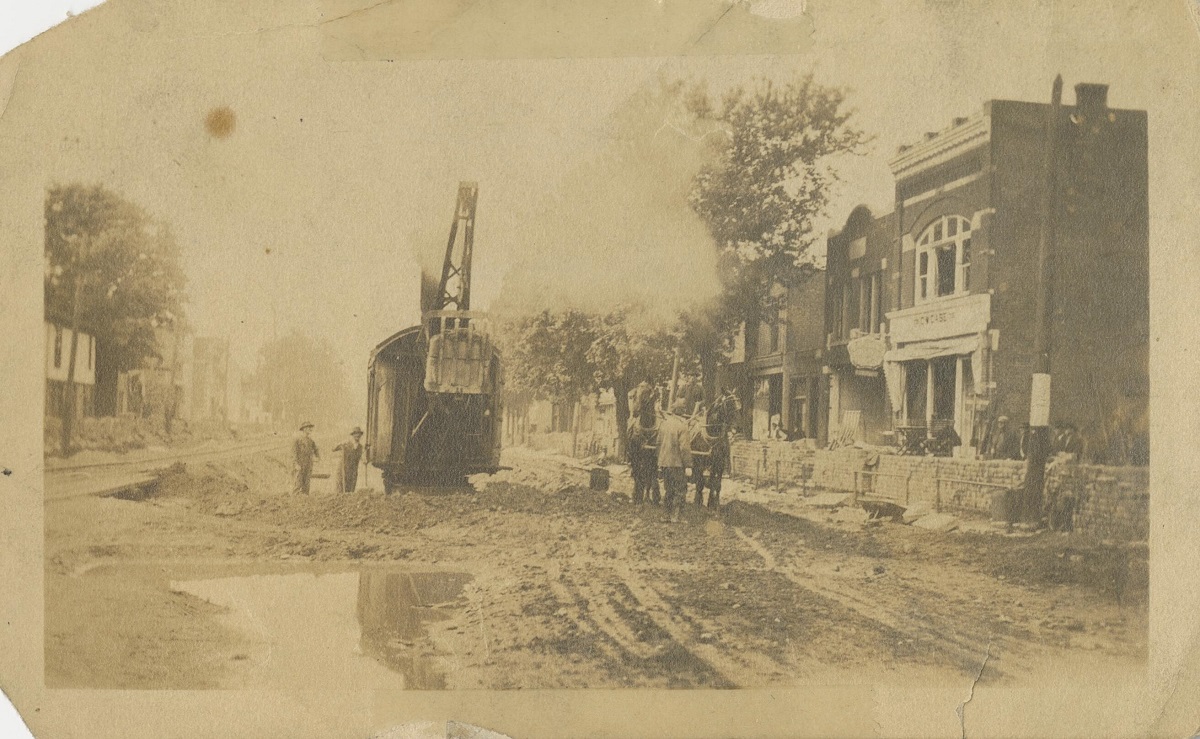
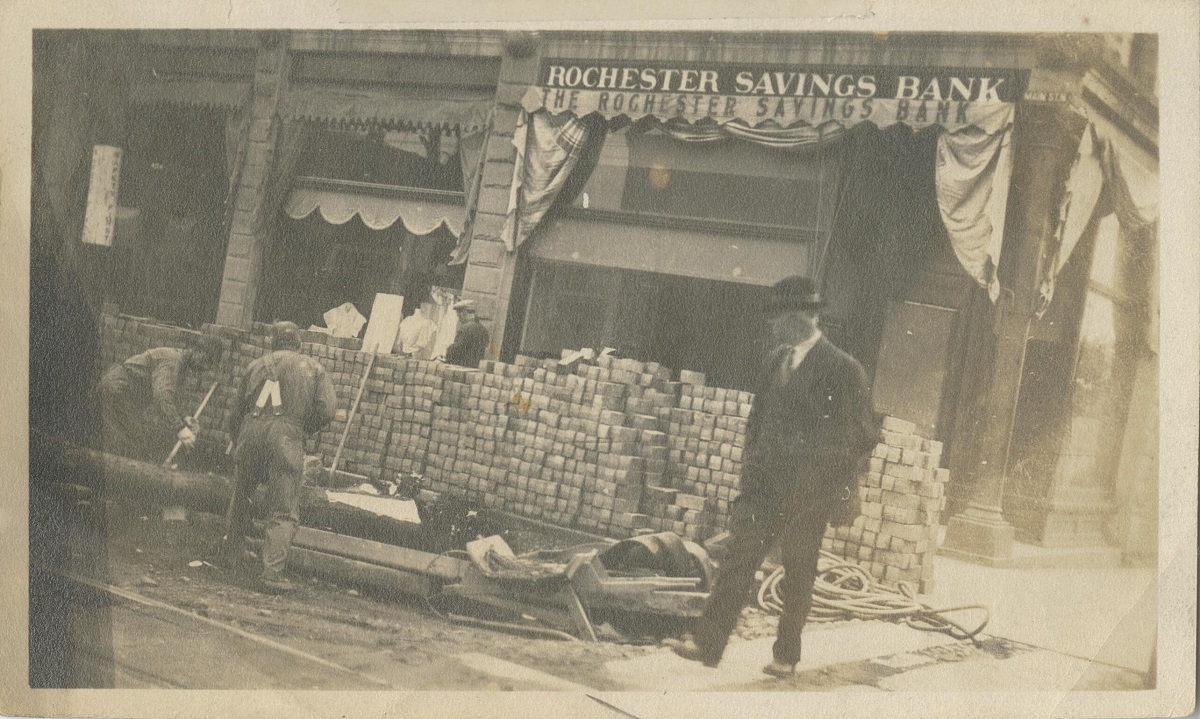

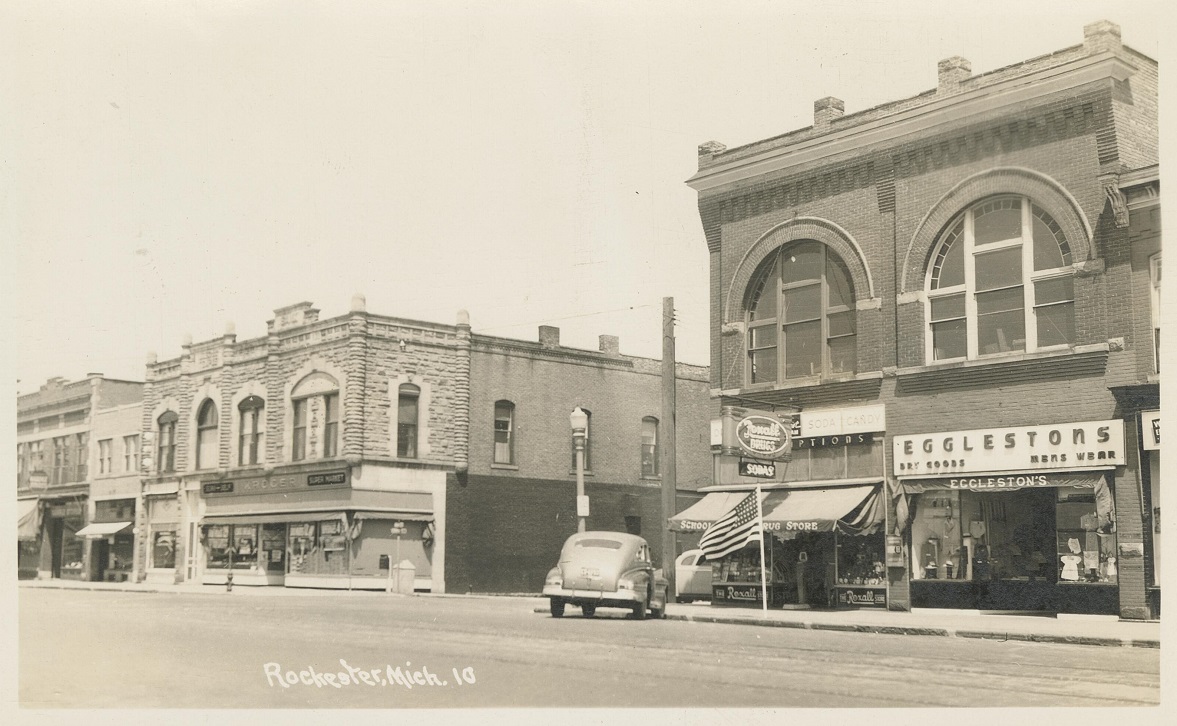
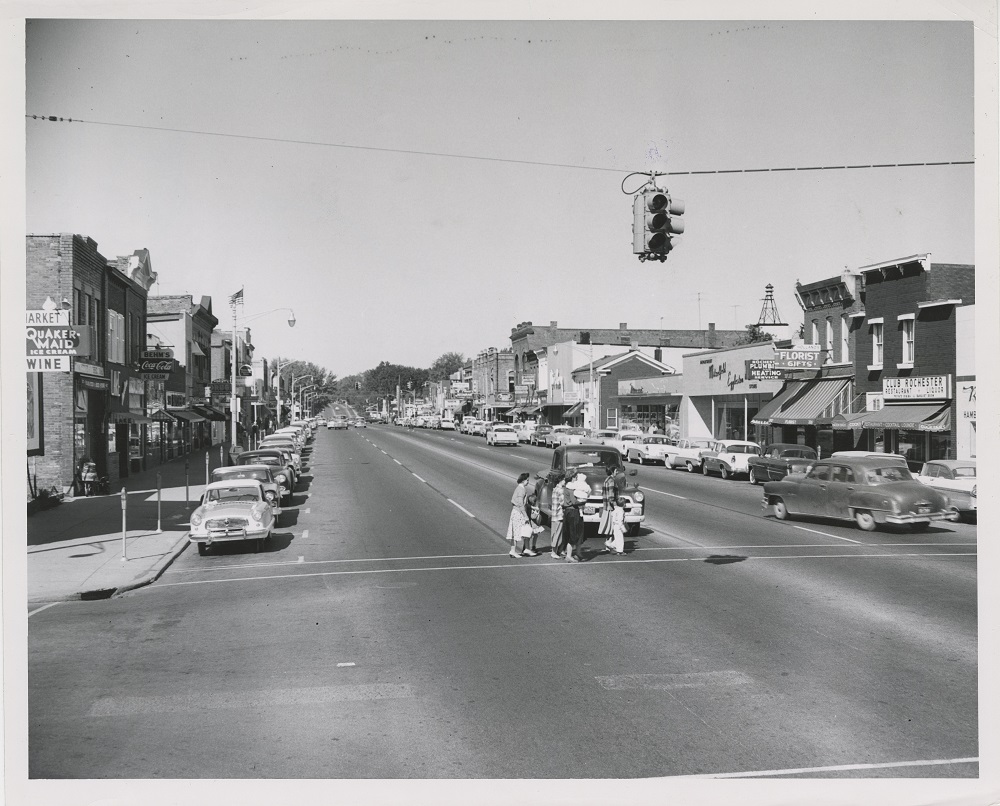
Suburbanization
Soon the farmland and beautiful scenery of the Avon Township area attracted developers catering to Detroiters who wanted to escape the crowded and polluted city.
From the Oakland County Board of County Road Commissioners to private developers, all praised the “quiet retreat far from the noise and heat of the city”, the pure air and water, and the proximity “to civilization and nature”.
Farms were progressively turned into subdivisions and the Rochester area experienced dramatic population growth.
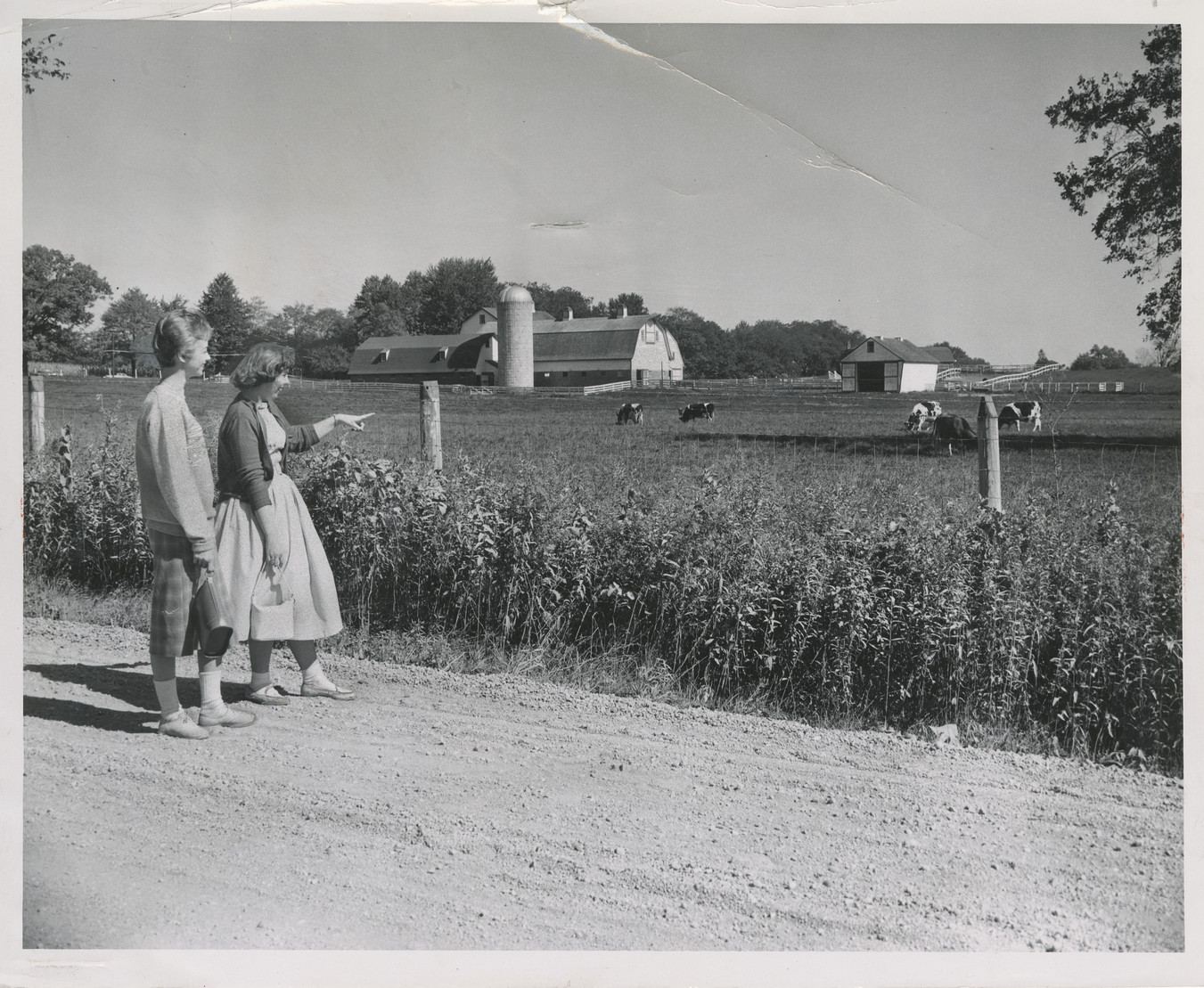
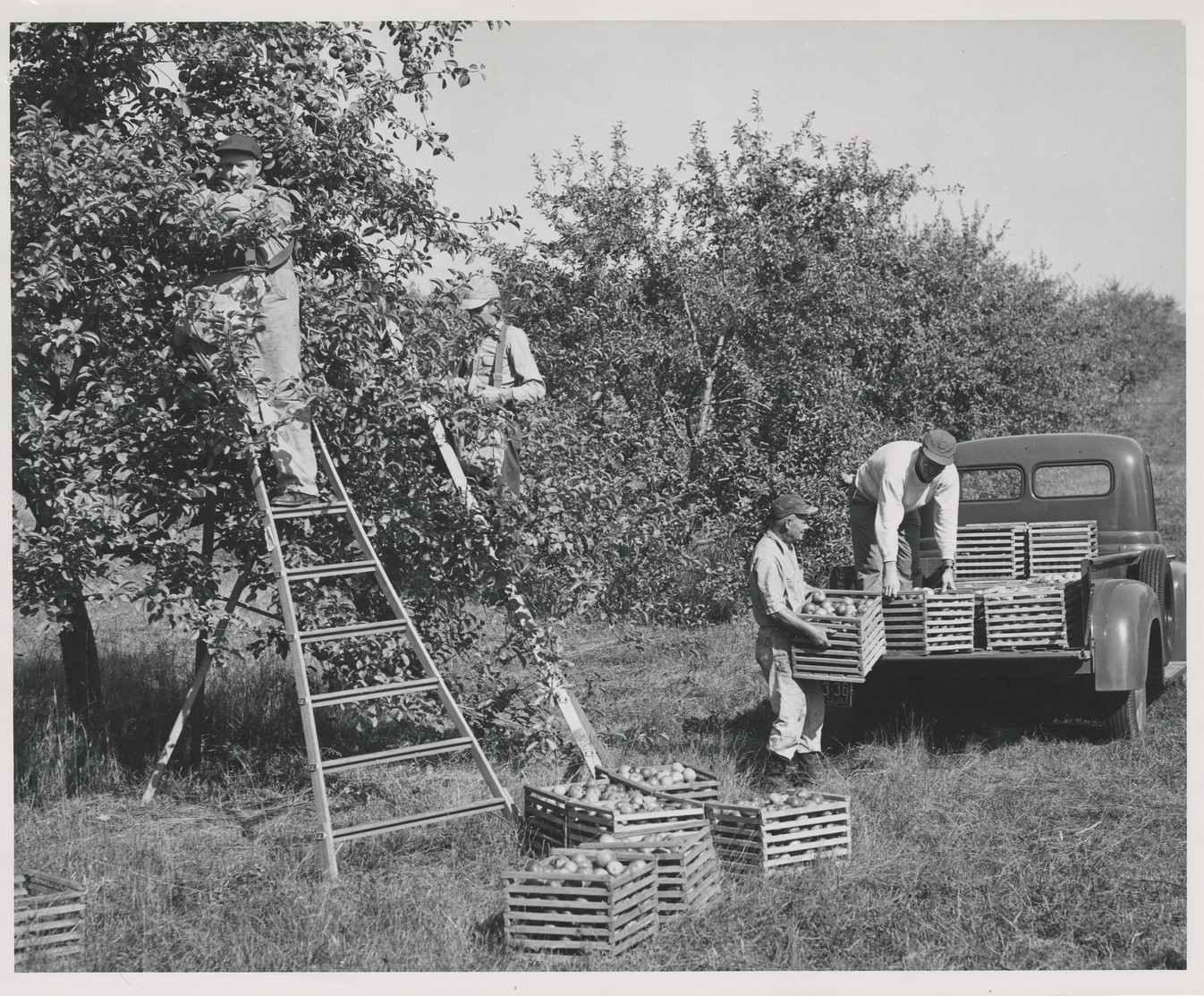
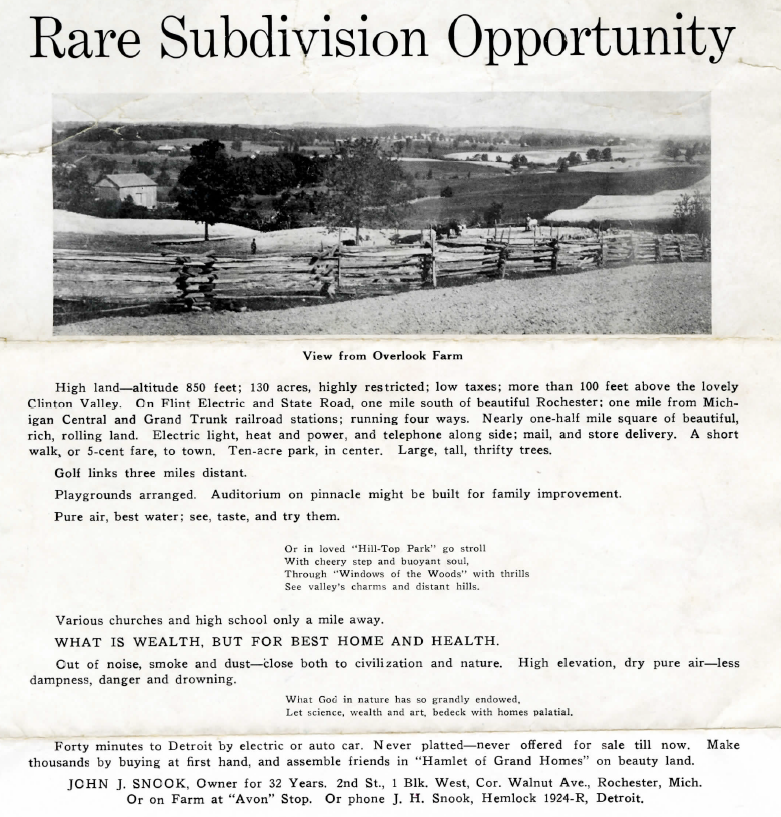
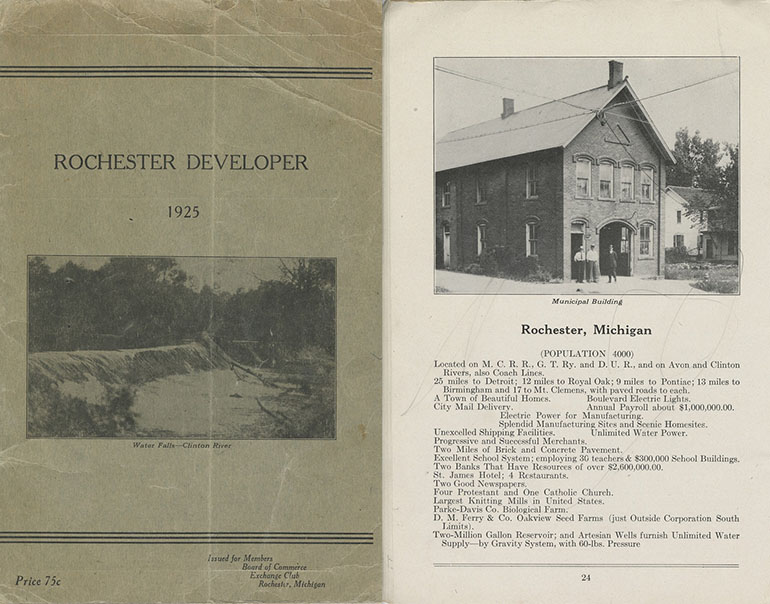
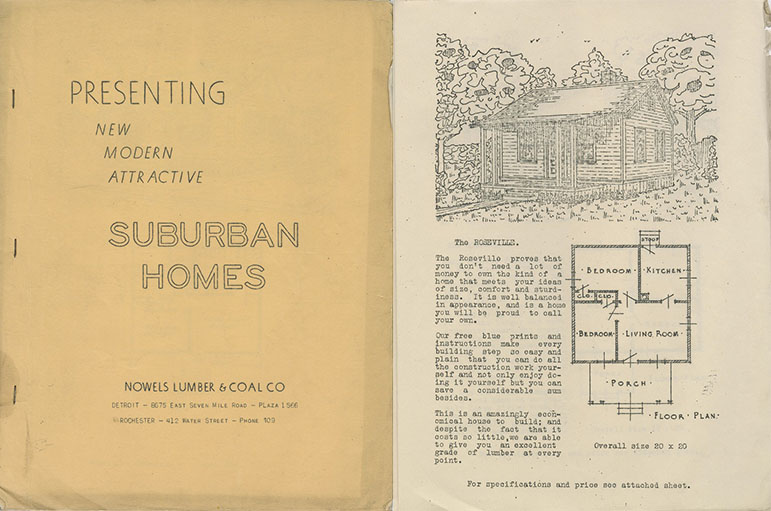
One of several such ventures,the Nowels Lumber Yard in Rochester operated a successful lumber and coal business that took advantage of the “do it yourself” home ownership movement during the New Deal.
By the 1970s, Oakland University’s student newspaper saw Rochester as a “developing city with modern roadways, subdivisions, and shopping malls” that “still retains the quaint, small-town atmosphere of the early 1900s.”
Industry
The Western Knitting Mills
The Western Knitting Mills were built in 1896 on the site of the ruins of previous mills in Rochester, at Fourth and Water streets.
They were established by Charles and William Chapman who bought an existing knitting works company and moved its operations from Detroit to Rochester.
Until its closure in 1937, the knitting mills one of the largest employers in the area and a major producer of wool gloves, socks, and mittens. During World War I, they produced khaki gloves for American troops. Women came from afar to work at the mills and were housed in adjoining dormitories.
In 1940 the vacant building was acquired by McAleer, a Detroit company which produced automotive polish and later on, during World War II, became the nation’s leading manufacturer of photoflash bombs.
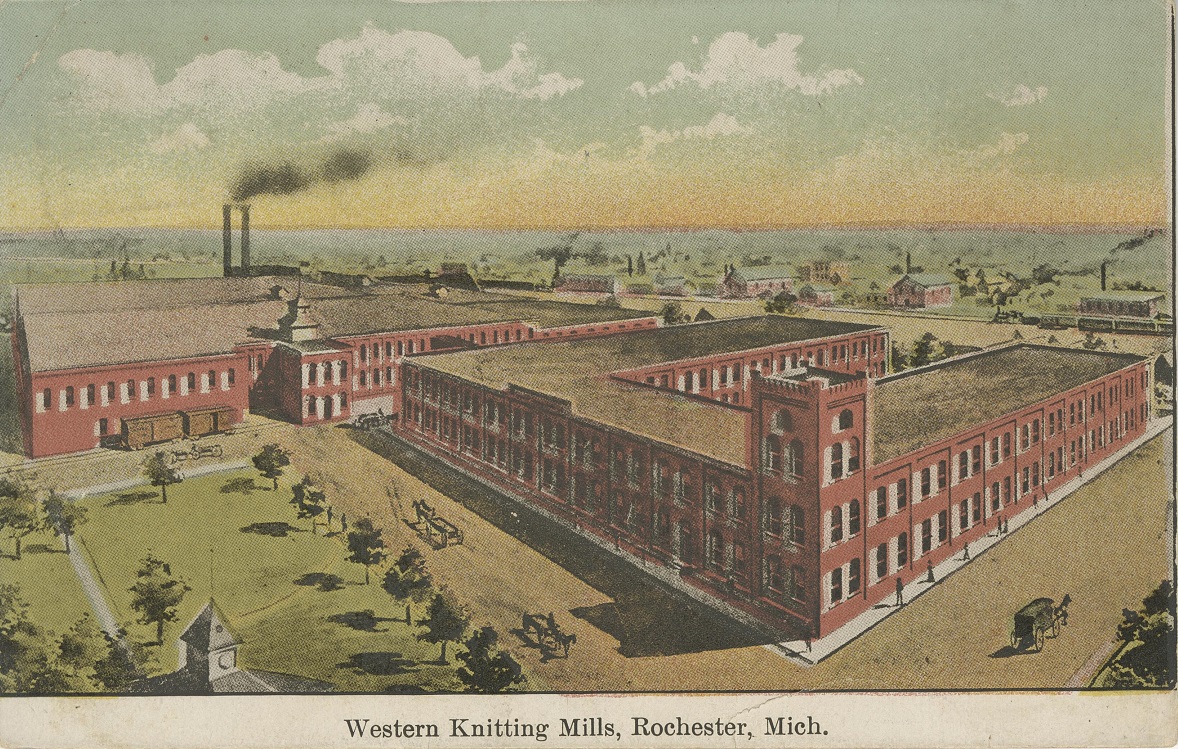
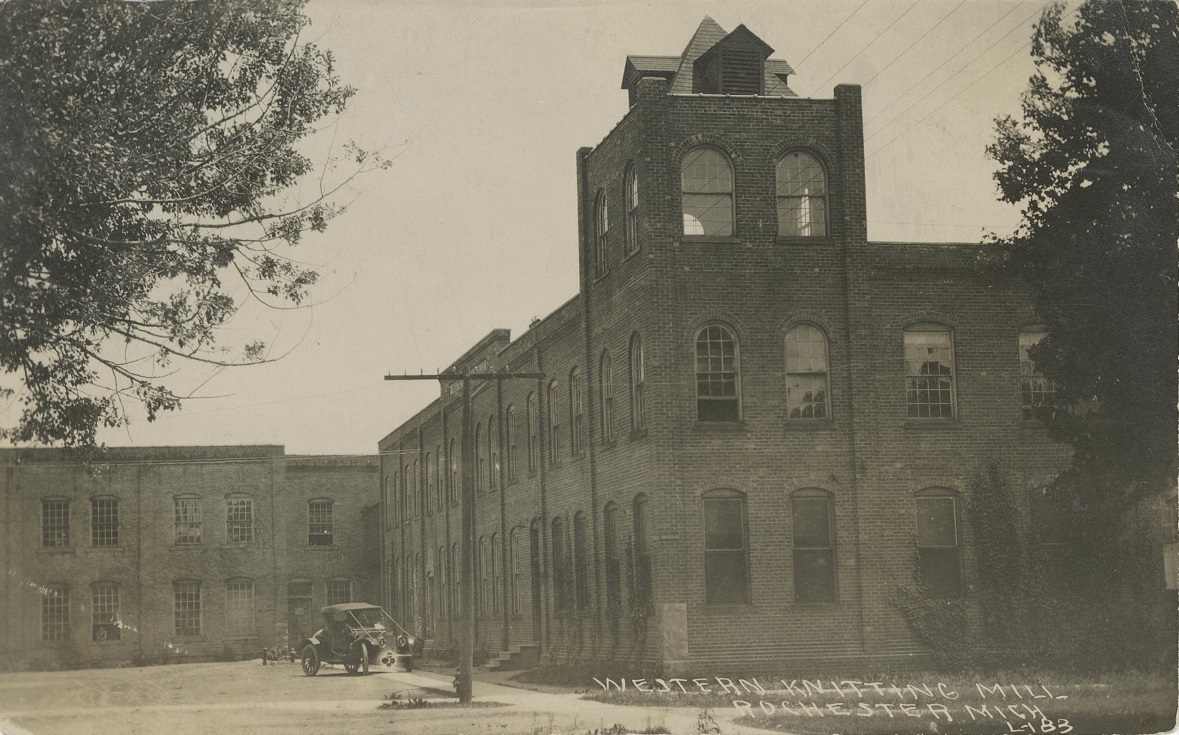
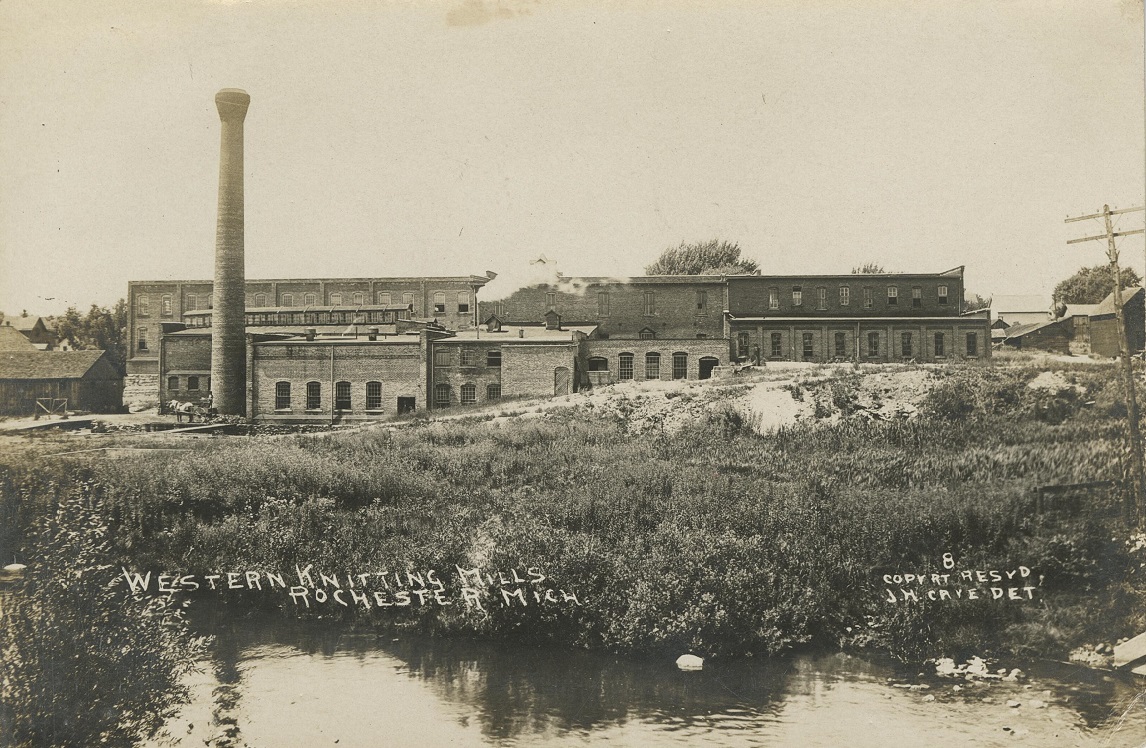
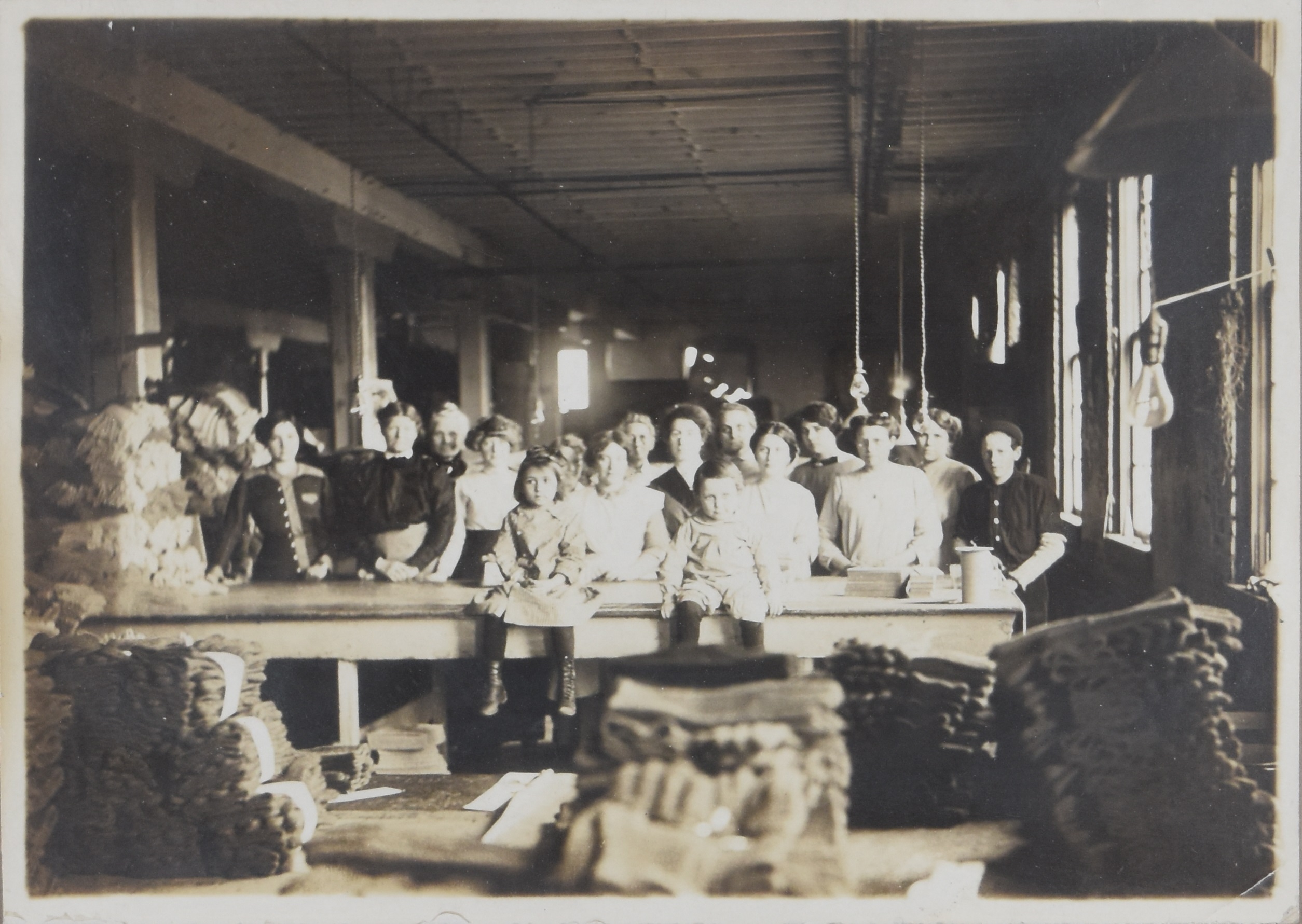
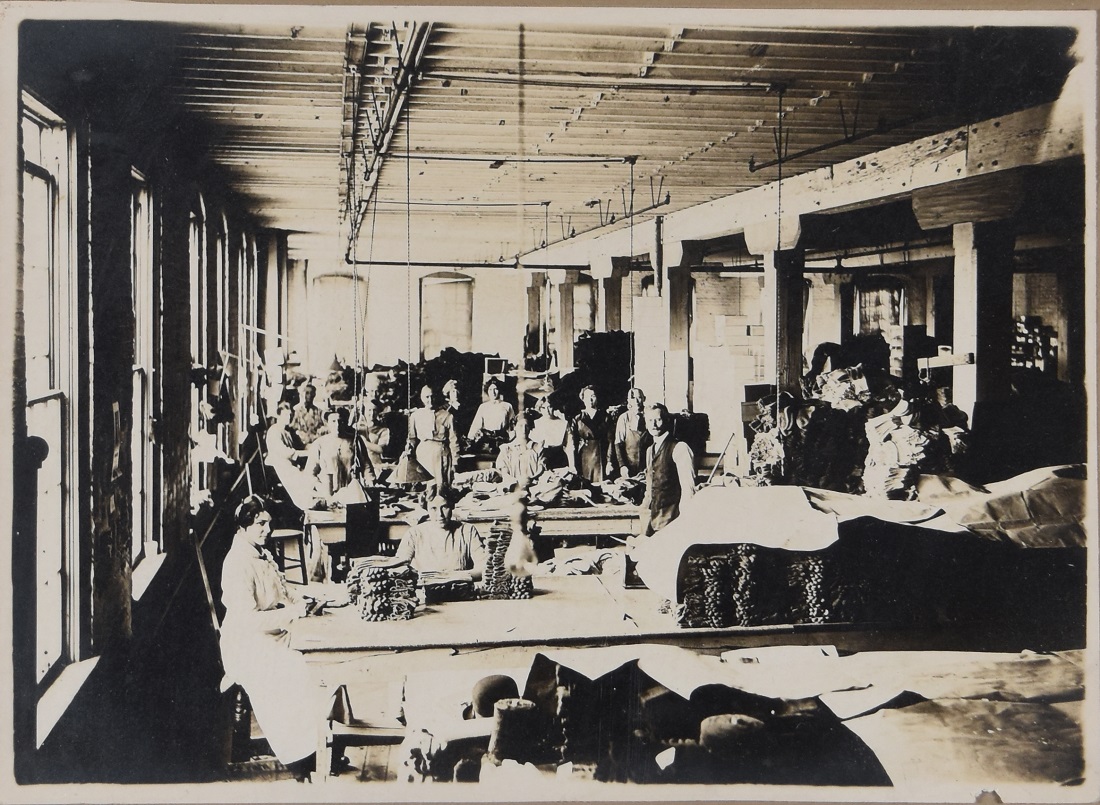
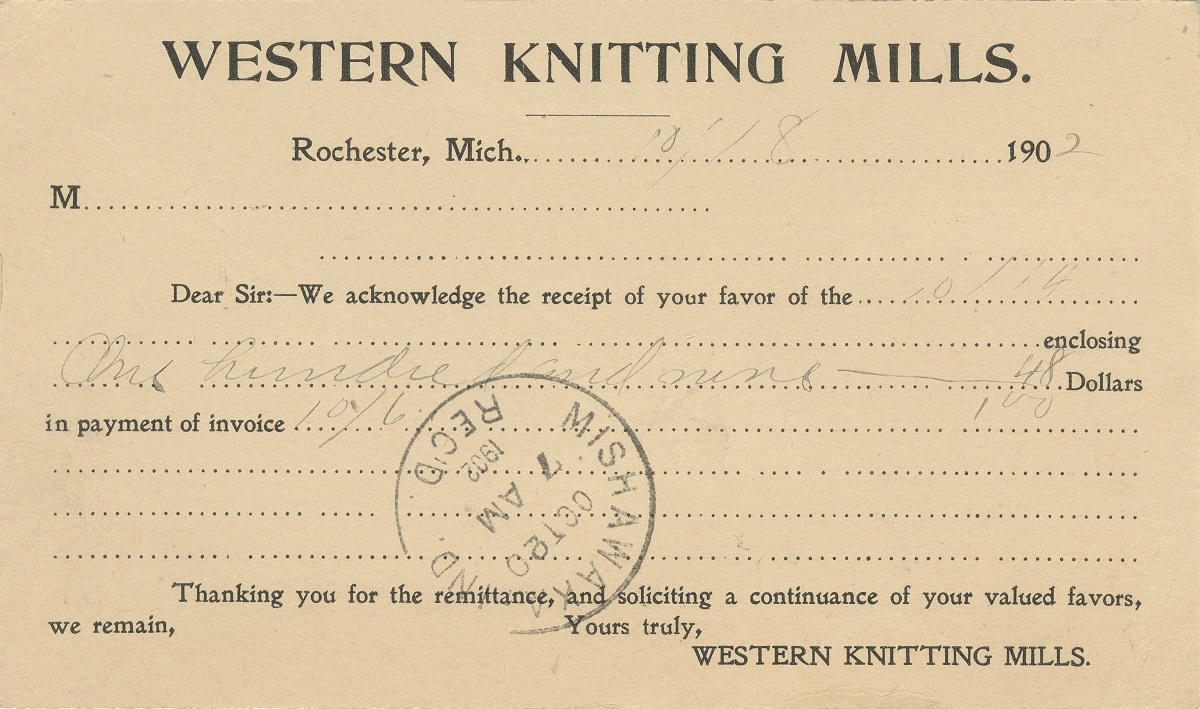
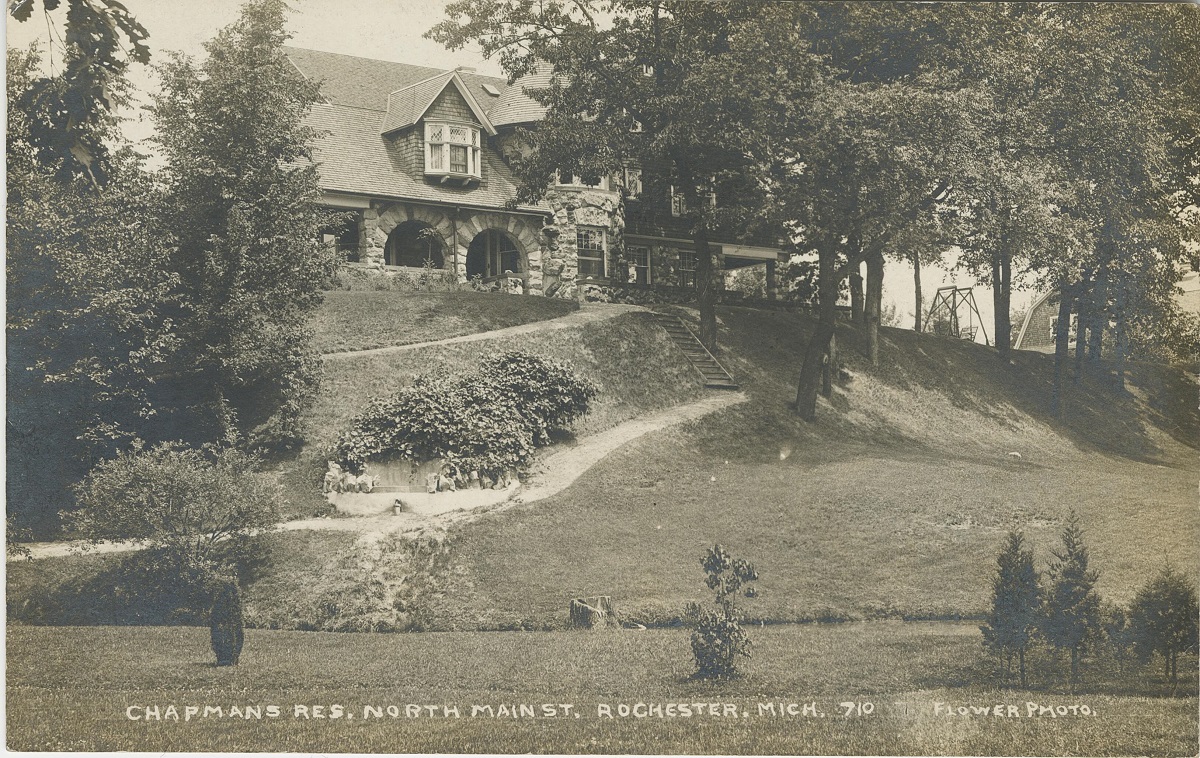
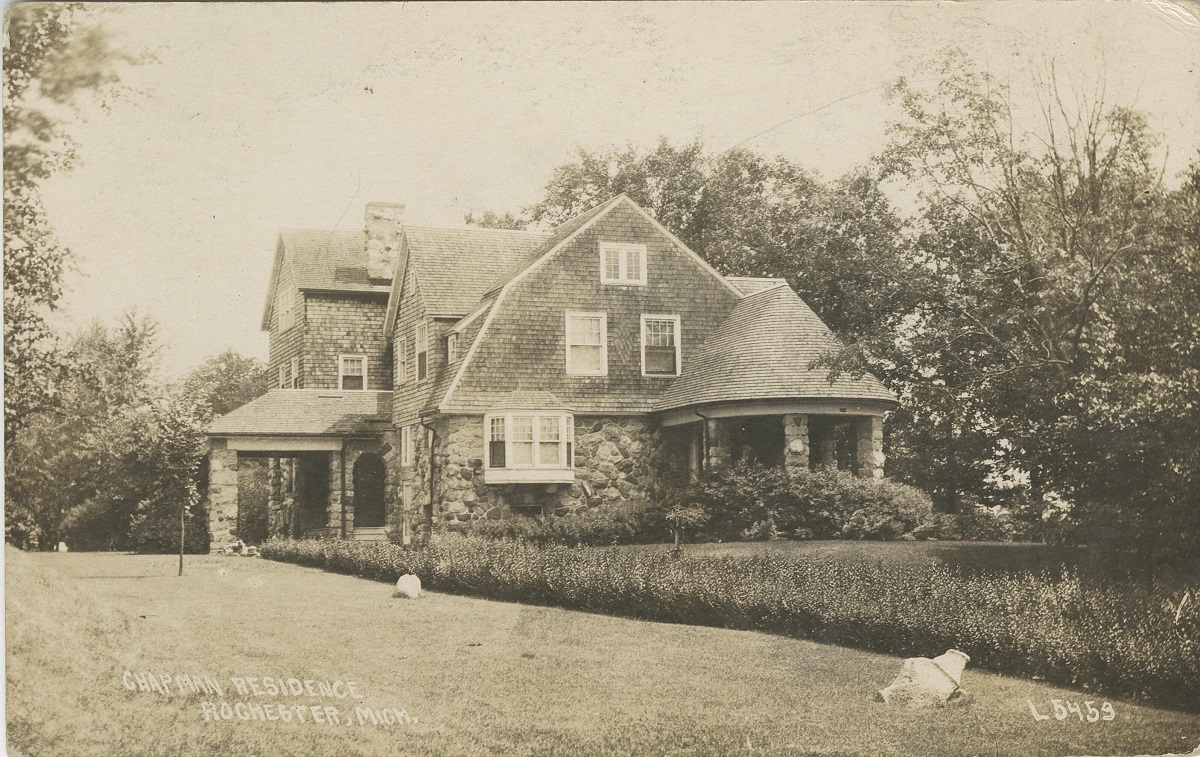
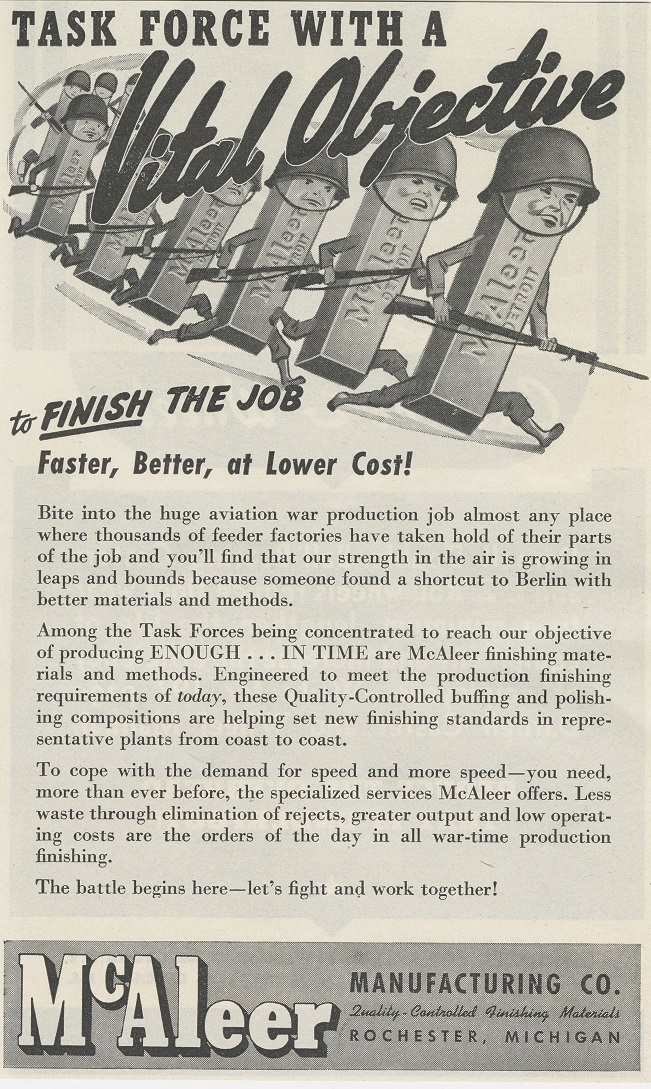
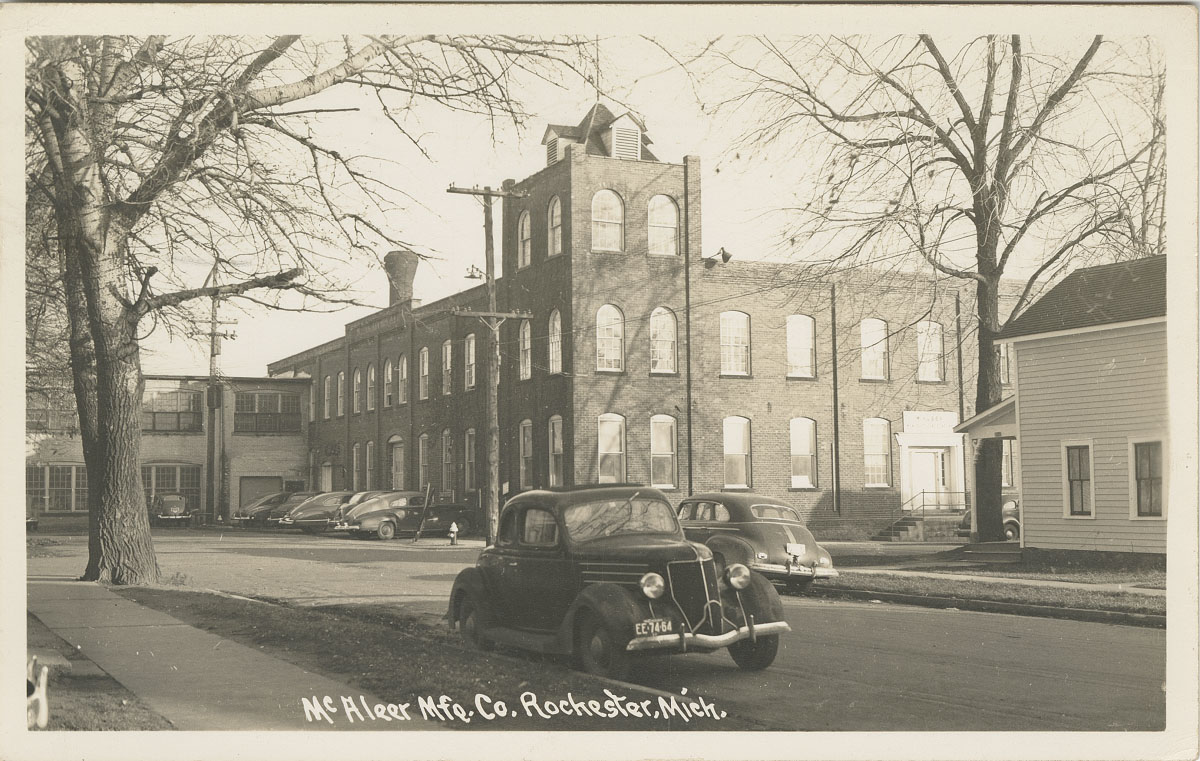
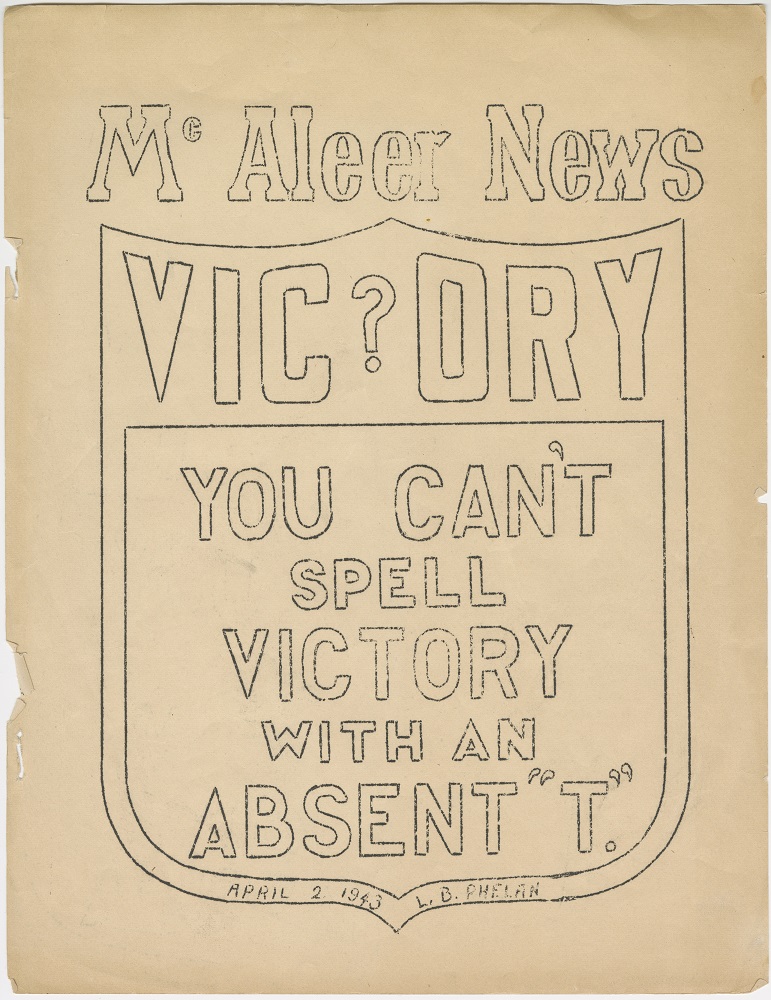
After the war, the complex housed several businesses until 1998, when a complete renovation of the 1896 building allowed the Rochester Mills Beer Company and other businesses to move into it.
The Rochester paper mill
The Rochester paper mill started operations in 1857 on the banks of the Clinton river, on the site of an old flouring mill that dated back to 1824. The mill operated under different names (including Barnes) until 2002.
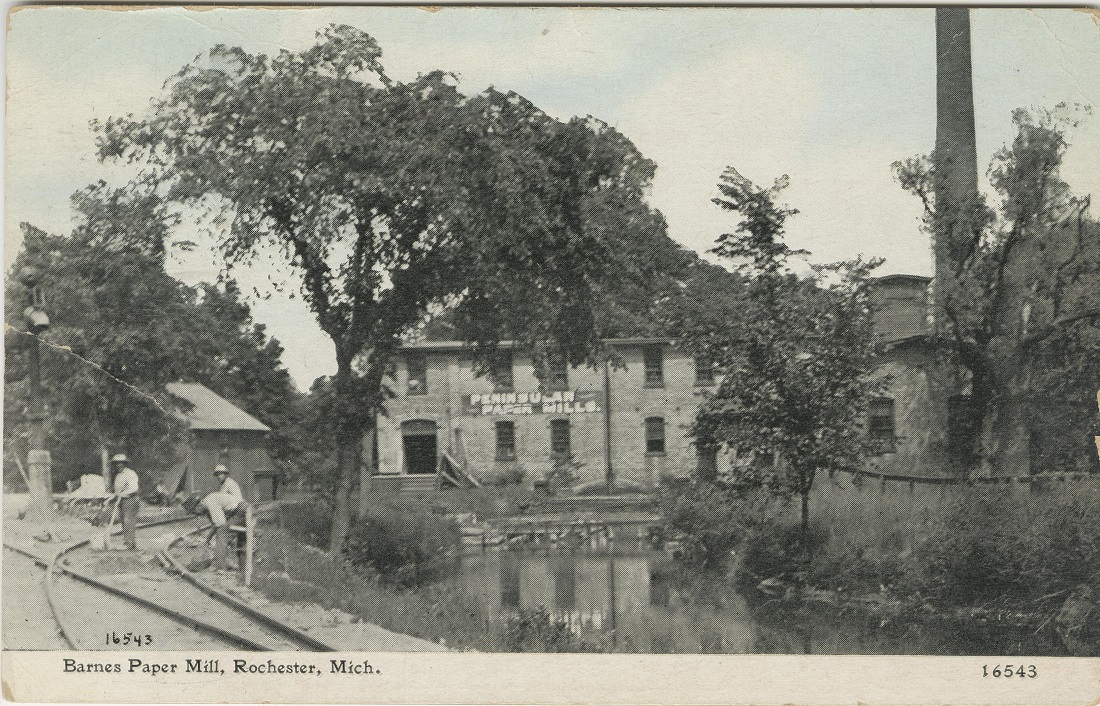
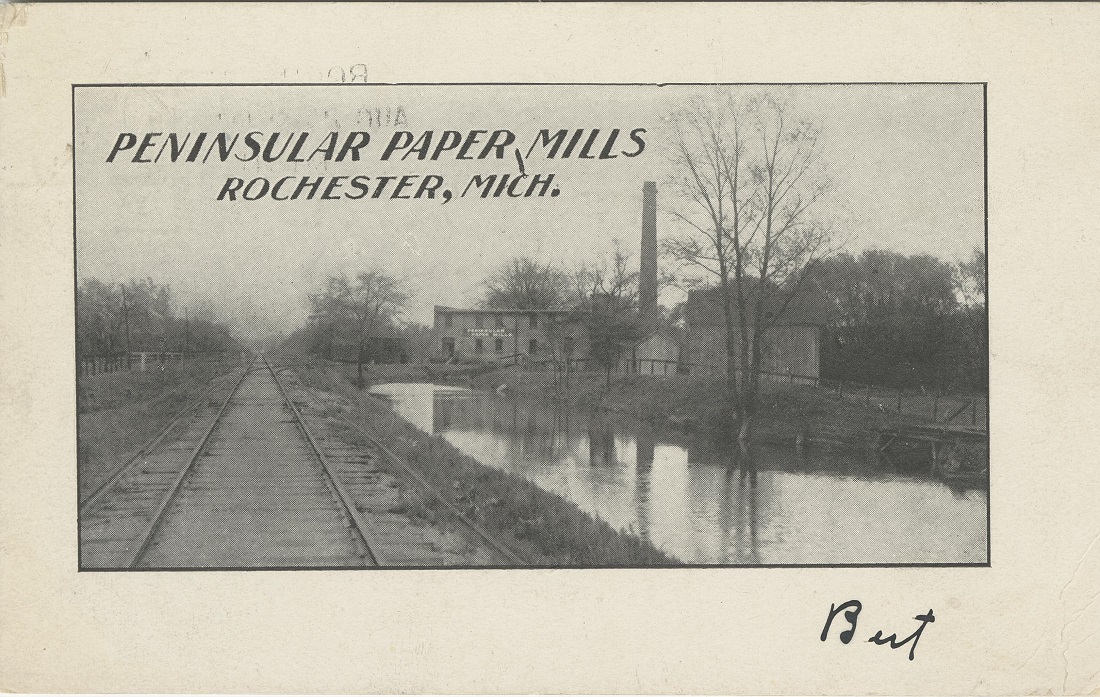
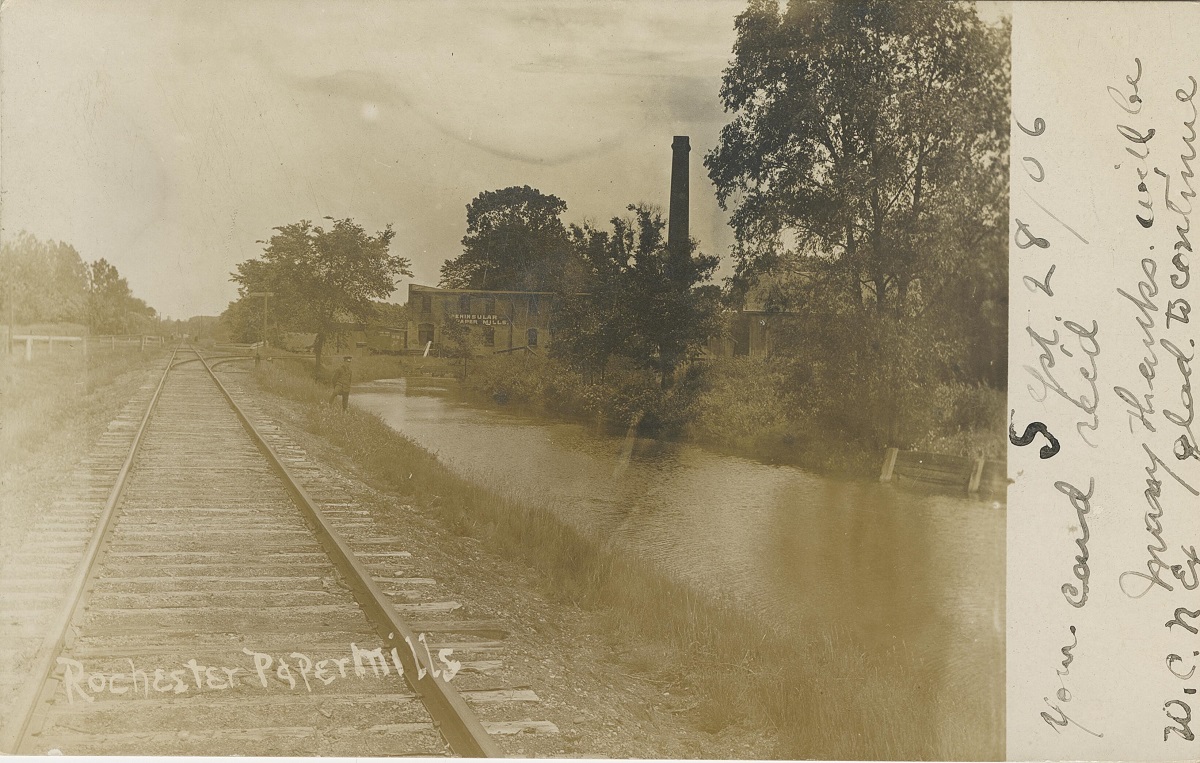
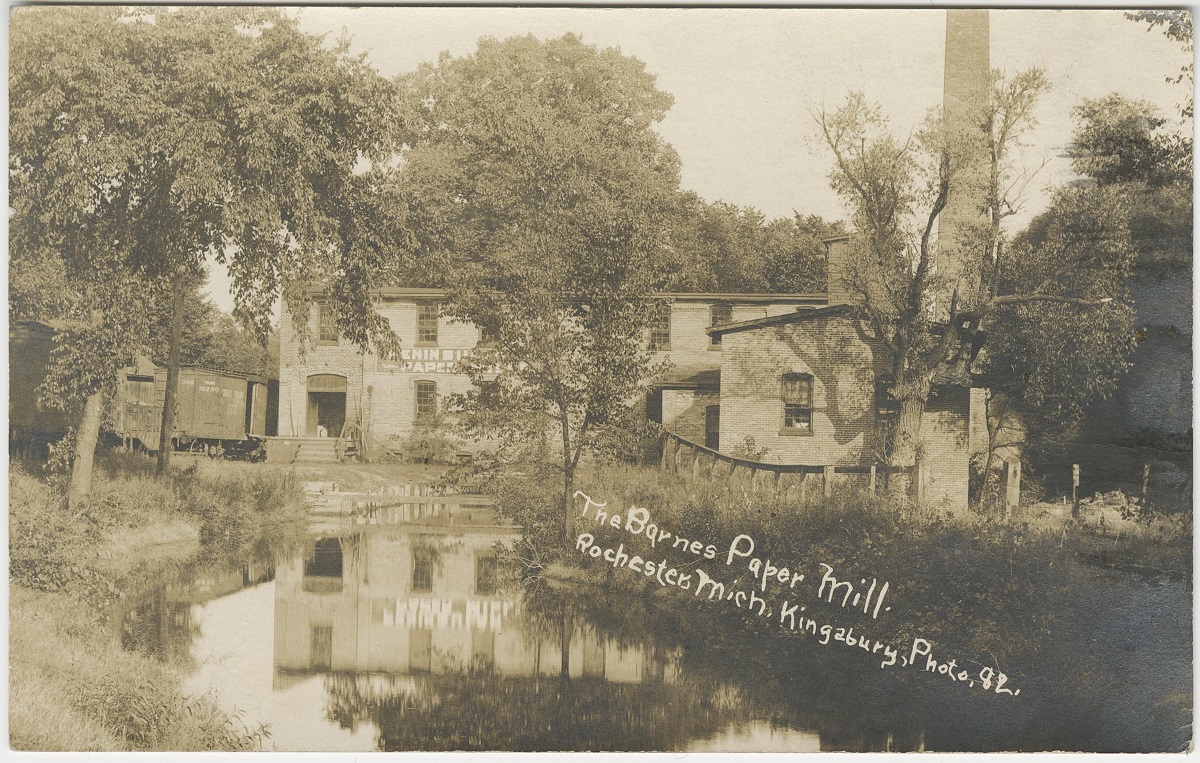
The Detroit Sugar Company
In 1899, the Detroit Sugar Company built a massive beet sugar processing plant along Paint Creek in the northwest corner of the village of Rochester, close to the Michigan Central railroad tracks.
Unfortunately, the government incentives and high tariffs on Cuban sugar that made the venture attractive did not last and the company ceased operations in 1903. Three years later, the building was demolished and the machinery and bricks were sold.


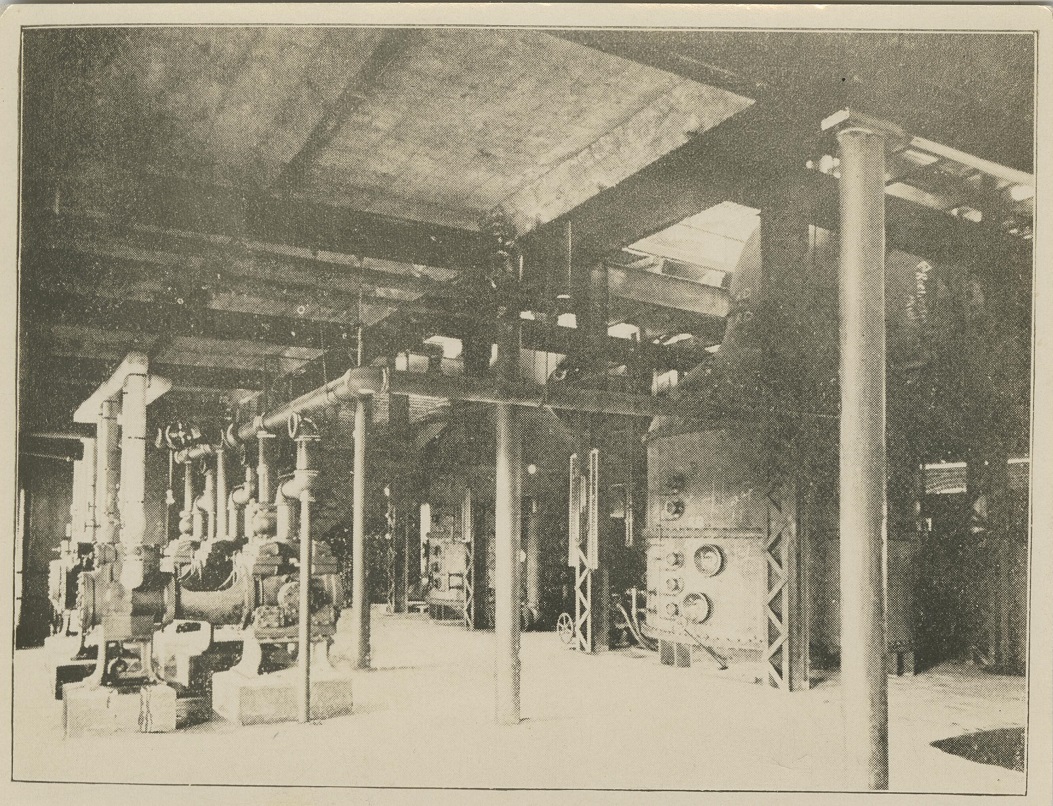
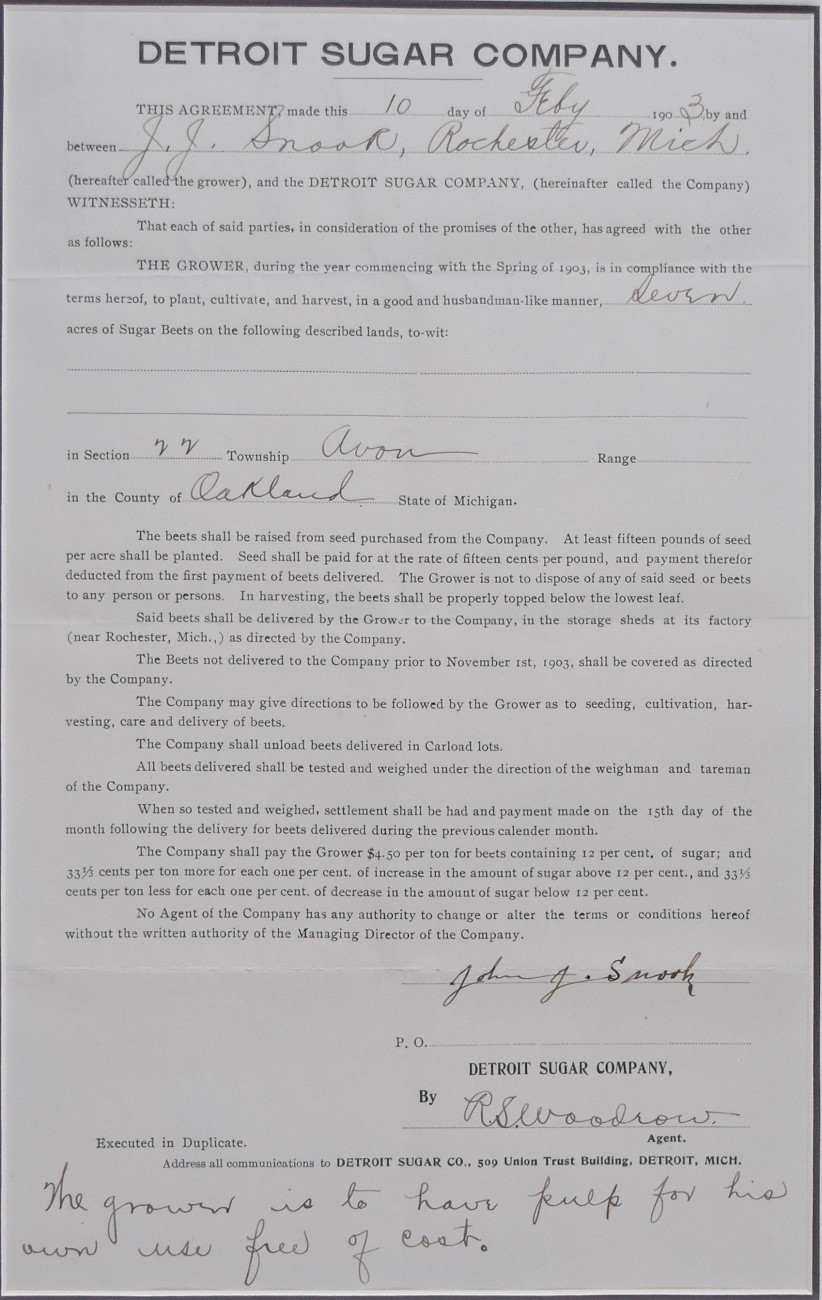
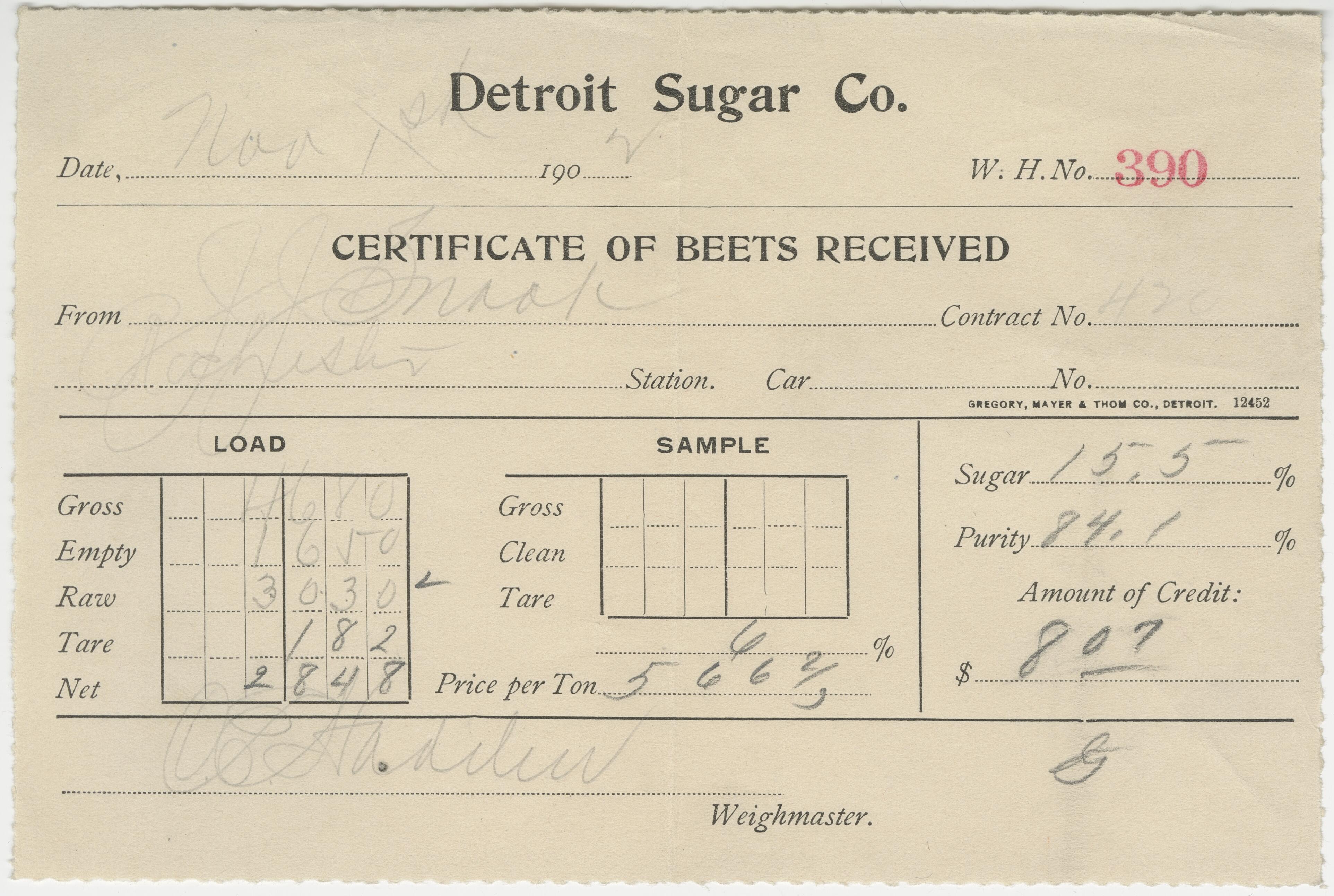
Parke-Davis
Founded in 1866, Parke-Davis Pharmaceutical Company operated out of its Detroit riverfront facility for several decades until 1907, when it established a 340-acre farm in Rochester to house its animals, called Parkedale. Those were required to make its vaccines for diseases such as smallpox, polio, diphtheria, and tetanus.
By World War I, Parkedale Biological Farms had some 600 horses, as well as sheep, cattle, poultry, and many more animals. According to The Early History of Parke-Davis and Company, “the animals at Parkedale were probably the best fed and cared for in the world.”
The Rochester site was in part chosen because of its location on the interurban railway, which provided easy connection to Detroit. In 1970 Parke-Davis was acquired by the Warner-Lambert conglomerate. After a series of corporate acquisitions PAR Sterile Products moved into the site in 2014.
The sprawling Parkedale facility included fields, tracks and barns for the animals and numerous other buildings. The 3,000 Parke-Davis employees enjoyed a rich social and cultural life within the company, as illustrated in the company magazine.
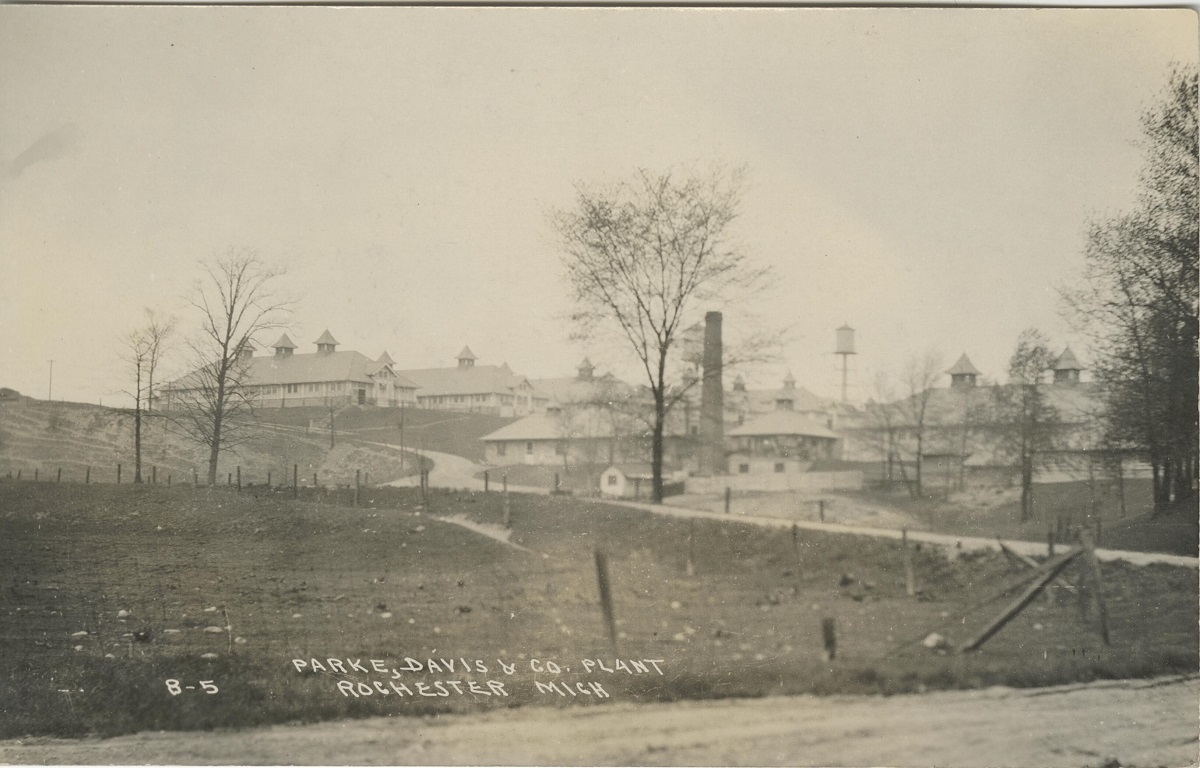
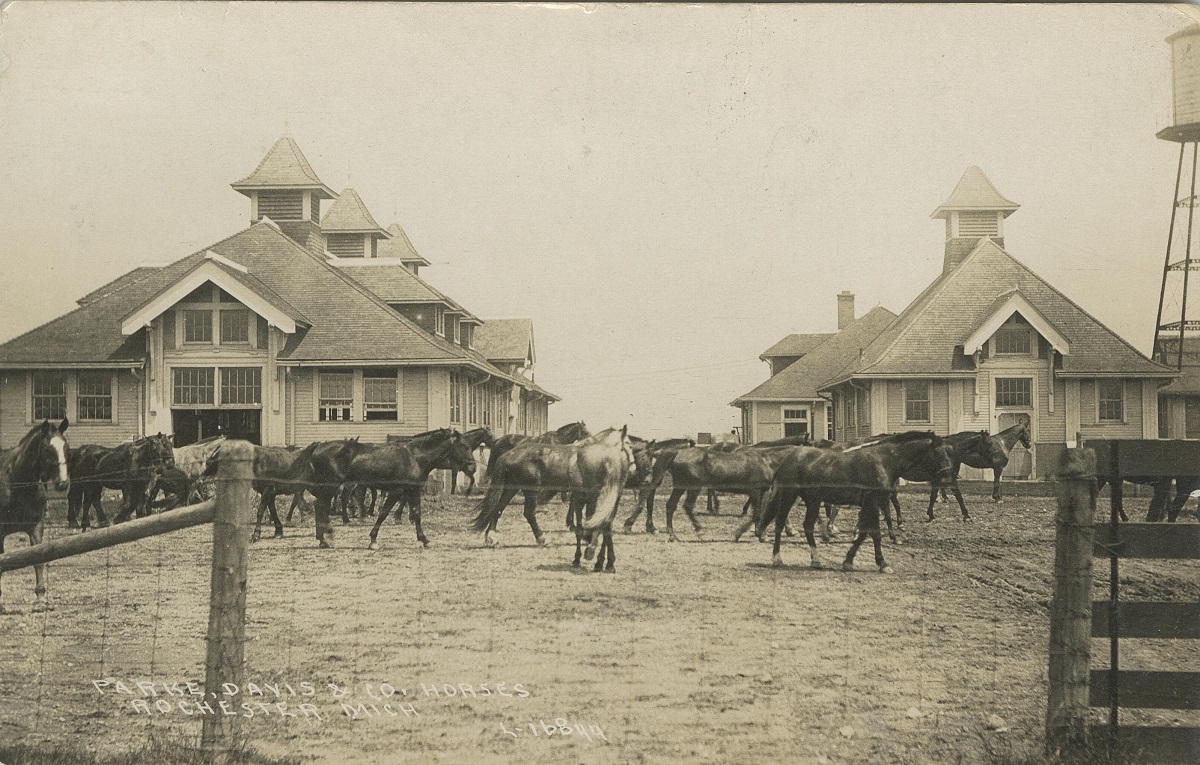
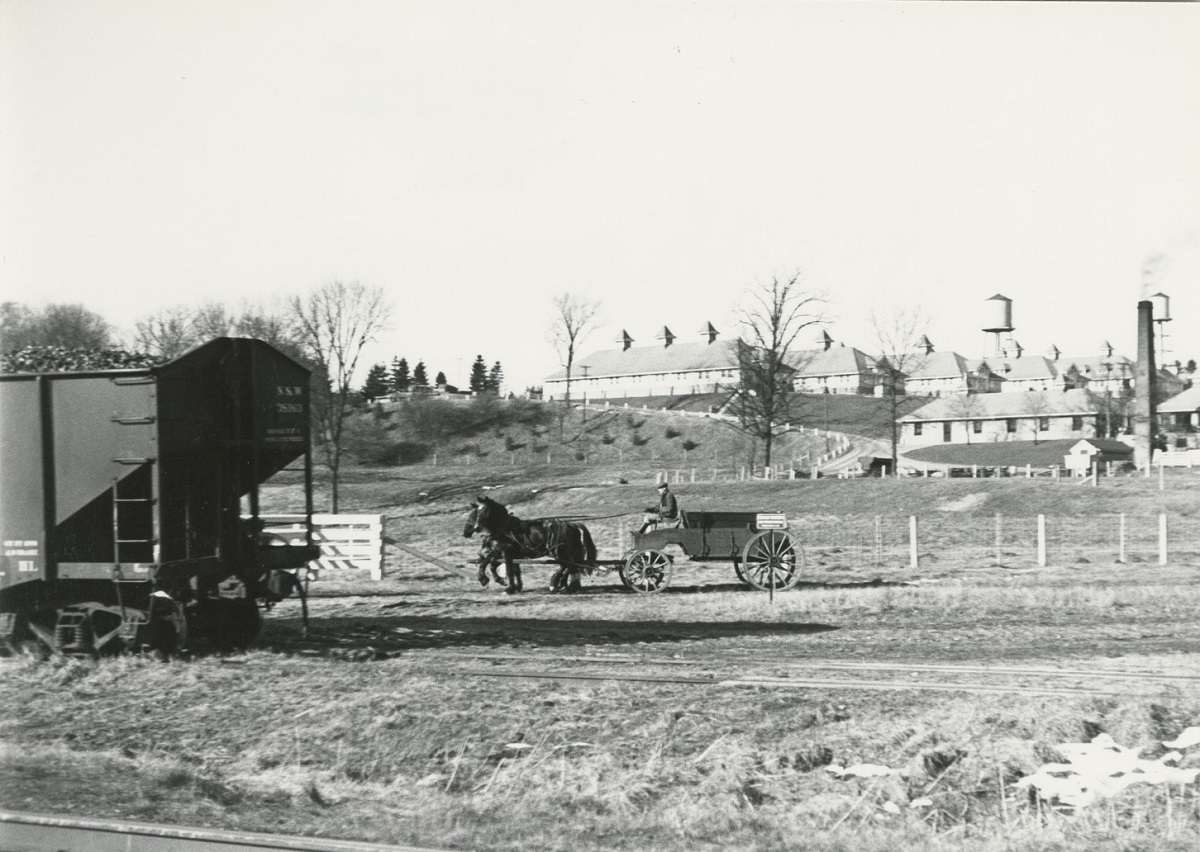
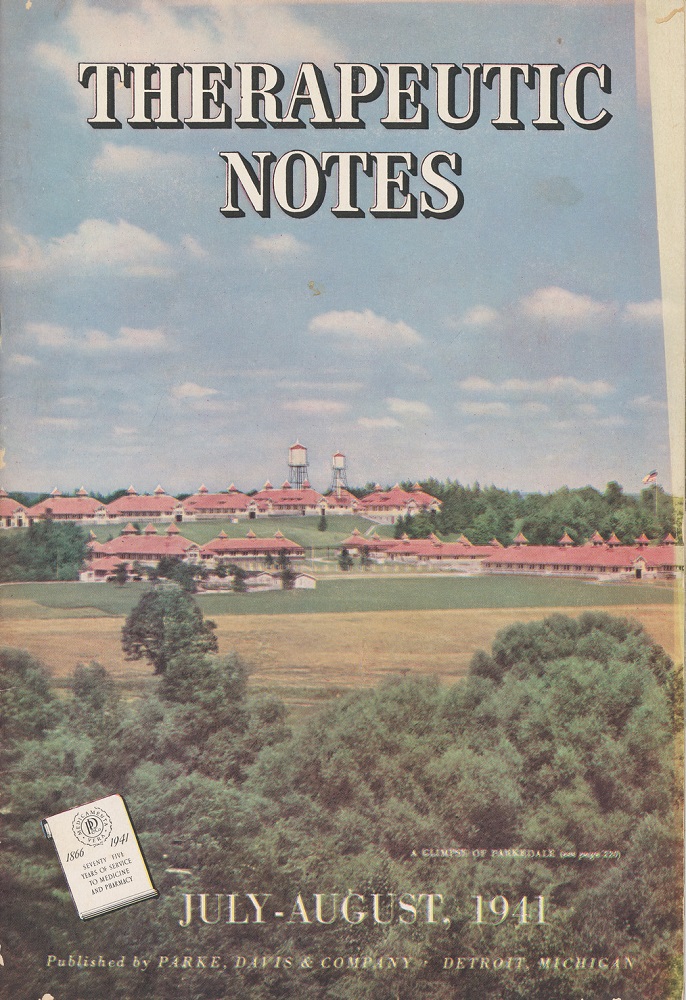
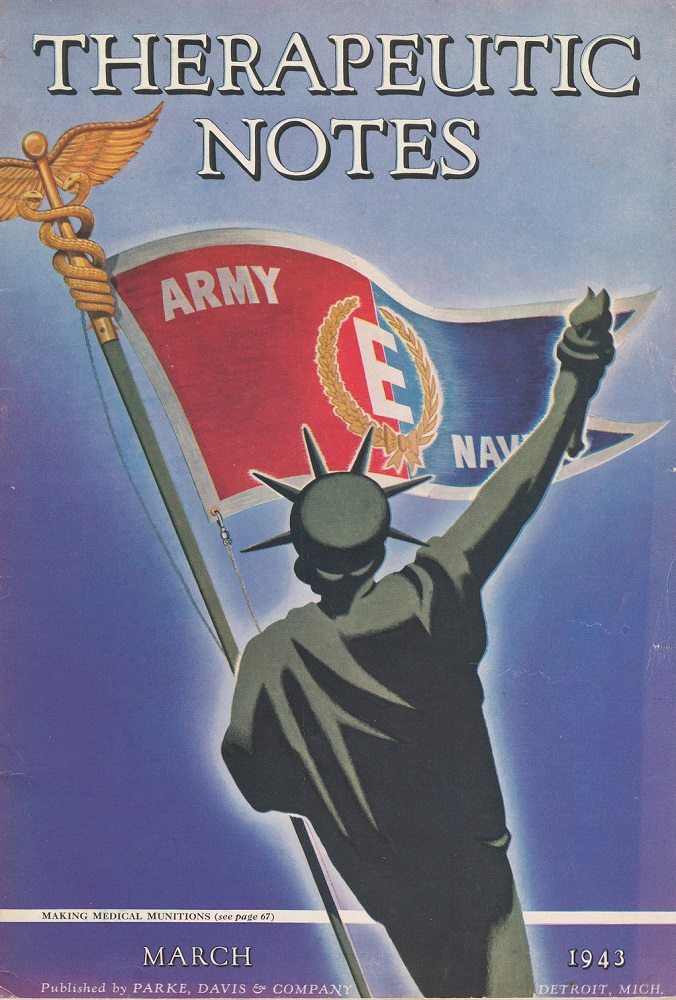

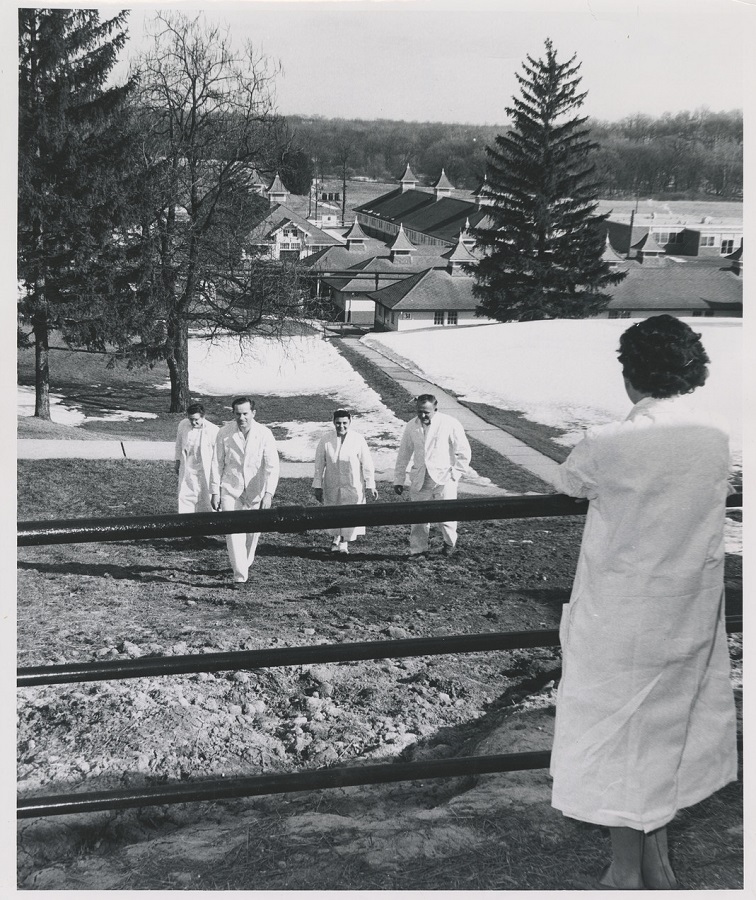
The People of Rochester
The Rod and Susan Wilson collection contains hundreds of photographs of former residents of the Rochester area, often donated by their descendants.
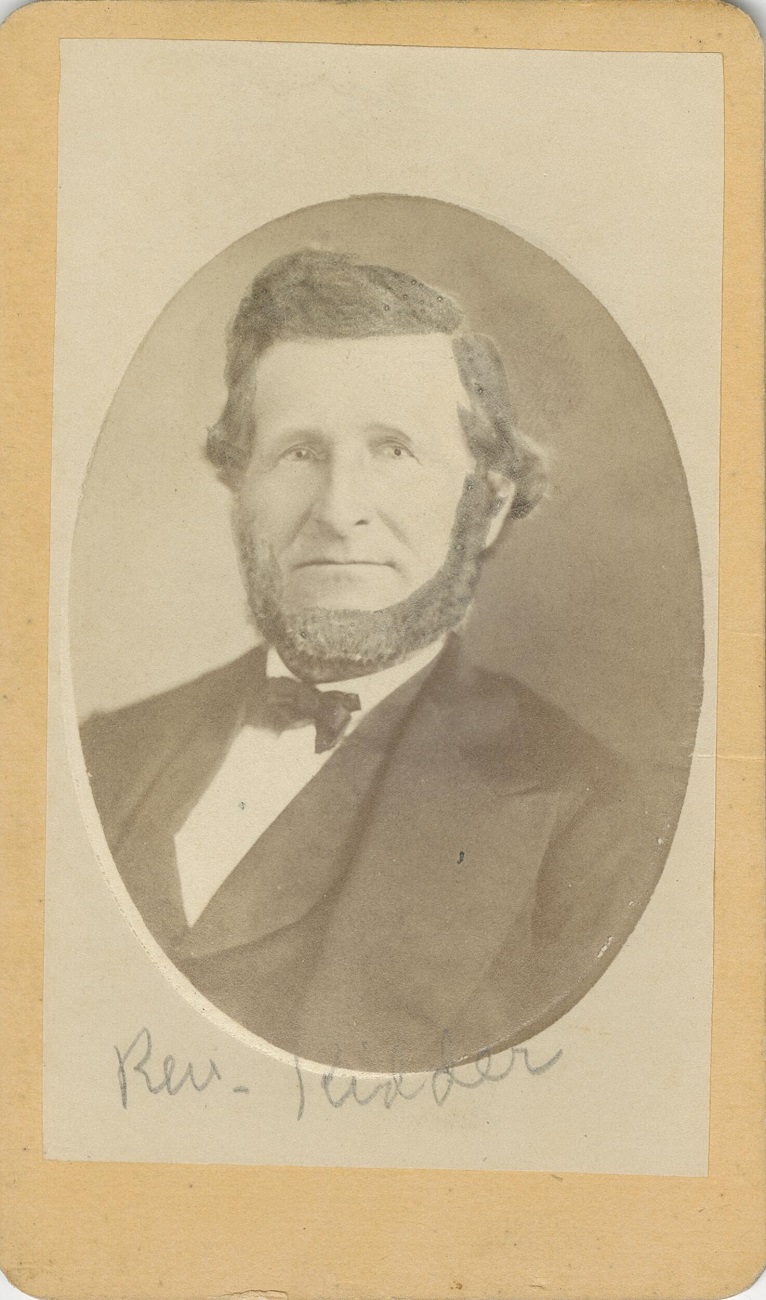
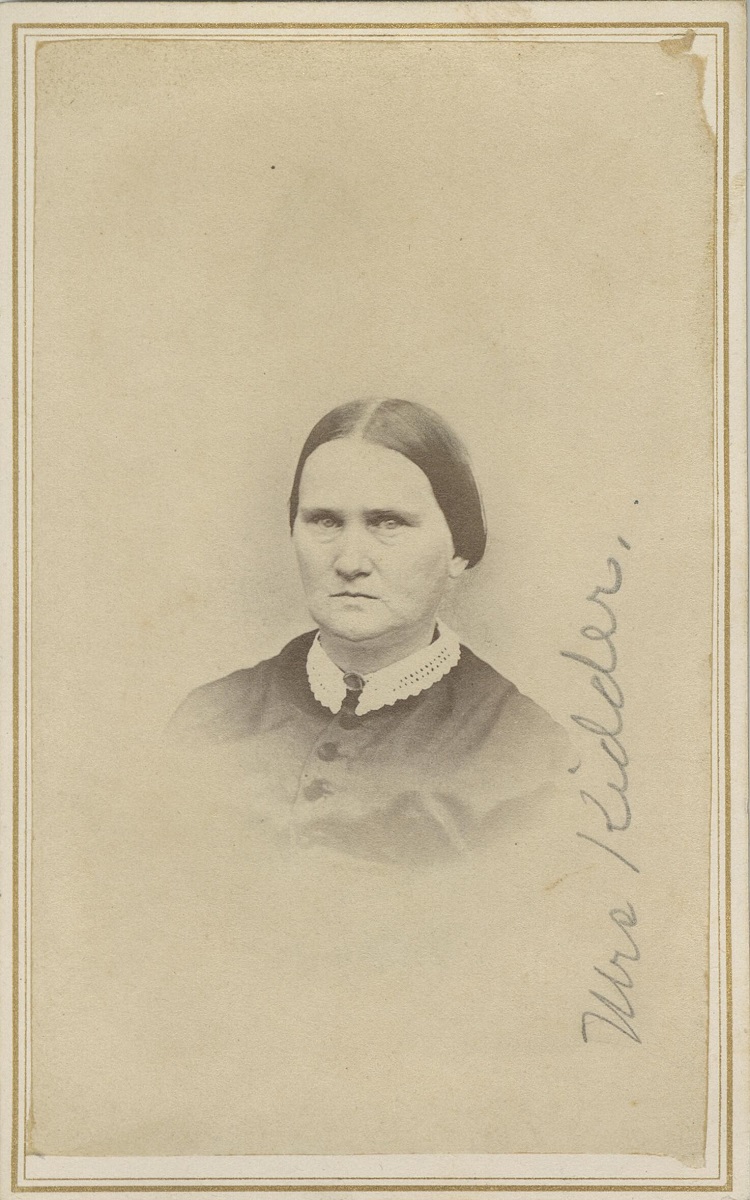
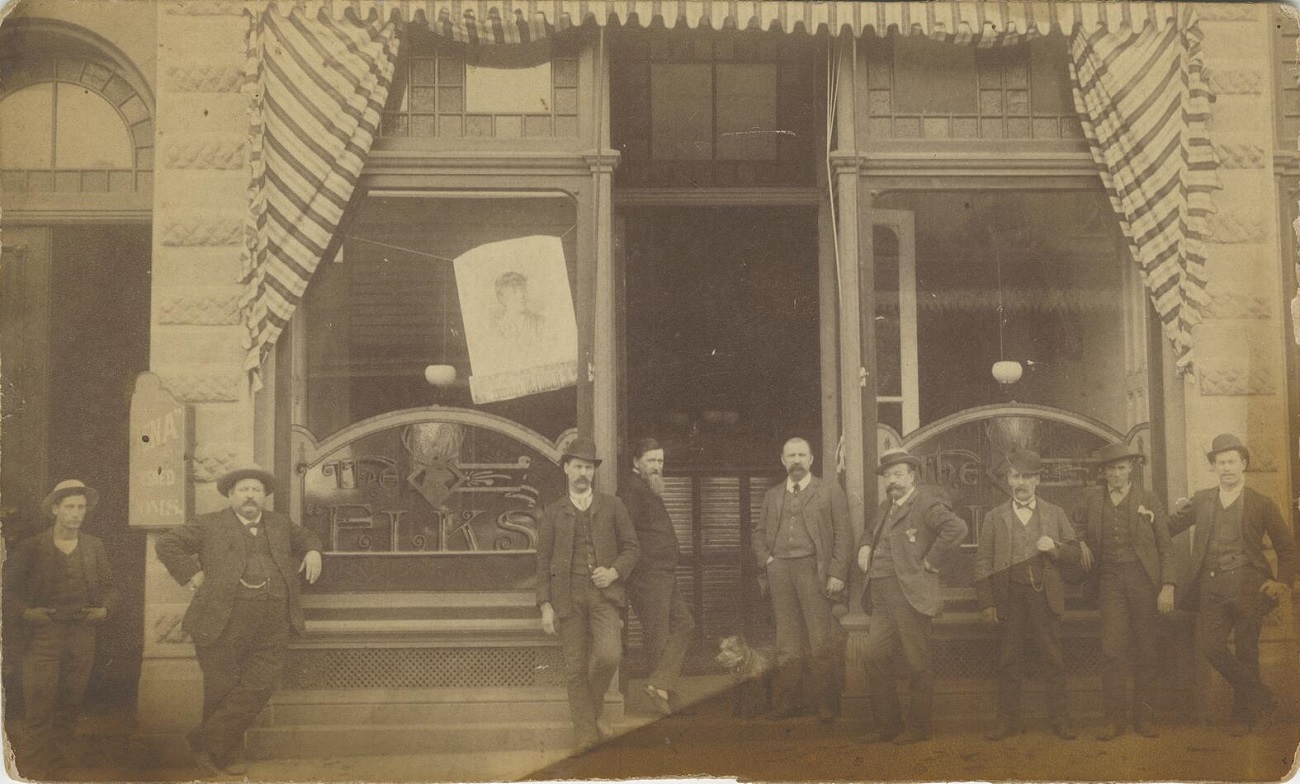
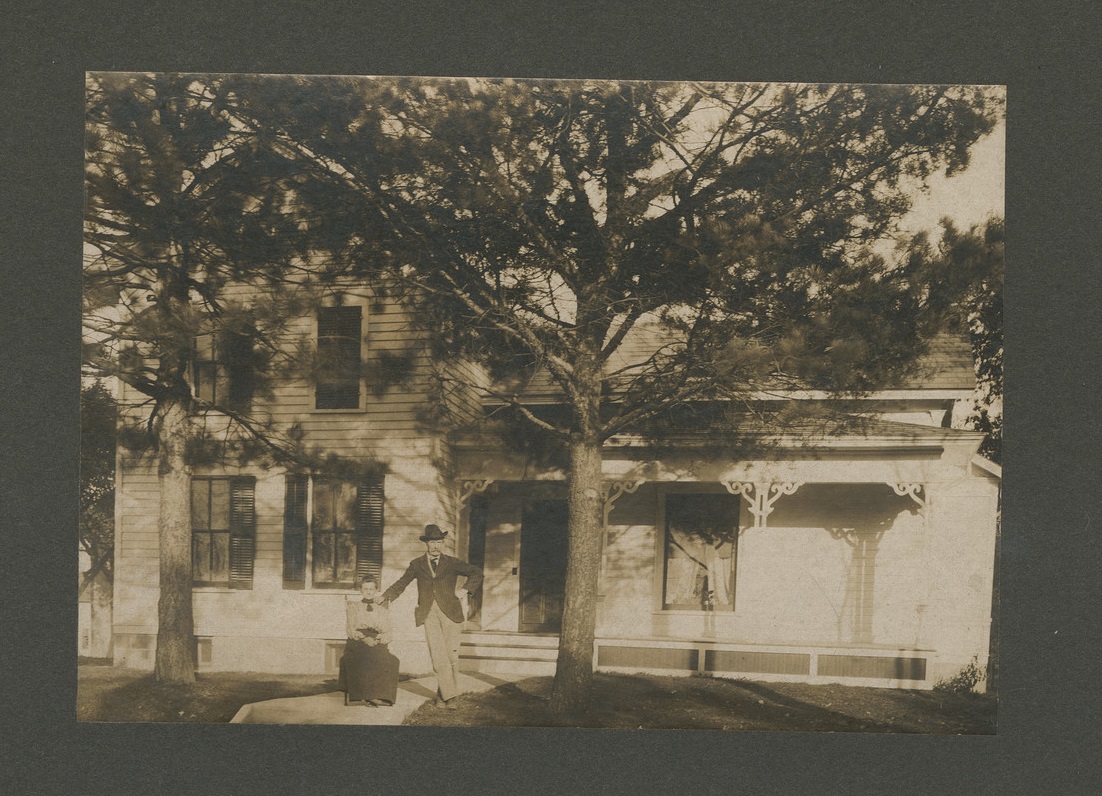
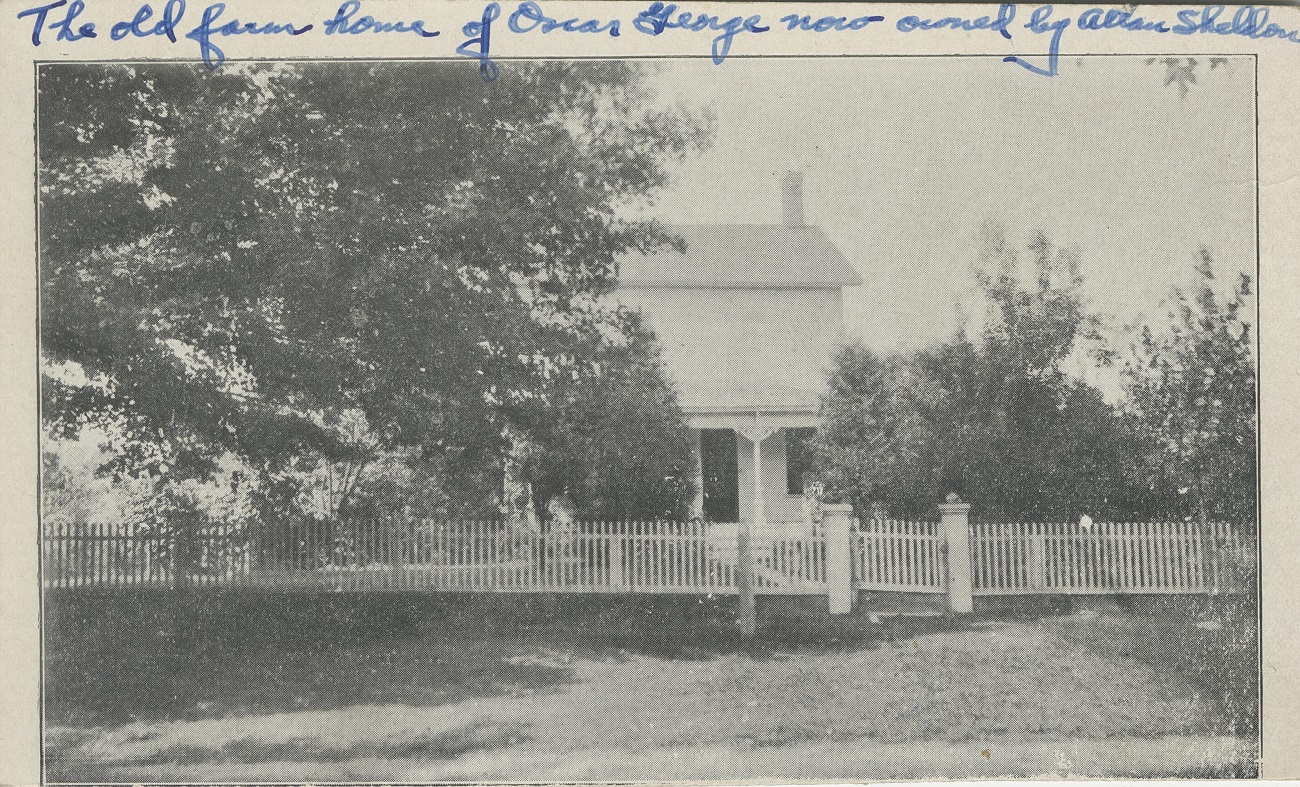
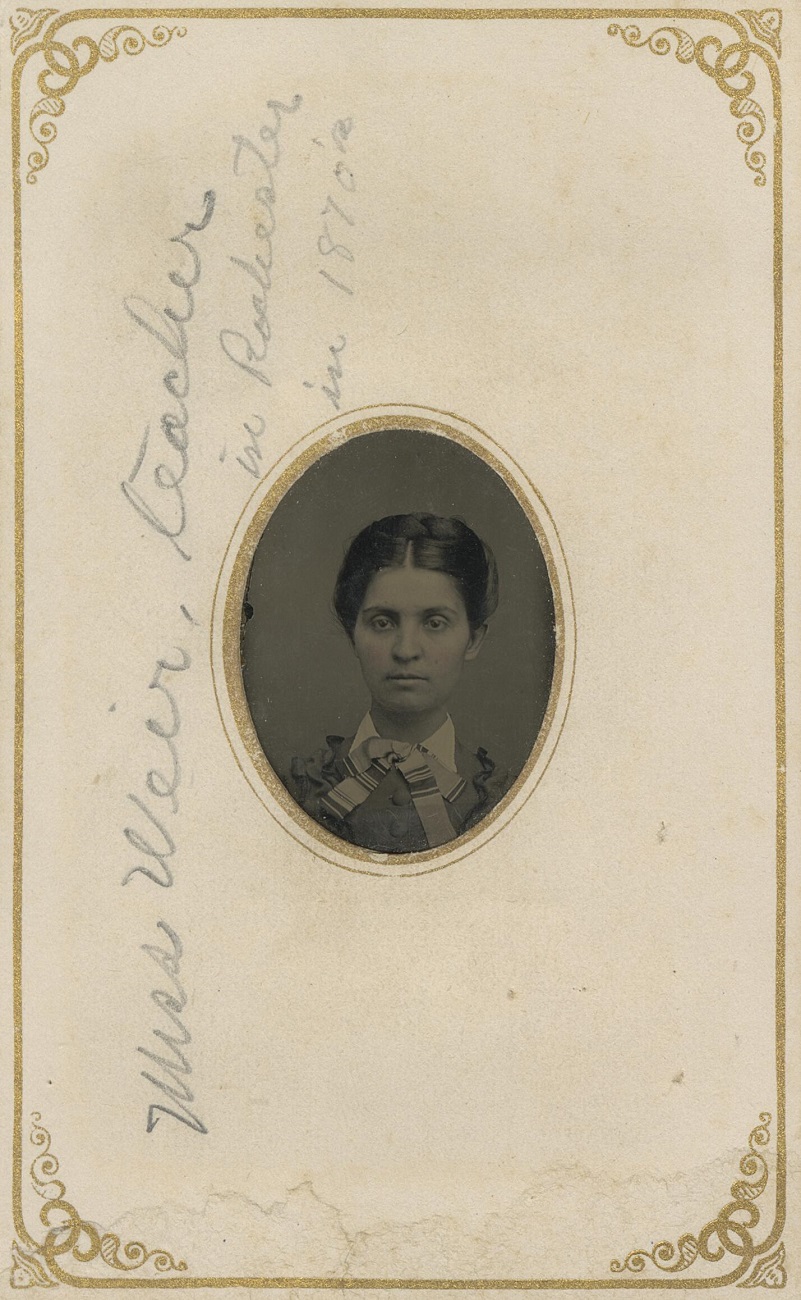
The Hersey family
John Hersey (1778-1857) was the first white man who acquired public land in what was to become Oakland County in 1818.
The following summer he and other early white settlers built a dam and sawmill on the banks of Paint Creek, later followed by a gristmill, establishing one of the earliest industries in the area and contributing to attracting new families.
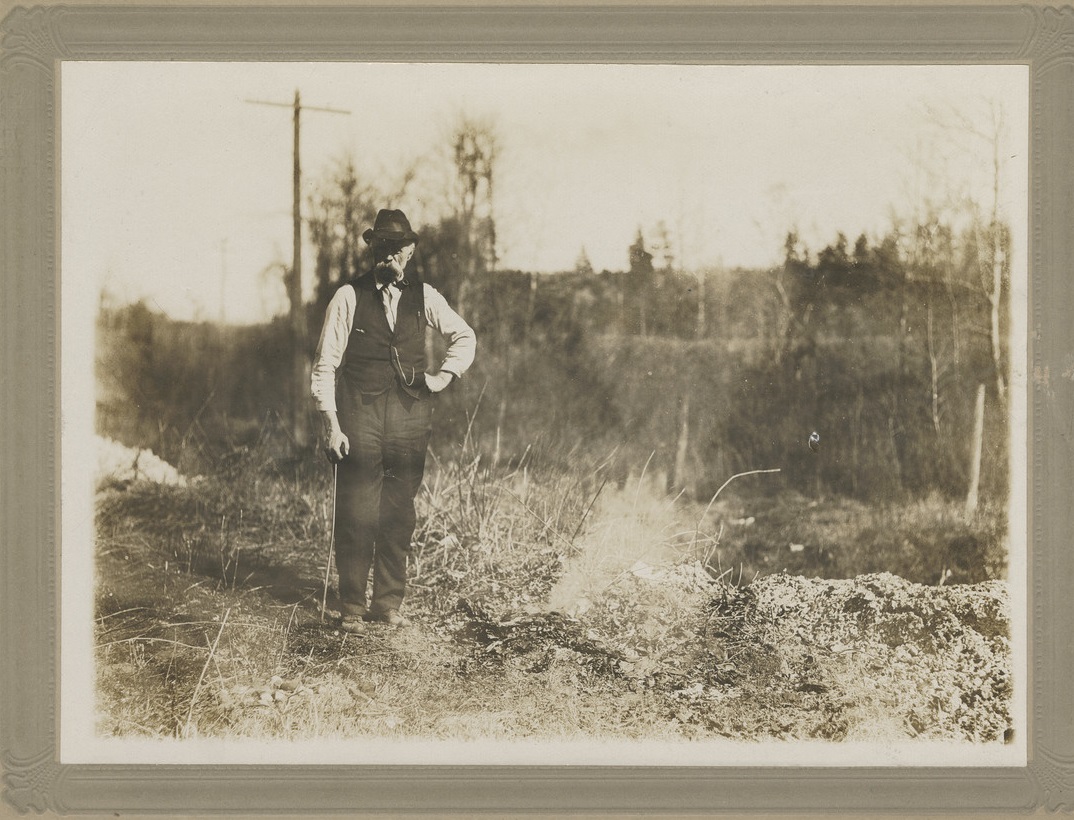
George Franklin Hersey (“Frank”, 1849-1928) was John Hersey’s grandson and a lifelong Rochester resident. He worked as an interlocker man for the railroad and later on for the Western Knitting Mills.
The Frank family
John Frank settled in section 26 of Avon Township in 1826 and became a successful farmer. He and his wife Arabella Chipman had 11 children, including Lucius Lyon, born in 1843, and Edwin Rufus. After his wife died, he married Adeline Kettell in 1849.
Lucius joined Company B of the 22nd Michigan Volunteer Infantry in 1862 and was wounded at the Battle of Chickamauga, Georgia (1863). After the war, he returned to farming. He passed away in 1939.
Lucius’ brother Edwin (1838-1911) served in the Michigan 5th Infantry during the Civil War. He served in the state house for a few years and ran a real estate business in Rochester. (Rochester: A Sketch..., p.6).
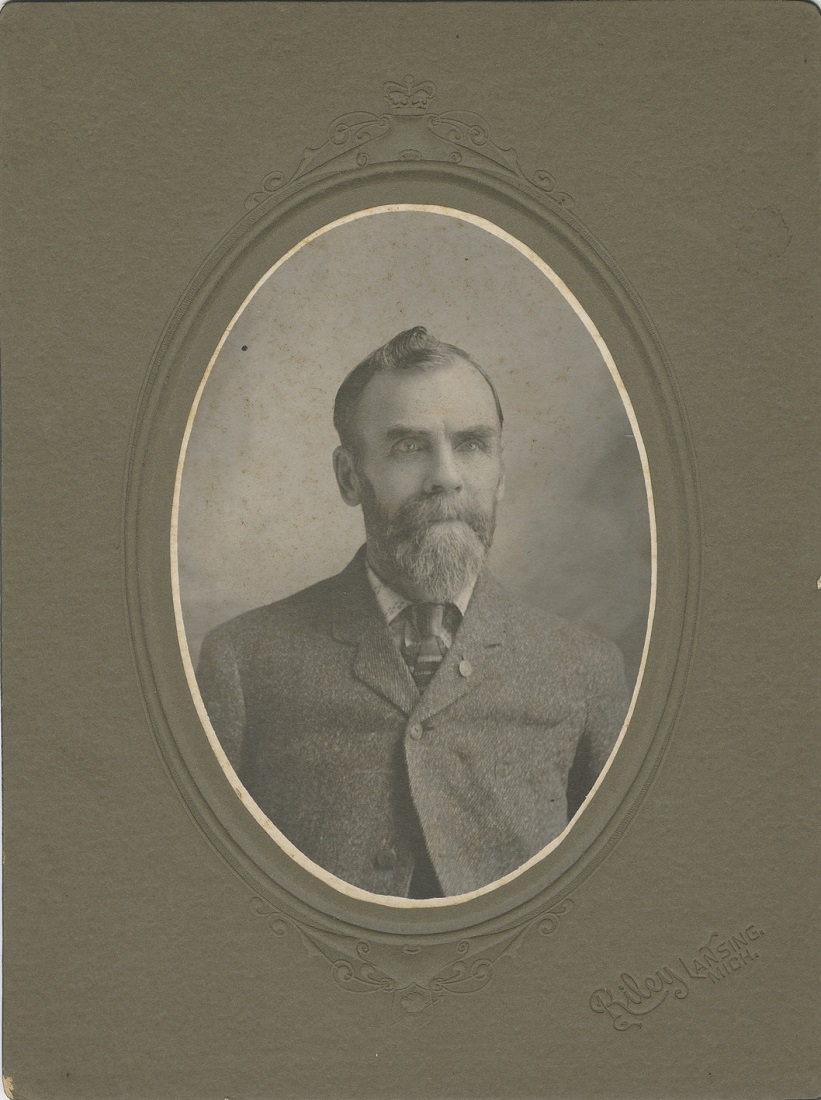
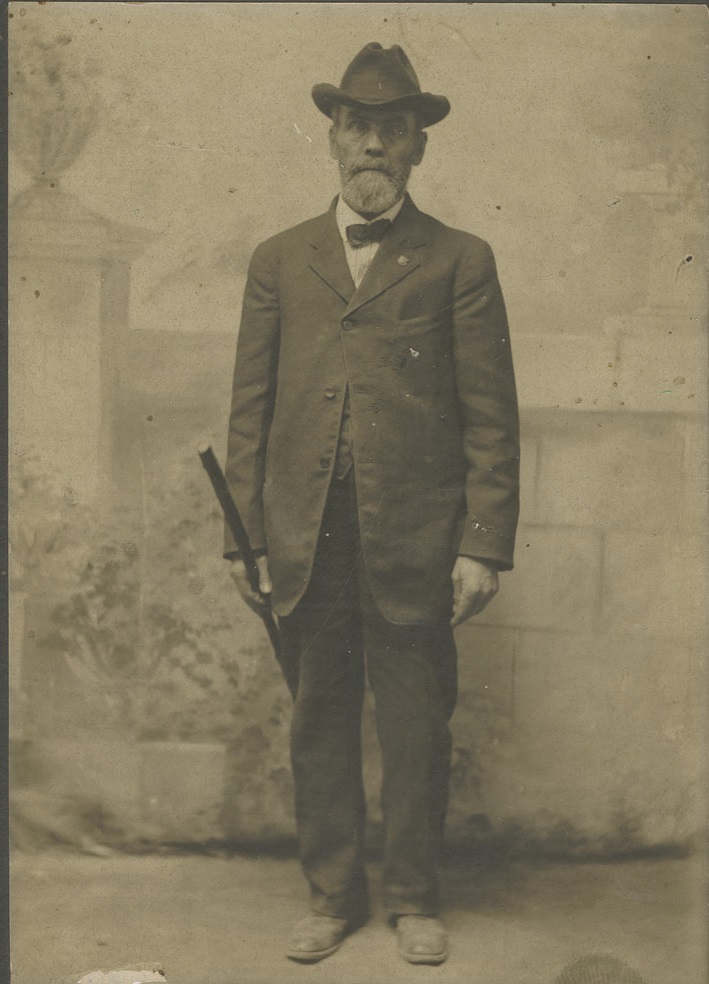
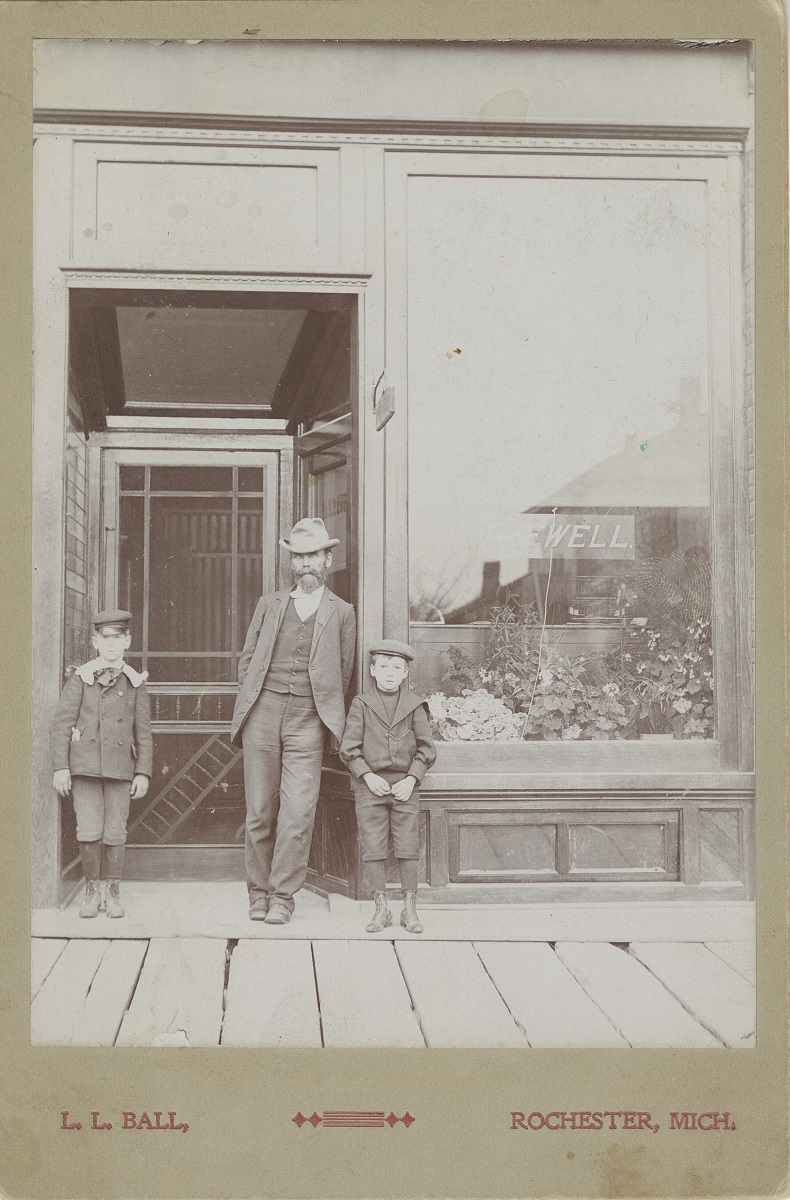
John James Snook, Rochester’s poet laureate
John James (J. J.) Snook was born in 1842, the first child of James H. Snook and Sarah Axtell. The Snook family had come to Michigan in 1836 and purchased 400 acres of farmland. During the Civil War J. J. served in the Twenty-second Michigan Volunteer Infantry.
After his discharge in 1865 he became a farmer, later acquiring some 170 acres of land in Rochester, which he named Overlook Farm, overlooking the Clinton River (at the southwest corner of Rochester Road and Avon Road). There he grew berries and fruit, developing modern truck farming methods.

J. J. Snook was also a prolific poet and published a book of poetry under the title New Poems and glad Outings. Most of his poems were inspired by his farm and the Rochester area, as well as his travels and Civil War experience.
He died in 1923 and his tombstone bears the words: "Thinker, Teacher, Soldier, Farmer, Poet, Author."
The Rod and Susan Wilson collection contains the personal papers of J. J. Snook, including many manuscripts and publications.
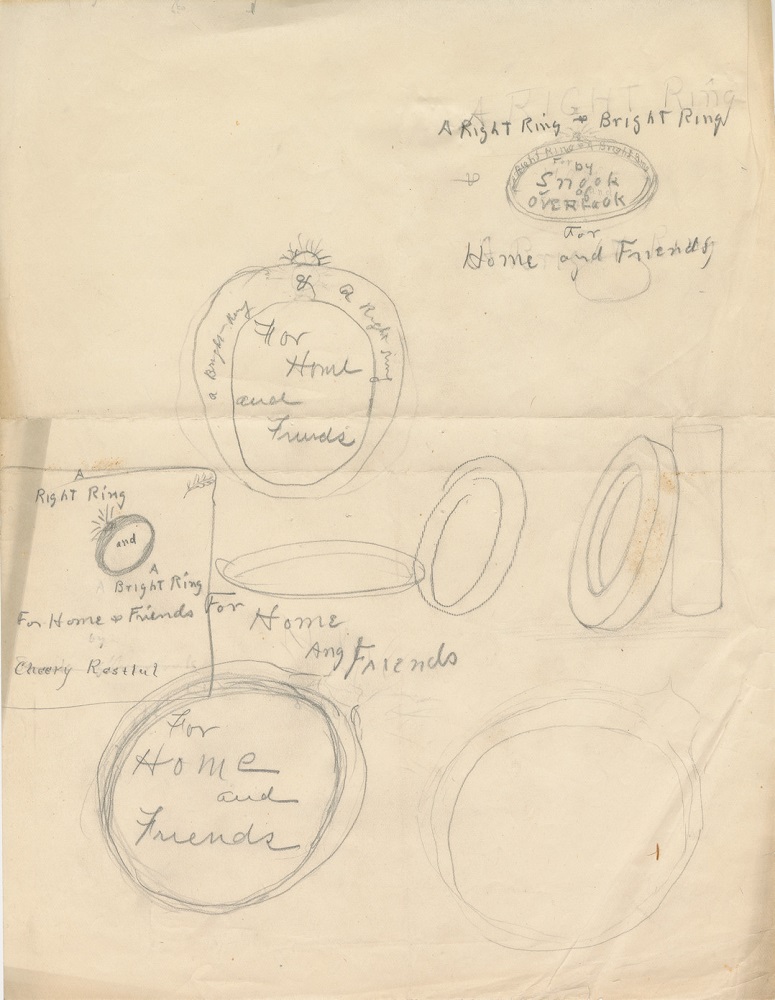
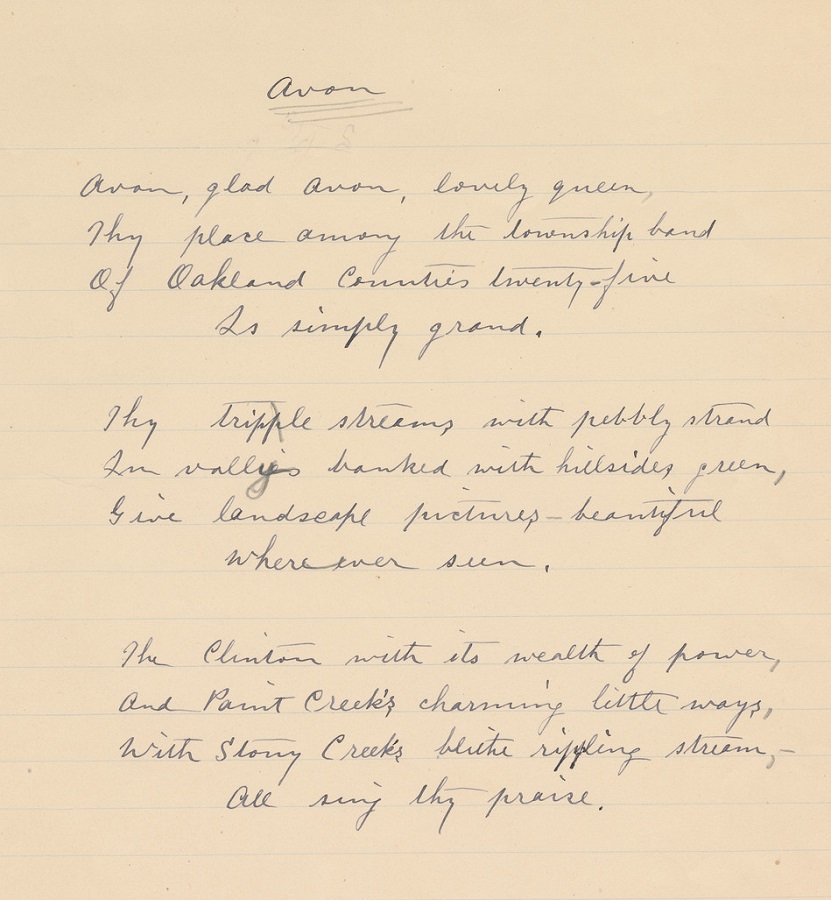
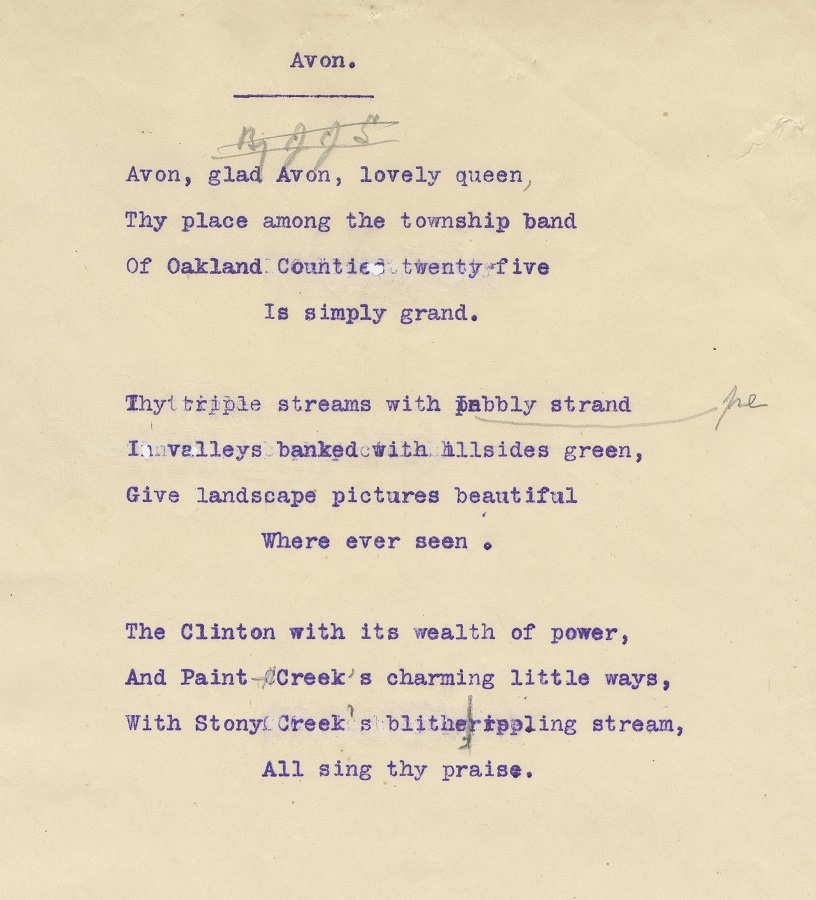
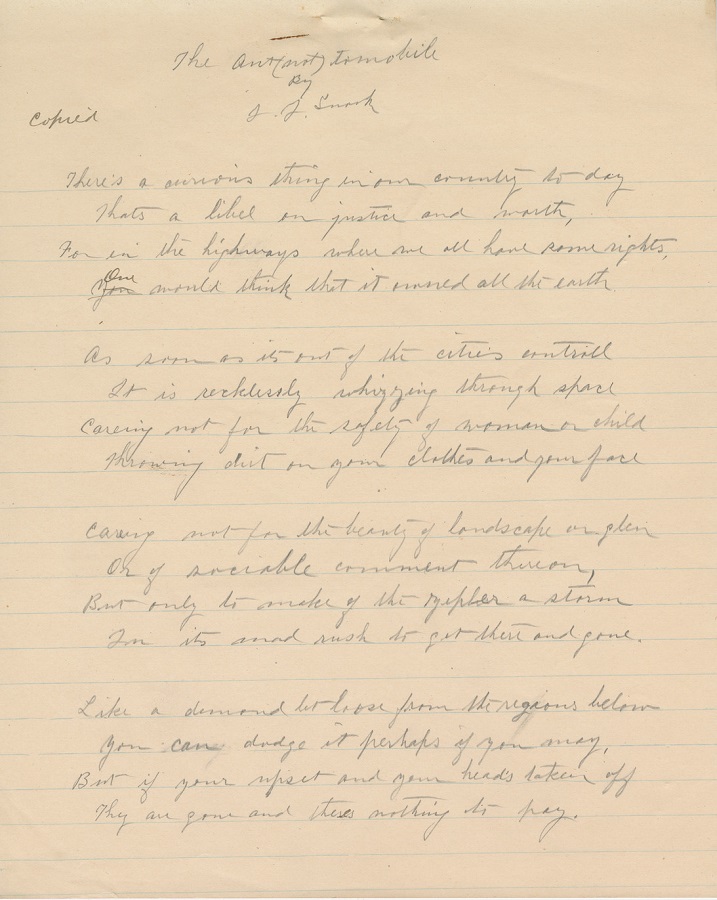
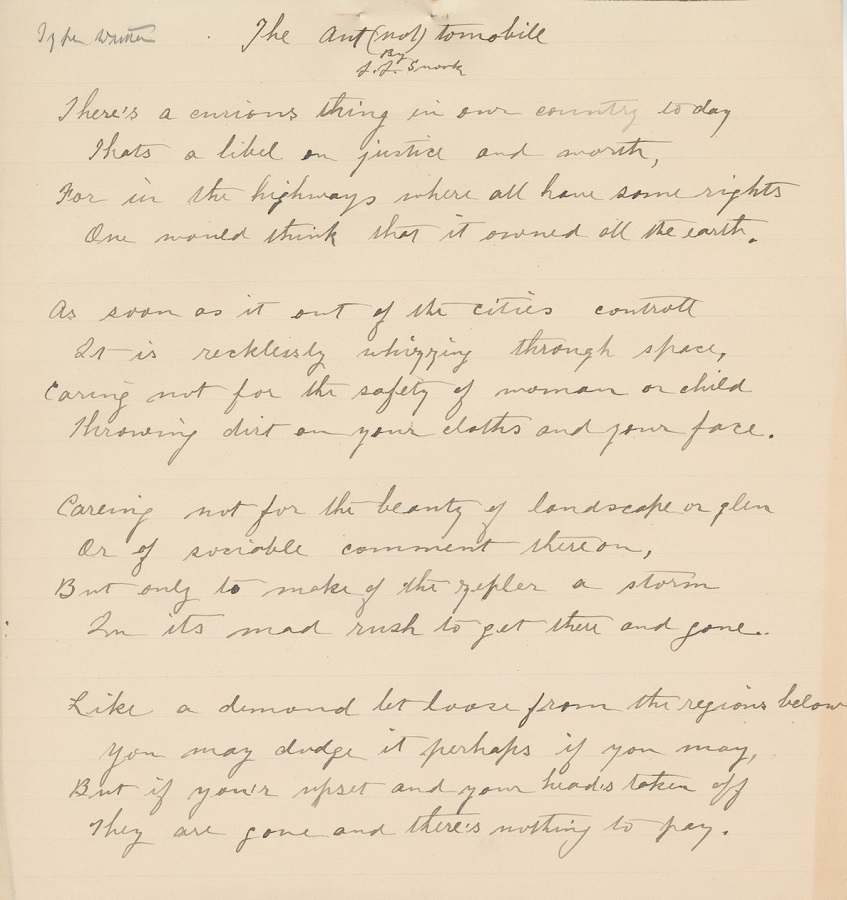
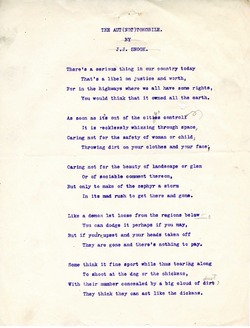
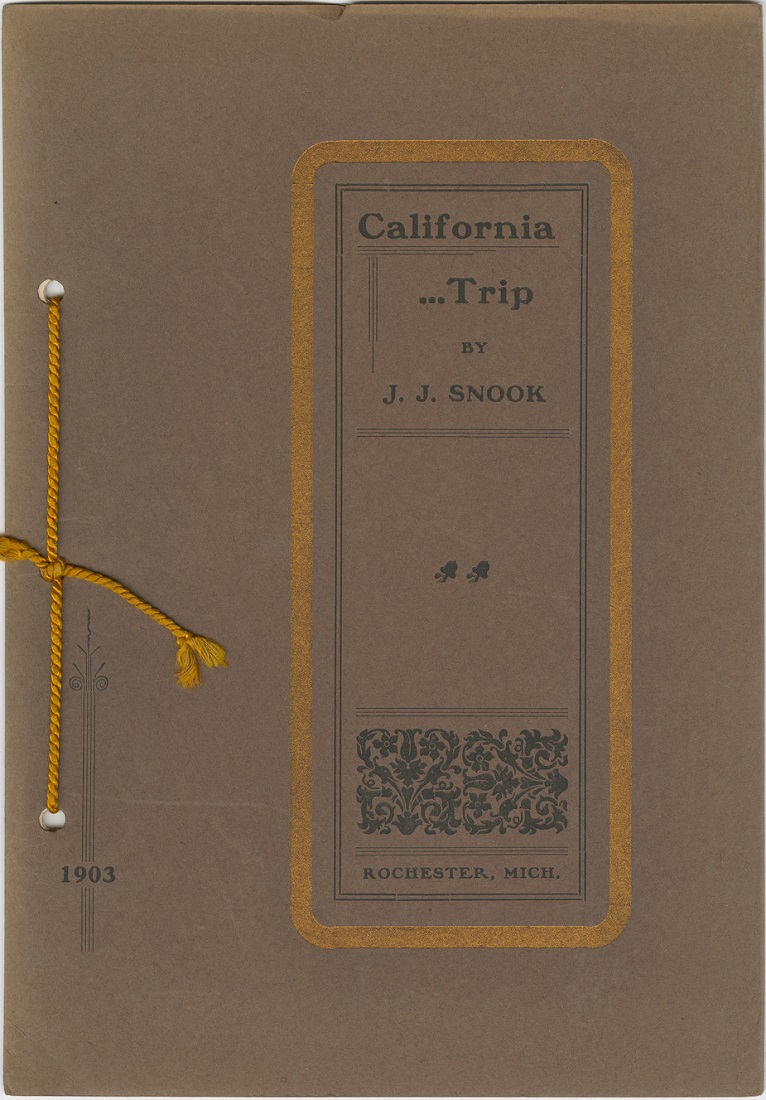
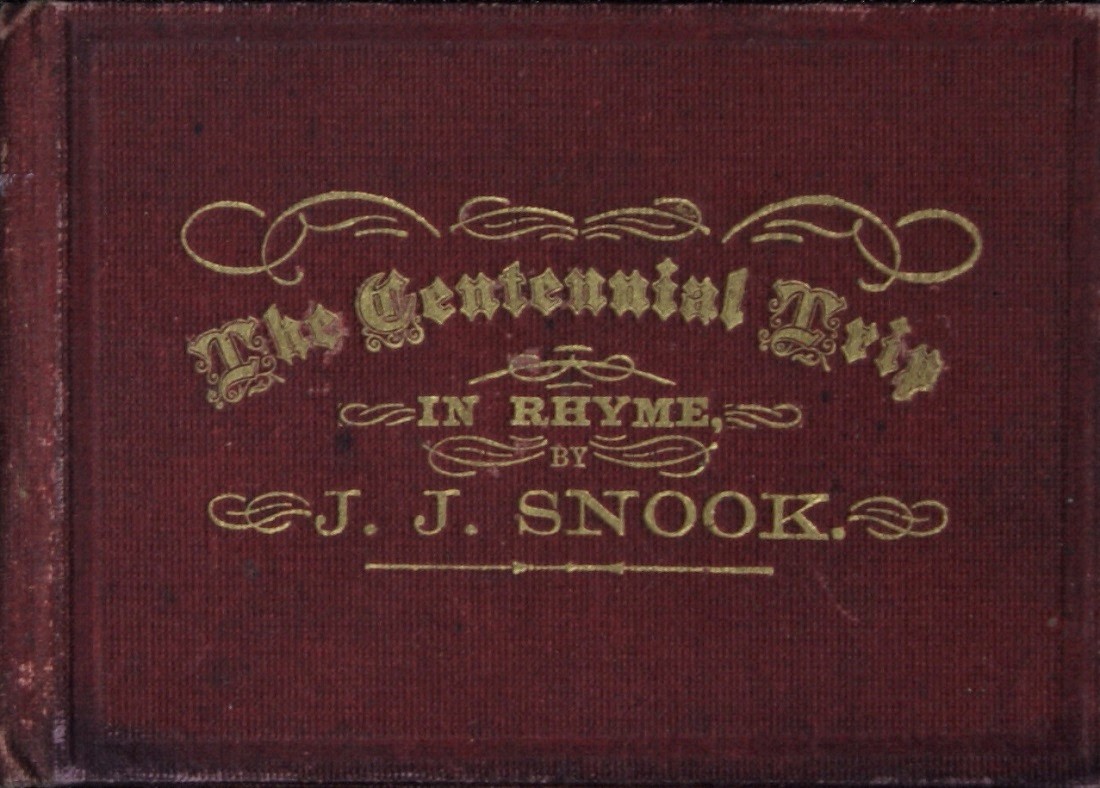
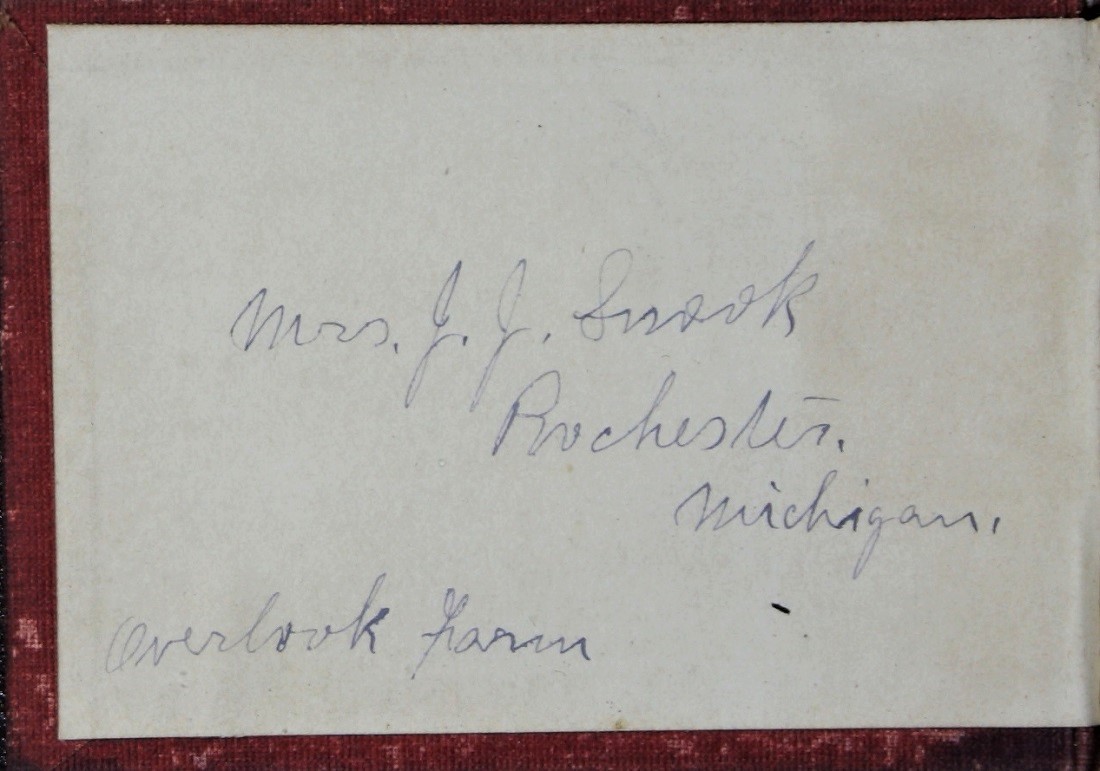
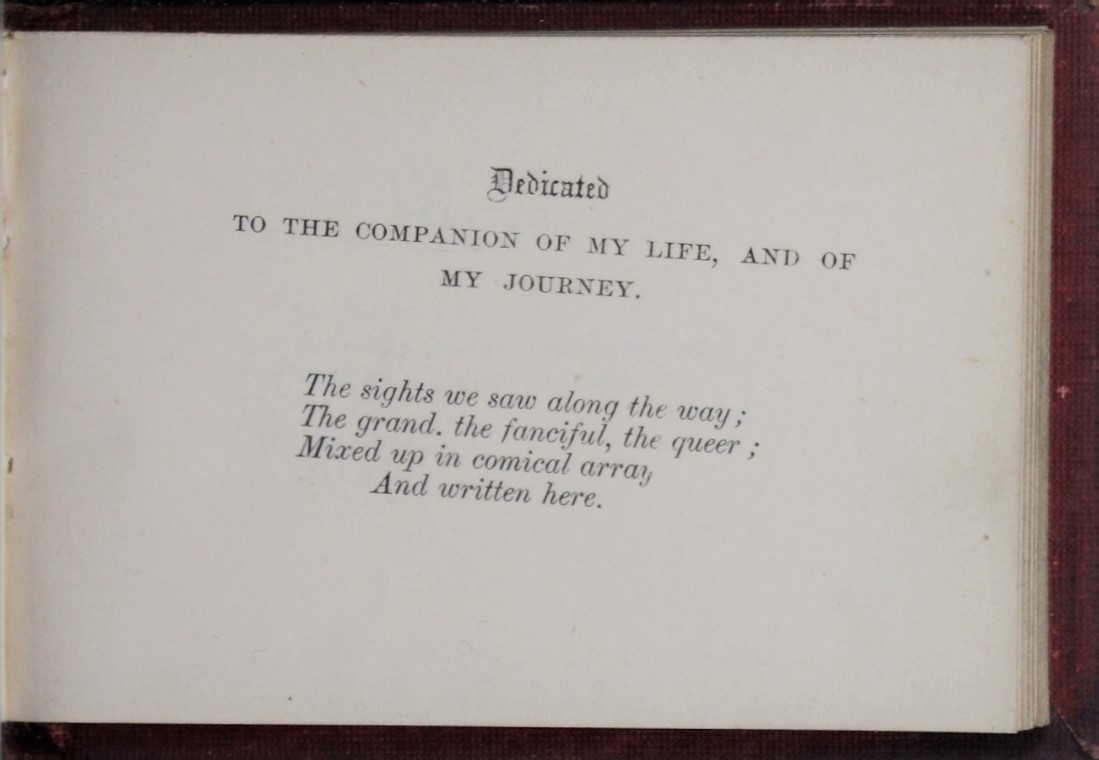
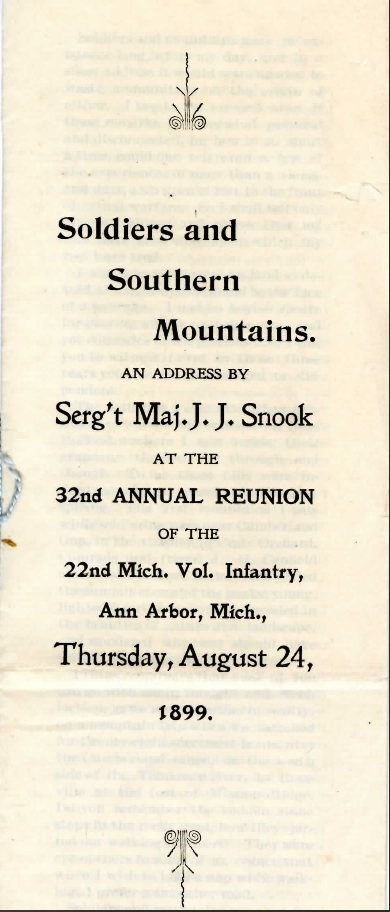
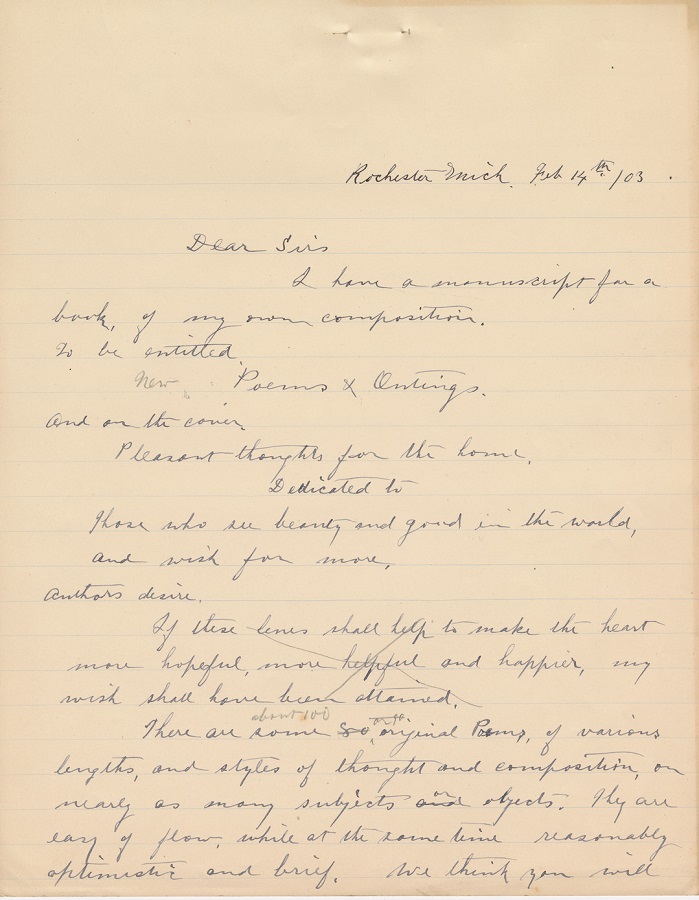
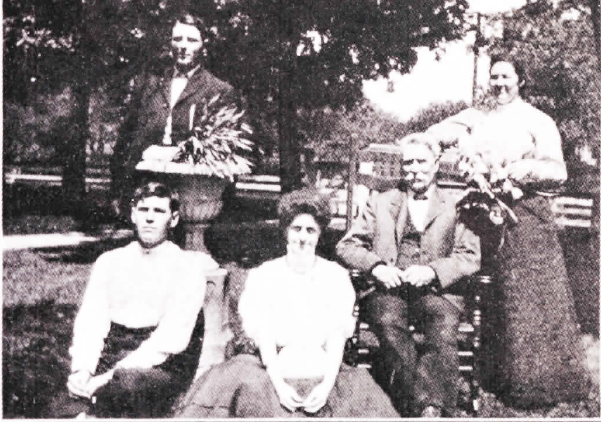
Living in Rochester
The Rod and Susan Wilson collection illustrates many aspects of life in the Rochester area in the 19th and 20th centuries.
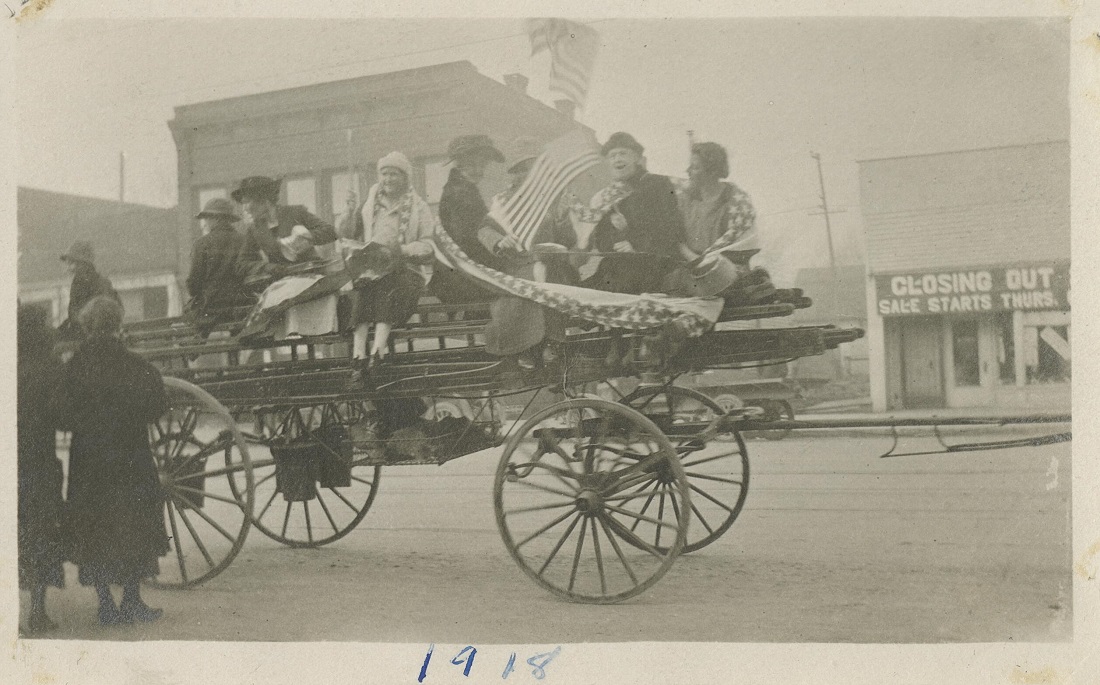
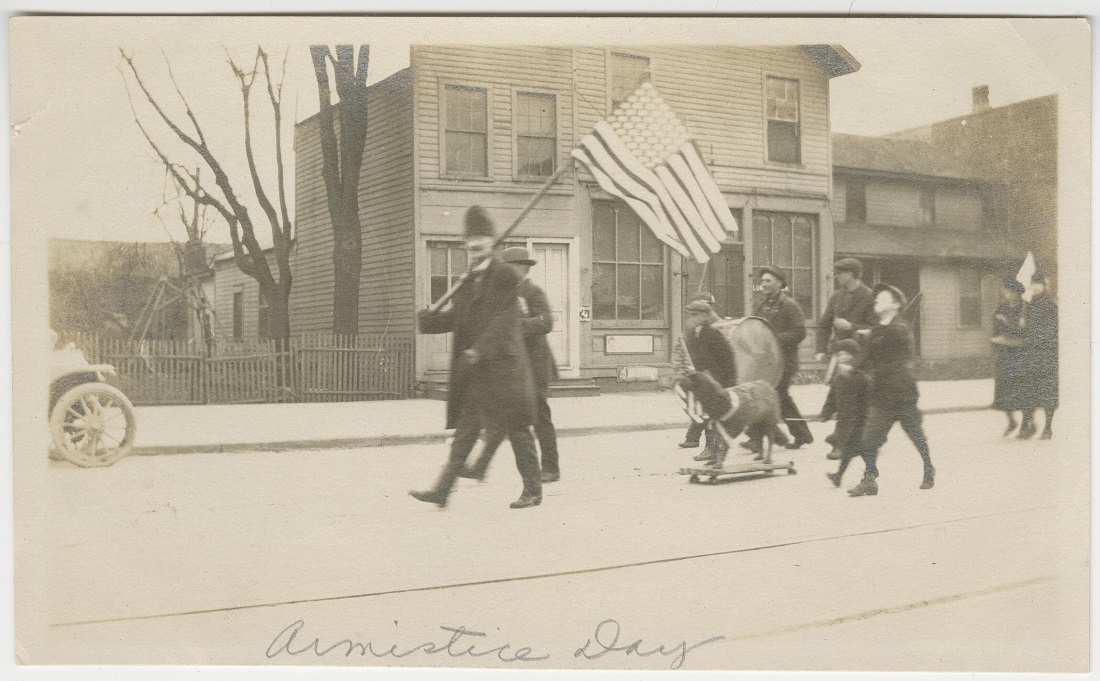
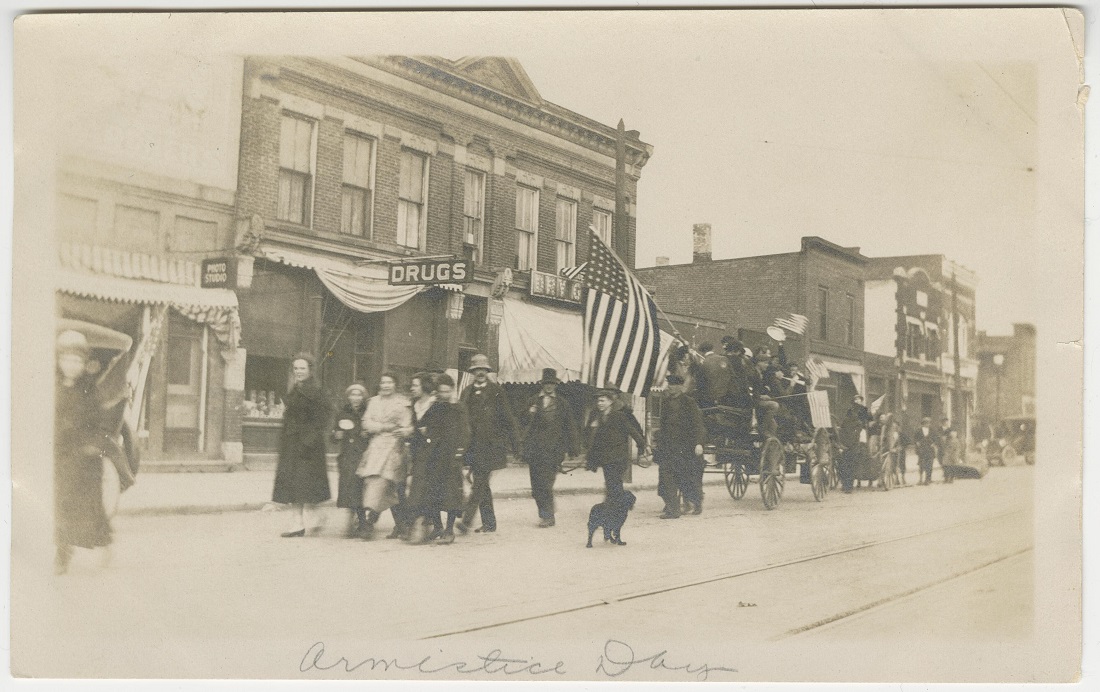

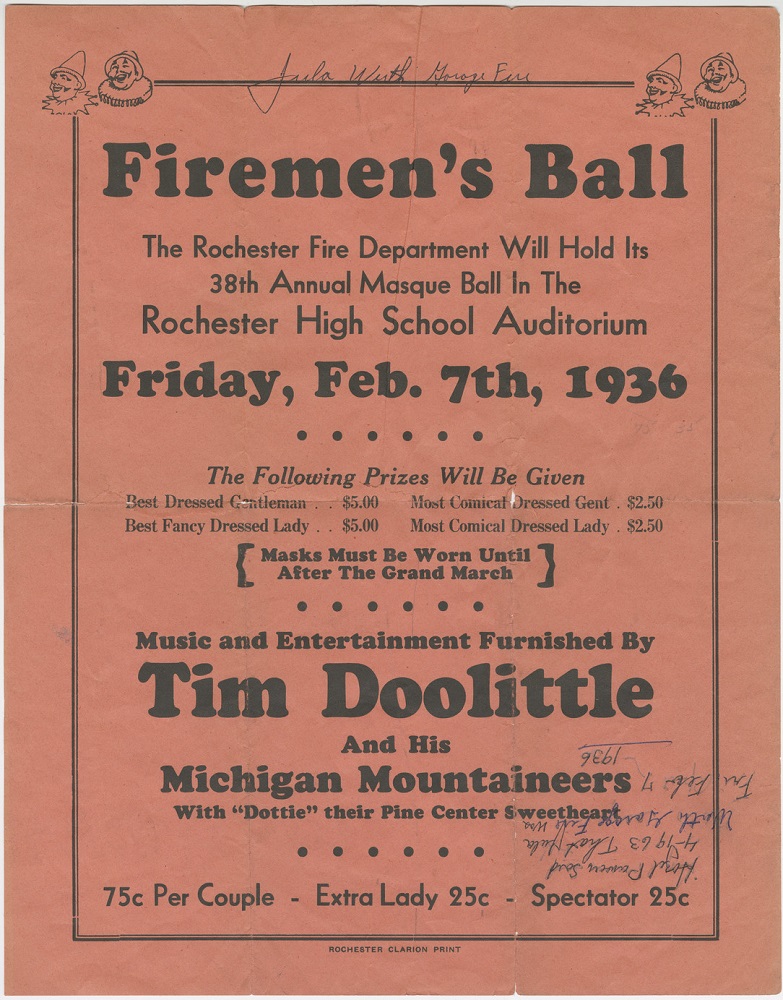
The Idle Hour Theater
The Idle Hour Theater opened on the west side of Main Street, just south of University Drive, in 1914. Advertised as “one of the finest moving picture houses in the state,” it could seat 400. A 1936 remodel expanded it to 500 and the theater was then renamed “Avon Theatre.” It operated until 1954 although after 1941 was relegated to a second role as another theater, the Hills, opened across the street.
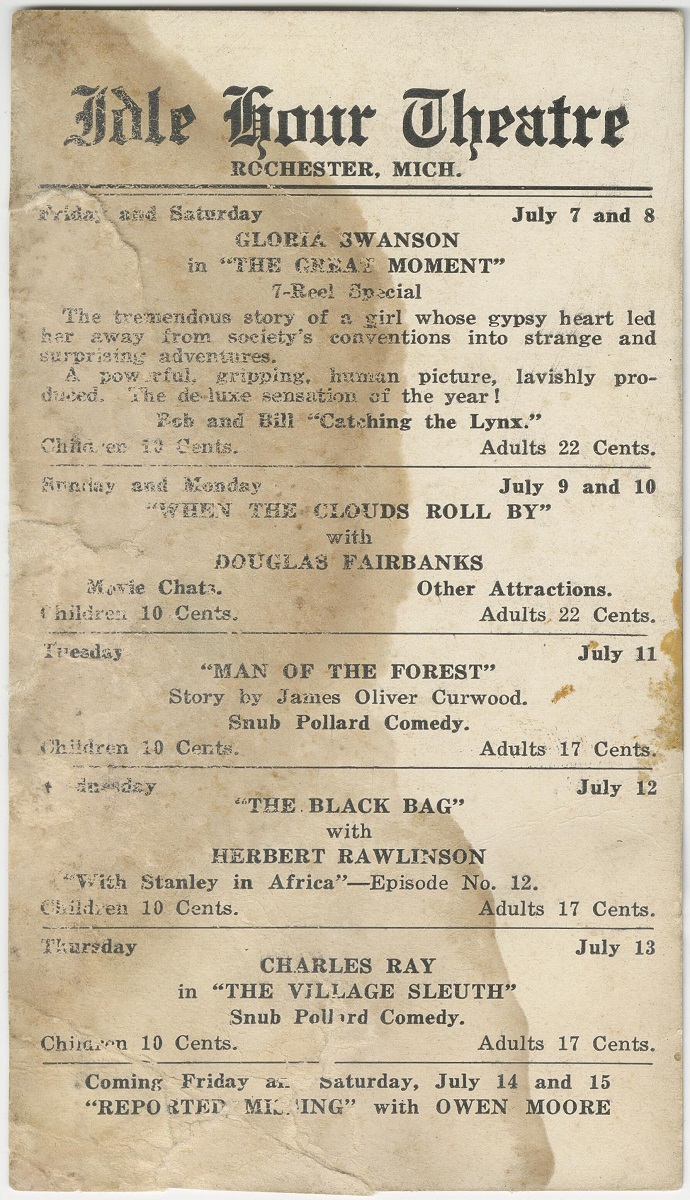
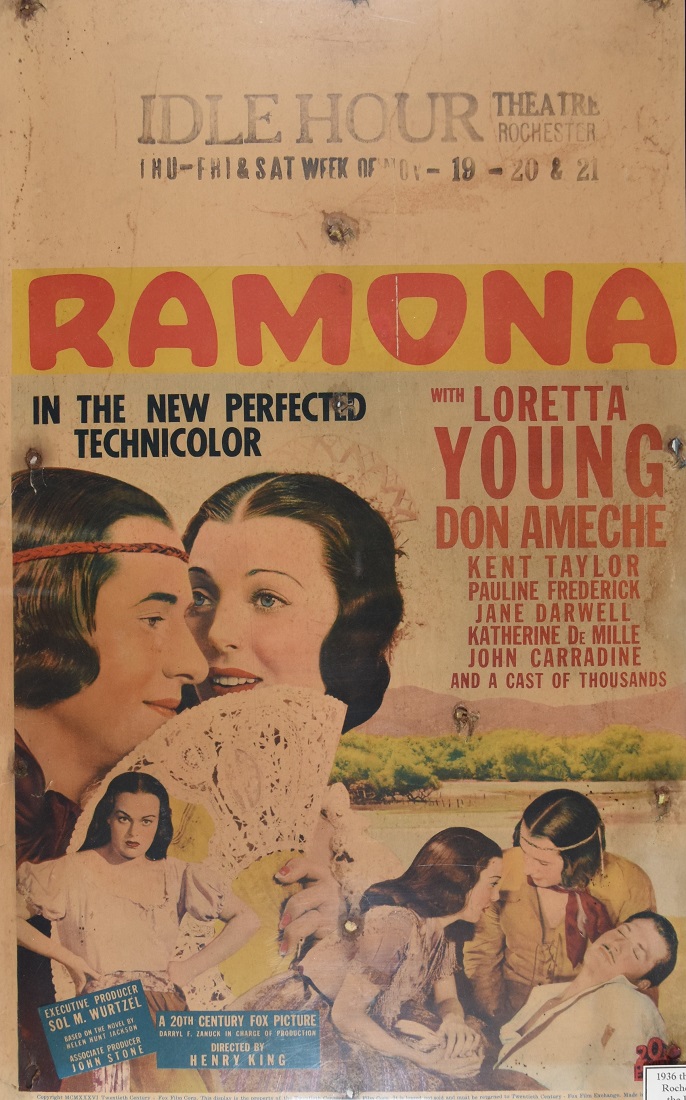

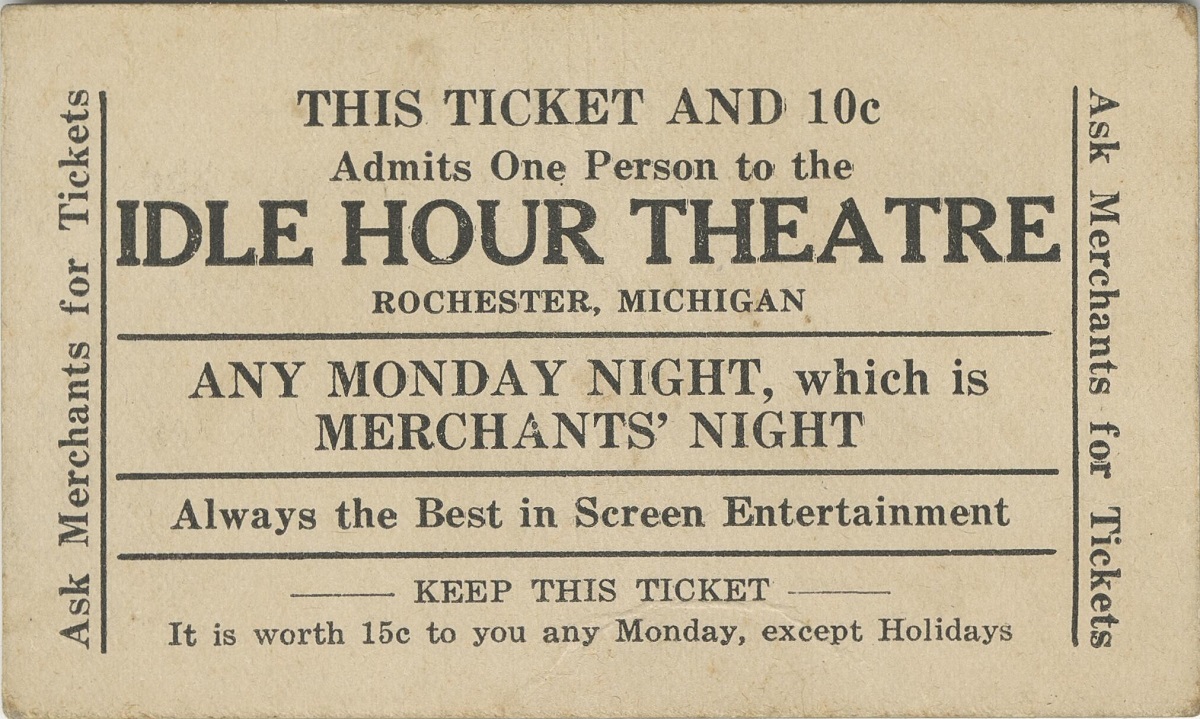
The Ski Jump
Ski jumping was a big attraction in the Rochester area in the 1920s. The Rochester ski jump was inaugurated on February 1, 1926 and for years Hill held many competitions, even attracting international participants and Olympic champions.
It was the work of the Hall brothers who came from Ishpeming, in the Upper Peninsula. They created the Detroit Ski Club and built the ski jump with wood and steel on land they purchased from the Newberry farm - known by locals as “Newberry Hill” - on Bloomer Road at the southeastern edge of Rochester.
In 1934, strong winds destroyed the facility. It was rebuilt, and again destroyed by a storm in the 1940s.
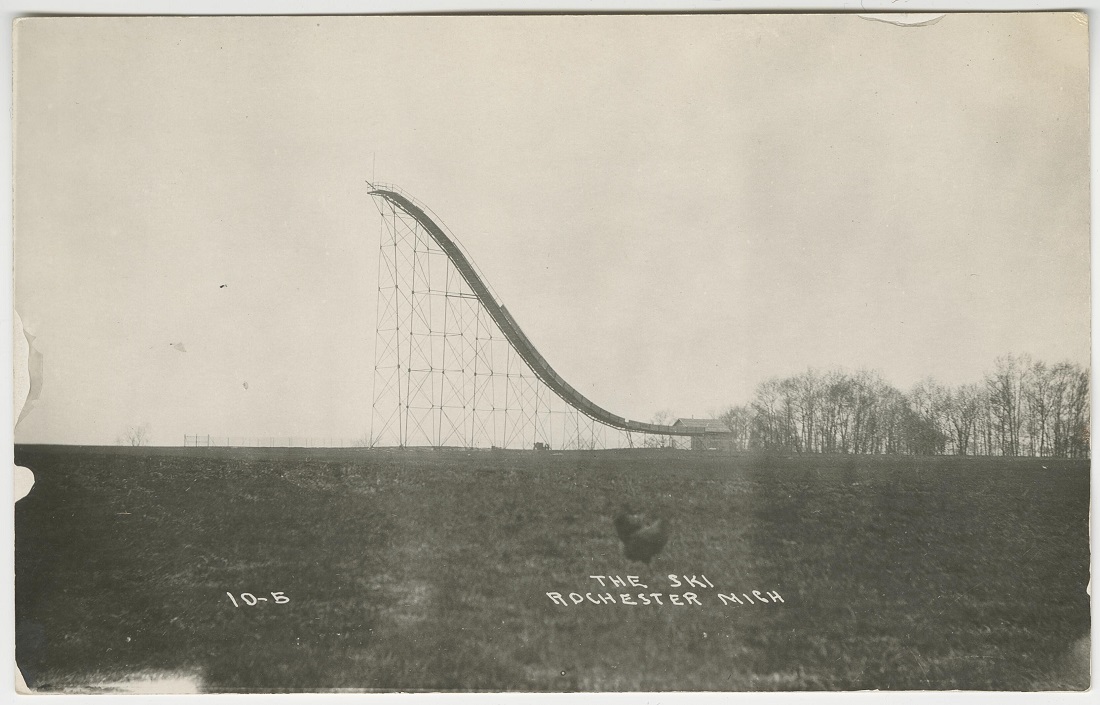
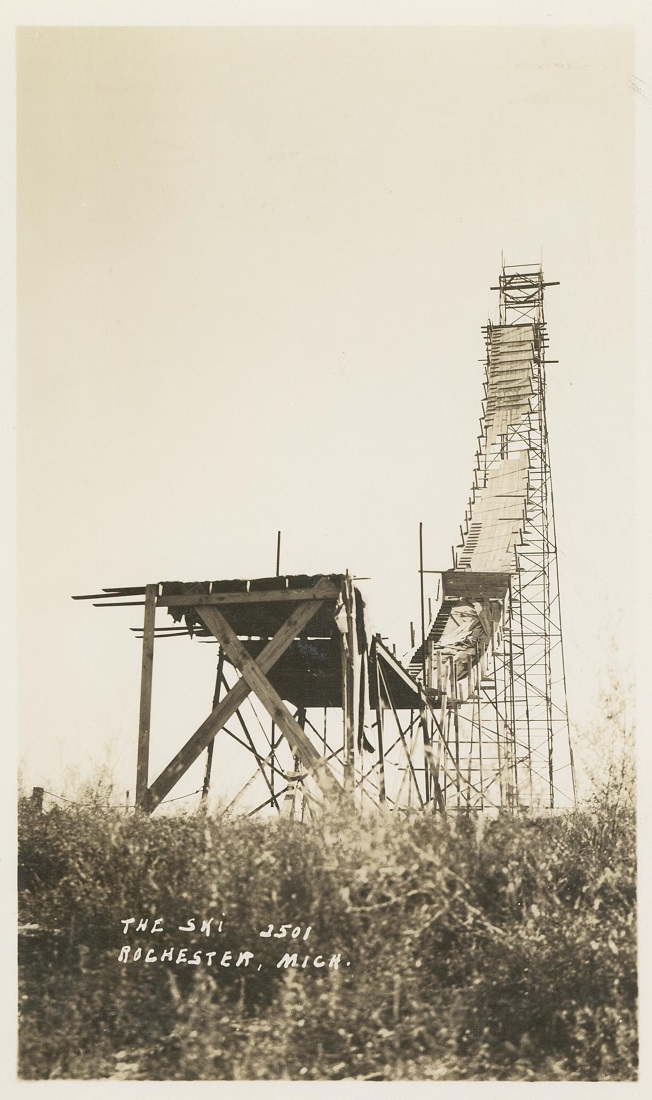
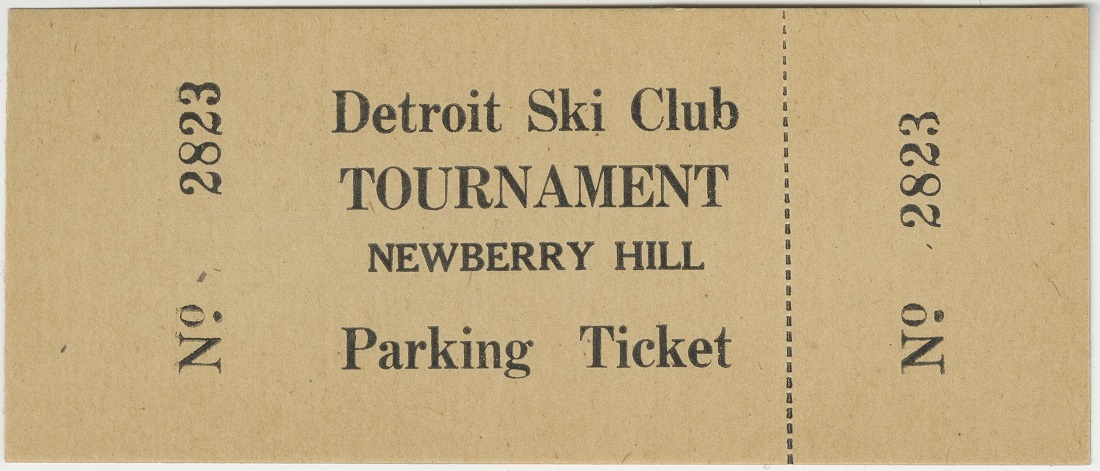
Map of Historical Places
The map below highlights the locations of many of the places mentioned in this exhibit.





